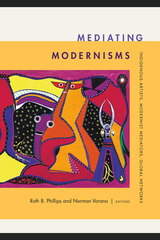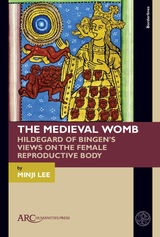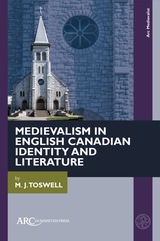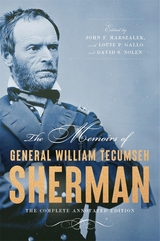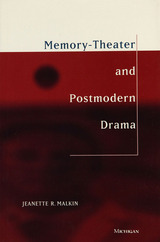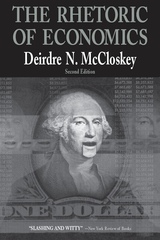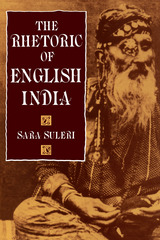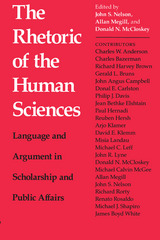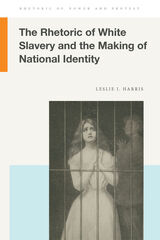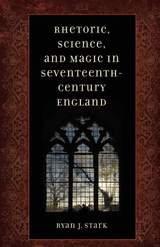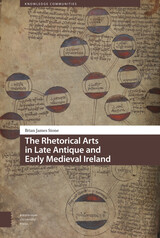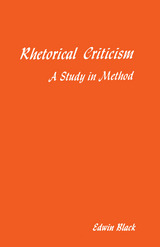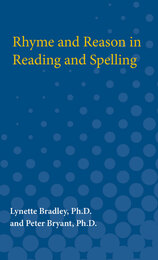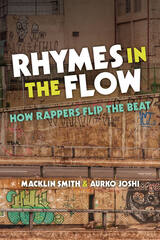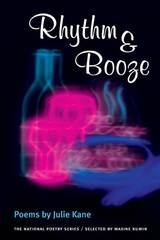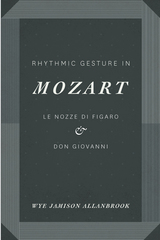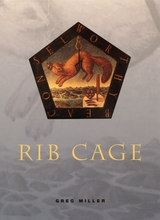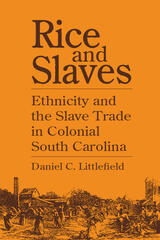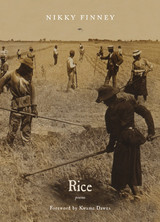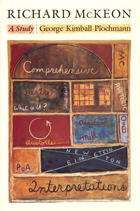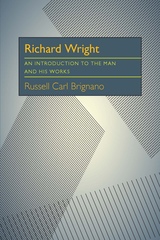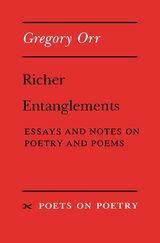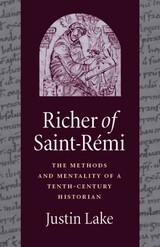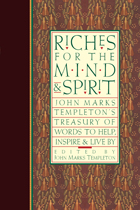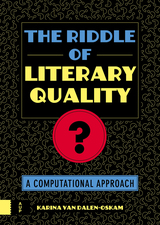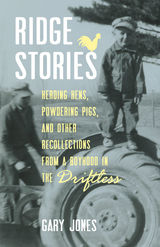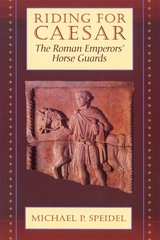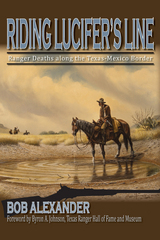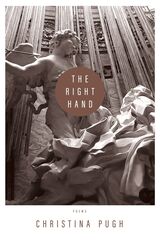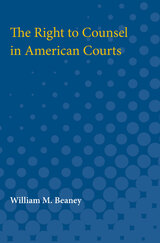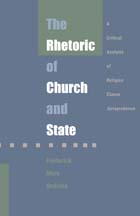 The Rhetoric of Church and State: A Critical Analysis of Religion Clause Jurisprudence
Frederick Mark Gedicks
Duke University Press, 1995 During the middle of the twentieth century, the religiously informed communitarianism that had guided the Supreme Court’s decisions regarding the relationship between church and state was partially displaced by a new secular individualist discourse. In The Rhetoric of Church and State, Frederick Mark Gedicks argues that this partial and incomplete shift is the key to understanding why the Court has failed—and continues today to fail—to provide a coherent doctrine on church/state separation.
Gedicks suggests that the Supreme Court’s inconsistent decisions mirror a divergence in American society between an increasingly secular public culture and the primarily devout private lives of the majority of Americans. He notes that while the Court is committed to principles of secular individualism, it has repeatedly endorsed government actions that violate those principles—actions that would be far more justifiable under the discourse of religious communitarianism. The impossibility of reconciling the two discourses leaves the Court no choice but to efface—often implausibly—the religious nature of practices it deems permissible. Gedicks concludes that the road to a coherent religion clause doctrine lies neither in a return to religious communitarianism nor in its complete displacement by secular individualism, but in a yet-to-be-identified discourse that would attract popular support while protecting a meaningful measure of religious freedom.
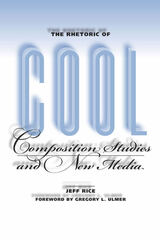 The Rhetoric of Cool: Composition Studies and New Media
Jeff Rice
Southern Illinois University Press, 2007 The Rhetoric of Cool: Composition Studies and New Media offers a historical critique of composition studies’ rebirth narrative, using that critique to propose a new rhetoric for new media work. Author Jeff Rice returns to critical moments during the rebirth of composition studies when the discipline chose not to emphasize technology, cultural studies, and visual writing, which are now fundamental to composition studies. Rice redefines these moments in order to invent a new electronic practice.
The Rhetoric of Cool addresses the disciplinary claim that composition studies underwent a rebirth in 1963. At that time, three writers reviewed technology, cultural studies, and visual writing outside composition studies and independently used the word cool to describe each position. Starting from these three positions, Rice focuses on chora, appropriation, commutation, juxtaposition, nonlinearity, and imagery—rhetorical gestures conducive to new media work-- to construct the rhetoric of cool.
An innovative work that approaches computers and writing issues from historical, critical, theoretical, and practical perspectives, The Rhetoric of Cool challenges current understandings of writing and new media and proposes a rhetorical rather than an instrumental response for teaching writing in new media contexts.
 A Rhetoric of Doing: Essays on Written Discourse in Honor of James L. Kinneavy
Edited by Stephen P. Witte, Neil Nakadate, and Roger D. Cherry
Southern Illinois University Press, 1992 Concerned with both the nature and the practice of discourse, the eighteen essays collected here treat rhetoric as a dynamic enterprise of inquiry, exploration, and application, and in doing so reflect James L. Kinneavy’s firm belief in the vital relationship between theory and practice, his commitment to a spirit of accommodation and assimilation that promotes the development of ever more powerful theories and ever more useful practices. A thorough introduction provides the reader with clear summaries of the essays by leading-edge theorists, researchers, and teachers of writing and rhetoric. A "field context" for the ideas presented in this book is provided through the division of the various chapters into four major sections that focus on classical rhetoric and rhetorical theory in historical contexts; on dimensions of discourse theory, aspects of discourse communities, and the sorts of knowledge people access and use in producing written texts; on writing in school-related contexts; and on several dimensions of nonacademic writing. A fifth section contains a bibliographic survey and an appreciation of James Kinneavy’s work. The exceptional range of these essays makes A Rhetoric of Doing an ecumenical examination of the current state of mind in rhetoric and written communication, a survey and description of what discourse and those in the field of discourse are, in fact, doing.
The Rhetoric of Economics
Deirdre N. McCloskey
University of Wisconsin Press, 1998 A classic in its field, this pathbreaking book humanized the scientific rhetoric of economics to reveal its literary soul. Economics needs to admit that it, like other sciences, works with metaphors and stories. Its most mathematical and statistical moments are properly dominated by comparison and narration, that is to say, human persuasion. The book was McCloskey's opening move in the development of a "humanomics," and unification of the sciences and the humanities on the field of ordinary business life.
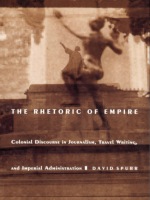 The Rhetoric of Empire: Colonial Discourse in Journalism, Travel Writing, and Imperial Administration
David Spurr
Duke University Press, 1993 The white man's burden, darkest Africa, the seduction of the primitive: such phrases were widespread in the language Western empires used to talk about their colonial enterprises. How this language itself served imperial purposes--and how it survives today in writing about the Third World--are the subject of David Spurr's book, a revealing account of the rhetorical strategies that have defined Western thinking about the non-Western world.
Despite historical differences among British, French, and American versions of colonialism, their rhetoric had much in common. The Rhetoric of Empire identifies these shared features—images, figures of speech, and characteristic lines of argument—and explores them in a wide variety of sources. A former correspondent for the United Press International, the author is equally at home with journalism or critical theory, travel writing or official documents, and his discussion is remarkably comprehensive. Ranging from T. E. Lawrence and Isak Dineson to Hemingway and Naipaul, from Time and the New Yorker to the National Geographic and Le Monde, from journalists such as Didion and Sontag to colonial administrators such as Frederick Lugard and Albert Sarraut, this analysis suggests the degree to which certain rhetorical tactics penetrate the popular as well as official colonial and postcolonial discourse.
Finally, Spurr considers the question: Can the language itself—and with it, Western forms of interpretation--be freed of the exercise of colonial power? This ambitious book is an answer of sorts. By exposing the rhetoric of empire, Spurr begins to loosen its hold over discourse about—and between—different cultures.
The Rhetoric of English India
Sara Suleri Goodyear
University of Chicago Press, 1992 Tracing a genealogy of colonial discourse, Suleri focuses on paradigmatic moments in the multiple stories generated by the British colonization of the Indian subcontinent. Both the literature of imperialism and its postcolonial aftermath emerge here as a series of guilty transactions between two cultures that are equally evasive and uncertain of their own authority.
"A dense, witty, and richly allusive book . . . an extremely valuable contribution to postcolonial cultural studies as well as to the whole area of literary criticism."—Jean Sudrann, Choice
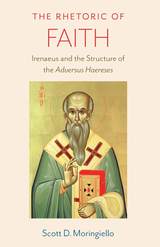 The Rhetoric of Faith: Irenaeus and the Structure of the Adversus Haereses
Scott D. Moringiello
Catholic University of America Press, 2019 The Rhetoric of Faith argues that the structure of Irenaeus’s opus magnum, the Adversus Haereses, is the argument of the Adversus Haereses. Through a close reading of the Irenaeus’s text, as well as through a comparison with Greco-Roman rhetorical texts, Scott Moringiello argues that Irenaeus structured his argument around the articles of the faith of the Church and that this structure builds on tropes found in the Greco-Roman rhetorical tradition.
The argument focuses on the Adversus Haereses, although it does begin with some discussion to put Irenaeus in the context of second century Christian literature. Moringiello concludes with a discussion of Irenaeus’s Demonstration of the Apostolic Preaching.Other scholars have provided introductions to Irenaeus’s work, and other scholars have argued for the structural unity of the Adversus Haereses. No other scholar, though, has argued that the faith of the Church is the basis of Irenaeus’s argument. This argument, then, presents an important contribution to the field of Irenaeus studies.
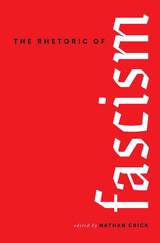 The Rhetoric of Fascism
Edited by Nathan Crick
University of Alabama Press, 2022 Decoding the discourse: Rhetorical foundations of authoritarian power. Fascism has resurfaced as one of the most pressing problems of our time. The rise of extremist parties and candidates in Europe, the United States, and around the globe has led even mainstream political commentators to begin using the term “fascism” to describe dangerous movements that have revived and repackaged many of the strategies long thought to have been relegated to the margins of political rhetoric. No longer just confined to the state regimes of the past, fascism thrives today as a globally self-augmenting, self-propagating rhetorical phenomenon with a variety of faces and expressions.
The Rhetoric of Fascism defines and interprets the common persuasive devices that characterize fascist discourse to understand the nature of its enduring appeal. By approaching fascism from a rhetorical perspective, this volume complements established political and sociological understandings of fascism as a movement or regime. A rhetorical approach studies fascism less as a party one joins than as a set of persuasive strategies one adopts. Fascism spreads precisely because it is not a coherent entity. Instead, it exists as a loosely bound and often contradictory collection of persuasive trajectories that have attained enough coherence to mobilize and channel the passions of a self-constituted mass of individuals.
Introductory chapters focus on general theories of fascism drawn from twentieth-century history and theory. Contributors investigate specific historical figures and their relationship to contemporary rhetorics, focusing on a specific rhetorical device that is characteristic of fascist rhetoric. A common thread throughout every chapter is that fascist devices are appealing because they speak to us in the familiar language of our culture. As we are seduced by one device at a time, we soon find ourselves part of a movement, a group, or a campaign that makes us act in ways we might never have imagined. This volume reveals that fascism may be closer to home than we think.
CONTRIBUTORS
Patrick D. Anderson / Rya Butterfield / Nathan Crick / Elizabeth R. Earle / Zac Gershberg / Stephen J. Hartnett / Marie-Odile N. Hobeika / Sean Illing / Jacob A. Miller / Fernando Ismael Quiñones Valdivia / Patricia Roberts-Miller / Raquel M. Robvais / Bradley A. Serber / Ryan Skinnell
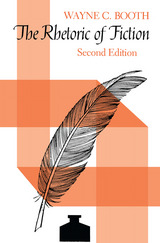 The Rhetoric of Fiction
Wayne C. Booth
University of Chicago Press, 1983 The first edition of The Rhetoric of Fiction transformed the criticism of fiction and soon became a classic in the field. One of the most widely used texts in fiction courses, it is a standard reference point in advanced discussions of how fictional form works, how authors make novels accessible, and how readers recreate texts, and its concepts and terms—such as "the implied author," "the postulated reader," and "the unreliable narrator"—have become part of the standard critical lexicon.
For this new edition, Wayne C. Booth has written an extensive Afterword in which he clarifies misunderstandings, corrects what he now views as errors, and sets forth his own recent thinking about the rhetoric of fiction. The other new feature is a Supplementary Bibliography, prepared by James Phelan in consultation with the author, which lists the important critical works of the past twenty years—two decades that Booth describes as "the richest in the history of the subject."
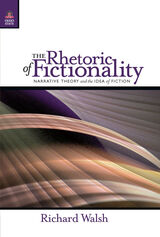 The Rhetoric of Fictionality: Narrative Theory and the Idea of Fiction
Richard Walsh
Ohio State University Press, 2007 Narrative theory has always been centrally concerned with fiction, yet it has tended to treat fictions as if they were merely the framed or disowned equivalents of nonfictional narratives. A rhetorical perspective upon fictionality, however, sees it as a direct way of meaning and a distinct kind of communicative gesture. The Rhetoric of Fictionality: Narrative Theory and the Idea of Fiction by Richard Walsh argues the merit of such a perspective and demonstrates its radical implications for narrative theory. A new conception of fictionality as a distinctive rhetorical resource, somewhat like the master-trope of fictional narrative, cuts across many of the core theoretical issues in the field. The model, set out in chapter one, is subsequently tested and elaborated in relation to currently prevalent assumptions about narrativity and mimesis; narrative structure; the narrator and transmission; voice and mediacy; narrative media and cognition; and creativity, reception, and involvement. Throughout, the theoretical analysis seeks to vindicate readers’ intuitions about fiction without merely restating them: the result is a forceful challenge to many of narrative theory’s orthodoxies. The rhetorical model of fictionality advanced in this book offers up new areas of inquiry into the purchase of fictiveness itself upon questions of narrative interpretation. It urges a fundamental reconception of the apparatus of narrative theory by theorizing the conditions of significance that make fictions conceivable and worthwhile.
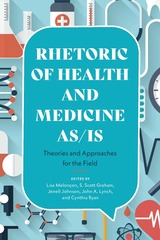 Rhetoric of Health and Medicine As/Is: Theories and Approaches for the Field
Edited by Lisa Melonçon, S. Scott Graham, Jenell Johnson, John A. Lynch, and Cynthia Ryan
Ohio State University Press, 2020 The rhetoric of health and medicine (RHM) is a growing and vibrant area of inquiry incorporating scholars working across a variety of fields and disciplines. While this makes it a source for rich and innovative scholarship, this emerging field is in need of a guiding text that can bring together the disparate work spread across multiple disciplines and institutional spaces. Rhetoric of Health and Medicine As/Is: Theories and Approaches for the Field answers this call by providing an in-depth and wide-reaching analysis of the state of the rhetoric of health and medicine and offering core concepts and critical theories to ground research moving forward. With a foreword by Judy Segal and in sections that address interdisciplinary perspectives, representations of health and illness in online spaces, and health activism and advocacy, this volume proceeds in a unique format: essays tackle these key topic areas through case studies ranging from food and its relation to public health, to apps that track fertility, to mental health and disability, to racial disparities that exist in public health campaigns about sudden infant death syndrome (SIDS). The essays within each section are then followed by responses from prominent scholars in the rhetoric of health and medicine—including John Lyne, J. Blake Scott, and Lisa Keränen—who take on the central theme and discuss how the theory or concept under study can and should evolve in the next stages of research. Unifying the essays is a consideration of RHM as a theoretical construct guiding research and thinking alongside the conceptual parameters that constitute what RHM is and can be in practice. In asking questions about the role of rhetoric—both as analytic and productive framework—in health and medicine, this volume engages with broader theoretical and ethical concerns about our current healthcare system and how healthcare and medical issues circulate in all the social, cultural, economic, and political aspects of our world.
The Rhetoric of Interpretation and the Interpretation of Rhetoric
Paul Hernadi, ed.
Duke University Press, 1989 The essays collected in this volume strongly suggest that the principles and operations of contemporary rhetoric and contemporary interpretation invite being studied in conjunction with each other—that the are, as Paul Hernadi puts it, "siamese twins." Furthermore, a number of the essays suggest that both rhetoric and interpretation ought to be studied in conjunction with the principles and operations characteristic of contemporary descriptions and critiques of ideology.
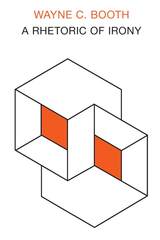 A Rhetoric of Irony
Wayne C. Booth
University of Chicago Press, 1975 Perhaps no other critical label has been made to cover more ground than "irony," and in our time irony has come to have so many meanings that by itself it means almost nothing. In this work, Wayne C. Booth cuts through the resulting confusions by analyzing how we manage to share quite specific ironies—and why we often fail when we try to do so. How does a reader or listener recognize the kind of statement which requires him to reject its "clear" and "obvious" meaning? And how does any reader know where to stop, once he has embarked on the hazardous and exhilarating path of rejecting "what the words say" and reconstructing "what the author means"?
In the first and longer part of his work, Booth deals with the workings of what he calls "stable irony," irony with a clear rhetorical intent. He then turns to intended instabilities—ironies that resist interpretation and finally lead to the "infinite absolute negativities" that have obsessed criticism since the Romantic period.
Professor Booth is always ironically aware that no one can fathom the unfathomable. But by looking closely at unstable ironists like Samuel Becket, he shows that at least some of our commonplaces about meaninglessness require revision. Finally, he explores—with the help of Plato—the wry paradoxes that threaten any uncompromising assertion that all assertion can be undermined by the spirit of irony.
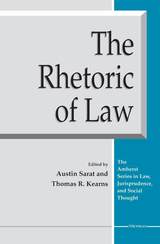 The Rhetoric of Law
Austin Sarat and Thomas R. Kearns, Editors
University of Michigan Press, 1996 Law is a profession of words. Simultaneously celebratory of great prose and dogmatically insistent on precise usage, law is a stage for verbal virtuosity, linguistic mastery, and persuasive argument. Yet the linguistic display is not without substance: the words of law take on a seriousness virtually unparalleled in any other domain of human experience. The Rhetoric of Law examines the words used in legal institutions and proceedings and explores both the literary aspect of legal life and the role of rhetoric in shaping the life of the law.
The essays in The Rhetoric of Law reflect the diverse influences of literary theory, feminism, and interpretive social science. Yet all call into question the rigid separation of rhetoric and justice that has been characteristic of the philosophical inquiry as far back as Plato. As a result, they open the way for a new understanding of law--an understanding that takes language to be neither esoteric nor frivolous and that views rhetoric as essential to the pursuit of justice. This volume provides a bracing reminder of the possibilities and problems of law, of its capacity to engage the best of human character, and of its vulnerability to cynical manipulation. Contributors are Lawrence Douglas, Robert A. Ferguson, Peter Goodrich, Barbara Johnson, Thomas R. Kearns, Austin Sarat, Adam Thurschwell, James Boyd White, and Lucie White.
Austin Sarat is William Nelson Cromwell Professor of Jurisprudence and Political Science, Amherst College. Thomas R. Kearns is William H. Hastie Professor of Philosophy, Amherst College.
Rhetoric of Modern Death in American Living Dead Films
Outi Hakola
Intellect Books, 2015 Zombies, vampires, and mummies are frequent stars of American horror films. But what does their cinematic omnipresence and audiences’ hunger for such films tell us about American views of death? Here, Outi Hakola investigates the ways in which American living-dead films have addressed death through different narrative and rhetorical solutions during the twentieth century. She focuses on films from the 1930s, including Dracula, The Mummy, and White Zombie, films of the 1950s and 1960s such as Night of the Living Dead and The Return of Dracula, and more recent fare like Bram Stoker’s Dracula, The Mummy, and Resident Evil. Ultimately, the book succeeds in framing the tradition of living dead films, discussing the cinematic processes of addressing the films’ viewers, and analyzing the films’ socio-cultural negotiation with death in this specific genre.
 The Rhetoric of Modernist Fiction: From a New Point of View
Morton Levitt
University Press of New England, 2005 Though it has been one of the most influential critical works of the last fifty years, Wayne Booth’s The Rhetoric of Fiction has disappointed many readers in its treatment of modernism. Despite Booth’s astute and influential readings of earlier novels, his system shed little light on the experiments in point of view that characterize many more recent works. Despite a revision some two decades after its first publication, the book continues to strike many readers as outdated in its choices of authors and texts. In a bold updating of that seminal work, Morton P. Levitt, long-time editor of the Journal of Modern Literature, explores the rhetoric of point of view in modernist and post-modernist novels, offering new insights into some of the greatest works of the last century. As the editor of one of the most important journals in the field, Levitt has been uniquely situated to absorb and reflect critically upon the most significant scholarship on modernist fiction. In a series of subtle, persuasive readings, he demonstrates that the rejection of omniscience is one of the defining characteristics of modernist and post-modernist novels. From Joyce and Woolf to Philip Roth, Don DeLillo, and José Saramago, Levitt discusses a wide range of texts in readings that will be accessible to students and invaluable to scholars.
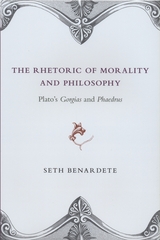 The Rhetoric of Morality and Philosophy: Plato's Gorgias and Phaedrus
Seth Benardete
University of Chicago Press, 1991 The Rhetoric of Morality and Philosophy, one of the most groundbreaking works of twentieth-century Platonic studies, is now back in print for a new generation of students and scholars to discover. In this volume, distinguished classicist Seth Benardete interprets and pairs two important Platonic dialogues, the Gorgias and the Phaedrus, illuminating Socrates’ notion of rhetoric and Plato’s conception of morality and eros in the human soul. Following his discussion of the Gorgias as a dialogue about the rhetoric of morality, Benardete turns to the Phaedrus as a discourse about genuine rhetoric, namely the science of eros, or true philosophy. This novel interpretation addresses numerous issues in Plato studies: the relation between the structure of the Gorgias and the image of soul/city in the Republic, the relation between the structure of Phaedrus and the concept of eros, and Socrates’ notion of ignorance, among others.
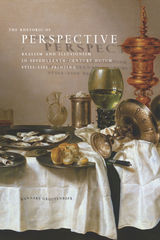 The Rhetoric of Perspective: Realism and Illusionism in Seventeenth-Century Dutch Still-Life Painting
Hanneke Grootenboer
University of Chicago Press, 2005 Perspective determines how we, as viewers, perceive painting. We can convince ourselves that a painting of a bowl of fruit or a man in a room appears to be real by the way these objects are rendered. Likewise, the trick of perspective can prevent us from being absorbed in a scene. Connecting contemporary critical theory with close readings of seventeenth-century Dutch visual culture, The Rhetoric of Perspective puts forth the claim that painting is a form of thinking and that perspective functions as the language of the image. Aided by a stunning full-color gallery, Hanneke Grootenboer proposes a new theory of perspective based on the phenomenological aspects of non-narrative still-life, trompe l'oeil, and anamorphic imagery. Drawing on playful and mesmerizing baroque images, Grootenboer characterizes what she calls their "sophisticated deceit," asserting that painting is more about visual representation than about its supposed objects. Offering an original theory of perspective's impact on pictorial representation, the act of looking, and the understanding of truth in painting, Grootenboer shows how these paintings both question the status of representation and explore the limits and credibility of perception. “An elegant and honourable synthesis.”—Keith Miller, Times Literary Supplement
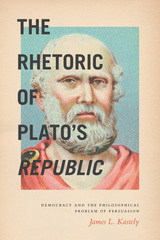 The Rhetoric of Plato's Republic: Democracy and the Philosophical Problem of Persuasion
James L. Kastely
University of Chicago Press, 2015 Plato isn’t exactly thought of as a champion of democracy, and perhaps even less as an important rhetorical theorist. In this book, James L. Kastely recasts Plato in just these lights, offering a vivid new reading of one of Plato’s most important works: the Republic. At heart, Kastely demonstrates, the Republic is a democratic epic poem and pioneering work in rhetorical theory. Examining issues of justice, communication, persuasion, and audience, he uncovers a seedbed of theoretical ideas that resonate all the way up to our contemporary democratic practices.
As Kastely shows, the Republic begins with two interrelated crises: one rhetorical, one philosophical. In the first, democracy is defended by a discourse of justice, but no one can take this discourse seriously because no one can see—in a world where the powerful dominate the weak—how justice is a value in itself. That value must be found philosophically, but philosophy, as Plato and Socrates understand it, can reach only the very few. In order to reach its larger political audience, it must become rhetoric; it must become a persuasive part of the larger culture—which, at that time, meant epic poetry. Tracing how Plato and Socrates formulate this transformation in the Republic, Kastely isolates a crucial theory of persuasion that is central to how we talk together about justice and organize ourselves according to democratic principles.
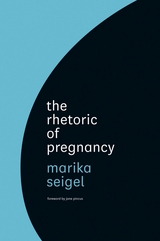 The Rhetoric of Pregnancy
Marika Seigel
University of Chicago Press, 2013 It is a truth widely acknowledged that if you’re pregnant and can afford one, you’re going to pick up a pregnancy manual. From What to Expect When You’re Expecting to Pregnancy for Dummies, these guides act as portable mentors for women who want advice on how to navigate each stage of pregnancy. Yet few women consider the effect of these manuals—how they propel their readers into a particular system of care or whether the manual they choose reflects or contradicts current medical thinking.
Using a sophisticated rhetorical analysis, Marika Seigel works to deconstruct pregnancy manuals while also identifying ways to improve communication about pregnancy and healthcare. She traces the manuals’ evolution from early twentieth-century tomes that instructed readers to unquestioningly turn their pregnancy management over to doctors, to those of the women’s health movement that encouraged readers to engage more critically with their care, to modern online sources that sometimes serve commercial interests as much as the mother’s.
The first book-length study of its kind, The Rhetoric of Pregnancy is a must-read for both users and designers of our prenatal systems—doctors and doulas, scholars and activists, and anyone interested in encouraging active, effective engagement.
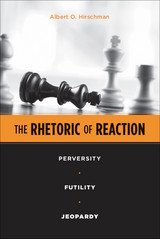 The Rhetoric of Reaction: Perversity, Futility, Jeopardy
Albert O. Hirschman
Harvard University Press, 1991 With engaging wit and subtle irony, Albert Hirschman maps the diffuse and treacherous world of reactionary rhetoric in which conservative public figures, thinkers, and polemicists have been arguing against progressive agendas and reforms for the past two hundred years.
Hirschman draws his examples from three successive waves of reactive thought that arose in response to the liberal ideas of the French Revolution and the Declaration of the Rights of Man, to democratization and the drive toward universal suffrage in the nineteenth century, and to the welfare state in our own century. In each case he identifies three principal arguments invariably used: (1) the perversity thesis, whereby any action to improve some feature of the political, social, or economic order is alleged to result in the exact opposite of what was intended; (2) the futility thesis, which predicts that attempts at social transformation will produce no effects whatever—will simply be incapable of making a dent in the status quo; (3) the jeopardy thesis, holding that the cost of the proposed reform is unacceptable because it will endanger previous hard-won accomplishments. He illustrates these propositions by citing writers across the centuries from Alexis de Tocqueville to George Stigler, Herbert Spencer to Jay Forrester, Edmund Burke to Charles Murray. Finally, in a lightning turnabout, he shows that progressives are frequently apt to employ closely related rhetorical postures, which are as biased as their reactionary counterparts. For those who aspire to the genuine dialogue that characterizes a truly democratic society, Hirschman points out that both types of rhetoric function, in effect, as contraptions designed to make debate impossible. In the process, his book makes an original contribution to democratic thought.
The Rhetoric of Reaction is a delightful handbook for all discussions of public affairs, the welfare state, and the history of social, economic, and political thought, whether conducted by ordinary citizens or academics.
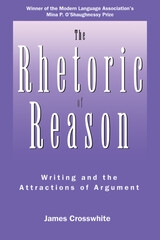 The Rhetoric of Reason: Writing and the Attractions of Argument
James Crosswhite
University of Wisconsin Press, 1996 Responding to skeptics within higher education and critics without, James Crosswhite argues powerfully that the core of a college education should be learning to write a reasoned argument. A trained philosopher and director of a university-wide composition program, Crosswhite challenges his readers—teachers of writing and communication, philosophers, critical theorists, and educational administrators—to reestablish the traditional role of rhetoric in education.
To those who have lost faith in the abilities of people to reach reasoned mutual agreements, and to others who have attacked the right-or-wrong model of formal logic, this book offers the reminder that the rhetorical tradition has always viewed argumentation as a dialogue, a response to changing situations, an exchange of persuading, listening, and understanding. Crosswhite’s aim is to give new purpose to writing instruction and to students’ writing, to reinvest both with the deep ethical interests of the rhetorical tradition. In laying out the elements of argumentation, for example, he shows that claiming, questioning, and giving reasons are not simple elements of formal logic, but communicative acts with complicated ethical features. Students must learn not only how to construct an argument, but the purposes, responsibilities, and consequences of engaging in one.
Crosswhite supports his aims through a rhetorical reconstruction of reason, offering new interpretations of Plato and Aristotle and of the concepts of reflection and dialogue from early modernity through Hegel to Gadamer. And, in his conclusion, he ties these theoretical and historical underpinnings to current problems of higher education, the definition of the liberal arts, and, especially, the teaching of written communication.
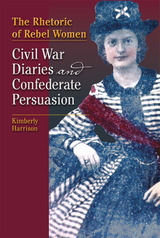 The Rhetoric of Rebel Women: Civil War Diaries and Confederate Persuasion
Kimberly Harrison
Southern Illinois University Press, 2013 During the American Civil War, southern white women found themselves speaking and acting in unfamiliar and tumultuous circumstances. With the war at their doorstep, women who supported the war effort took part in defining what it meant to be, and to behave as, a Confederate through their verbal and nonverbal rhetorics. Though most did not speak from the podium, they viewed themselves as participants in the war effort, indicating that what they did or did not say could matter. Drawing on the rich evidence in women’s Civil War diaries, The Rhetoric of Rebel Women recognizes women’s persuasive activities as contributions to the creation and maintenance of Confederate identity and culture. Informed by more than one hundred diaries, this study provides insight into how women cultivated rhetorical agency, challenging traditional gender expectations while also upholding a cultural status quo. Author Kimberly Harrison analyzes the rhetorical choices these women made and valued in wartime and postwar interactions with Union officers and soldiers, slaves and former slaves, local community members, and even their God. In their intimate accounts of everyday war, these diarists discussed rhetorical strategies that could impact their safety, their livelihoods, and those of their families. As they faced Union soldiers in attempts to protect their homes and property, diarists saw their actions as not only having local, immediate impact on their well-being but also as reflecting upon their cause and the character of the southern people as a whole. They instructed themselves through their personal writing, allowing insight into how southern women prepared themselves to speak and act in new and contested contexts.
The Rhetoric of Rebel Women highlights the contributions of privileged white southern women in the development of the Confederate national identity, presenting them not as passive observers but as active participants in the war effort.
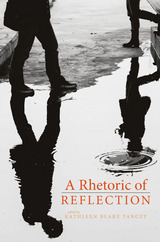 A Rhetoric of Reflection
Kathleen Yancey
Utah State University Press, 2016 Reflection in writing studies is now entering a third generation. Dating from the 1970s, the first generation of reflection focused on identifying and describing internal cognitive processes assumed to be part of composing. The second generation, operating in both classroom and assessment scenes in the 1990s, developed mechanisms for externalizing reflection, making it visible and thus explicitly available to help writers. Now, a third generation of work in reflection is emerging.
As mapped by the contributors to A Rhetoric of Reflection, this iteration of research and practice is taking up new questions in new sites of activity and with new theories. It comprises attention to transfer of writing knowledge and practice, teaching and assessment, portfolios, linguistic and cultural difference, and various media, including print and digital. It conceptualizes conversation as a primary reflective medium, both inside and outside the classroom and for individuals and collectives, and articulates the role that different genres play in hosting reflection. Perhaps most important in the work of this third generation is the identification and increasing appreciation of the epistemic value of reflection, of its ability to help make new meanings, and of its rhetorical power—for both scholars and students.
Contributors: Anne Beaufort, Kara Taczak, Liane Robertson, Michael Neal, Heather Ostman, Cathy Leaker, Bruce Horner, Asao B. Inoue, Tyler Richmond, J. Elizabeth Clark, Naomi Silver, Christina Russell McDonald, Pamela Flash, Kevin Roozen, Jeff Sommers, Doug Hesse
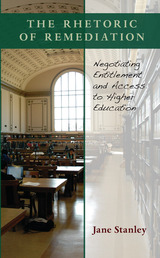 The Rhetoric of Remediation
Jane Stanley
University of Pittsburgh Press, 2010 American universities have long professed dismay at the writing proficiency levels of entrants, and the volume of this complaint has been directly correlated to social, political, or economic currents. Many universities, in their rhetoric, have defined high need for remediation as a crisis point in order to garner state funding or to manage admissions.
In The Rhetoric of Remediation, Jane Stanley examines the statements and actions made regarding remediation at the University of California, Berkeley (Cal). Since its inception in 1868, university rhetoric has served to negotiate the tensions between an ethic of access and the assertion of elite status. Great care has been taken to promote the politics of public accessibility, yet in its competition for standing among other institutions, Cal has been publicly critical of the “underpreparedness” of many entrants. Early on, Cal developed programs to teach “Subject A” (Composition) to the vast number of students who lacked basic writing skills.
Stanley documents the evolution of the university's “rhetoric of remediation” at key moments in its history, such as: the early years of “open gate” admissions; the economic panic of the late 1800s and its effect on enrollment; Depression-era battles over funding and the creation of a rival system of regional state colleges; the GI Bill and ensuing post-WWII glut in enrollments; the “Red Scare” and its attacks on faculty, administrators, and students; the Civil Rights Movement and the resultant changes to campus politics; sexist admission policies and a de facto male-quota system; accusations of racism in the instruction of Asian Americans during the 1970s; the effects of an increasing number of students, beginning in the 1980s, for whom English was a second language; and the recent development of the College Writing Program which combined freshmen composition with Subject A instruction, in an effort to remove the concept of remediation altogether.
Setting her discussion within the framework of American higher education, Stanley finds that the rhetorical phenomenon of “embrace-and-disgrace” is not unique to Cal, and her study encourages compositionists to evaluate their own institutional practices and rhetoric of remediation for the benefit of both students and educators.
The Rhetoric of Science
Alan Gross
Harvard University Press, 1996 Alan Gross applies the principles of rhetoric to the interpretation of classical and contemporary scientific texts to show how they persuade both author and audience. This invigorating consideration of the ways in which scientists--from Copernicus to Darwin to Newton to James Watson--establish authority and convince one another and us of the truth they describe may very well lead to a remodeling of our understanding of science and its place in society.
 The Rhetoric of Seeing in Attic Forensic Oratory
By Peter A. O'Connell
University of Texas Press, 2017 In ancient Athenian courts of law, litigants presented their cases before juries of several hundred citizens. Their speeches effectively constituted performances that used the speakers’ appearances, gestures, tones of voice, and emotional appeals as much as their words to persuade the jury. Today, all that remains of Attic forensic speeches from the fifth and fourth centuries BCE are written texts, but, as Peter A. O’Connell convincingly demonstrates in this innovative book, a careful study of the speeches’ rhetoric of seeing can bring their performative aspect to life. Offering new interpretations of a wide range of Athenian forensic speeches, including detailed discussions of Demosthenes’ On the False Embassy, Aeschines’ Against Ktesiphon, and Lysias’ Against Andocides, O’Connell shows how litigants turned the jurors’ scrutiny to their advantage by manipulating their sense of sight. He analyzes how the litigants’ words work together with their movements and physical appearance, how they exploit the Athenian preference for visual evidence through the language of seeing and showing, and how they plant images in their jurors’ minds. These findings, which draw on ancient rhetorical theories about performance, seeing, and knowledge as well as modern legal discourse analysis, deepen our understanding of Athenian notions of visuality. They also uncover parallels among forensic, medical, sophistic, and historiographic discourses that reflect a shared concern with how listeners come to know what they have not seen.
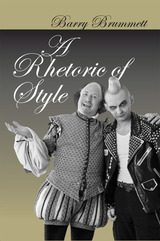 A Rhetoric of Style
Barry Brummett
Southern Illinois University Press, 2008 Exploring style in a global culture
In A Rhetoric of Style, Barry Brummett illustrates how style is increasingly a global system of communication as people around the world understand what it means to dress a certain way, to dance a certain way, to decorate a certain way, to speak a certain way. He locates style at the heart of popular culture and asserts that it is the basis for social life and politics in the twenty-first century.
Brummett sees style as a system of signification grounded largely in image, aesthetics, and extrarational modes of thinking. He discusses three important aspects of this system—its social and commercial structuring, its political consequences, and its role as the chief rhetorical system of the modern world. He argues that aesthetics and style are merging into a major engine of the global economy and that style is becoming a way to construct individual identity, as well as social and political structures of alliance and opposition. It is through style that we stereotype or make assumptions about others’ political identities, their sexuality, their culture, and their economic standing. To facilitate theoretical and critical analysis, Brummett develops a systematic rhetoric of style and then demonstrates its use through an in-depth exploration of gun culture in the United States. Armed with an understanding of how this rhetoric of style works methodologically, students and scholars alike will have the tools to do their own analyses. Written in clear and engaging prose, A Rhetoric of Style presents a novel discussion of the workings of style and sheds new light on a venerable and sometimes misunderstood rhetorical concept by illustrating how style is the key to constructing a rhetoric for the twenty-first century.
Rhetoric Of The Human Sciences: Language And Argument In Scholarship And Public Affairs
John S. Nelson
University of Wisconsin Press, 1990 Opening with an overview of the renewal of interest in rhetoric for inquiries of all kinds, this volume addresses rhetoric in individual disciplines—mathematics, anthropology, psychology, economics, sociology, political science, and history. Two essays draw from recent literary theory to suggest the contribution of the humanities to the rhetoric of inquiry, and several essays explore communications beyond the academy, particularly in women’s issues, religion, and law. The final essays speak from the field of communication studies, where the study of rhetoric usually makes its home.
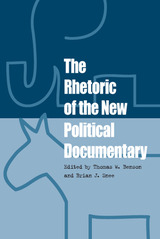 The Rhetoric of the New Political Documentary
Edited by Thomas W. Benson and Brian J. Snee
Southern Illinois University Press, 2008 The Rhetoric of the New Political Documentary explores the most visible and volatile element in the 2004 presidential campaign—the partisan documentary film. This collection of original critical essays by leading scholars and critics—including Shawn J. and Trevor Parry-Giles, Jennifer L. Borda, and Martin J. Medhurst—analyzes a selection of political documentaries that appeared during the 2004 election season. The editors examine the new political documentary with the tools of rhetorical criticism, combining close textual analysis with a consideration of the historical context and the production and reception of the films. The essays address the distinctive rhetoric of the new political documentary, with the films typically having been shot with relatively low budgets, in video, and using interviews and stock footage rather than observation of uncontrolled behavior. The quality was often good enough and interest was sufficiently intense that the films were shown in theaters and on television, which provided legitimacy and visibility before they were released soon afterwards on DVD and VHS and marketed on the Internet. The volume reviews such films as Michael Moore’s Fahrenheit 9/11; two refutations of Moore’s film, Fahrenhype 9/11 and Celsius 41.11;Unprecedented: The 2000 Presidential Election; and George W. Bush: Faith in the White House—films that experimented with a variety of angles and rhetorics, from a mix of comic disparagement and earnest confrontation to various emulations of traditional news and documentary voices. The Rhetoric of the New Political Documentary represents the continued transformation of American political discourse in a partisan and contentious time and showcases the independent voices and the political power brokers that struggled to find new ways to debate the status quo and employ surrogate “independents” to create a counterrhetoric.
The Rhetoric of the "Other" Literature
W. Ross Winterowd
Southern Illinois University Press, 1990
Using traditional and contemporary rhetorical theory, Winterowd argues that the fiction-nonfiction division of literature is unjustified and destructive.
He would bridge the gap between literary scholars and rhetoricians by including both fiction (imaginative literature) and nonfiction (literature of fact) in the canon. The actual difference in literary texts, he notes, lies not in their factuality but in their potential for eliciting an aesthetic response.
With speech act and rhetorical theory as a basis, Winterowd argues that presentational literature gains its power on the basis of its ethical and pathetic appeal, not because of its assertions or arguments.
The Rhetoric of White Slavery and the Making of National Identity
Leslie J Harris
Michigan State University Press, 2023 At the turn of the twentieth century, the white slavery panic pervaded American politics, influencing the creation of the FBI, the enactment of immigration law, and the content of international treaties. At the core of this controversy was the maintenance of white national space. In this comprehensive account of the Progressive Era’s sex trafficking rhetoric, Leslie Harris demonstrates the centrality of white womanhood, as a symbolic construct, to the structure of national space and belonging. Introducing the framework of the mobile imagination to read across different scales of the controversy—ranging from local to transnational—she establishes how the imaginative possibilities of mobility within public controversy work to constitute belonging in national space.
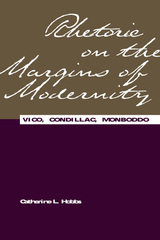 Rhetoric on the Margins of Modernity: Vico, Condillac, Monboddo
Catherine L. Hobbs
Southern Illinois University Press, 2002 Changes in English studies today, particularly the rise of cultural studies, have forced reexaminations of historical genealogies. Three complex figures whose places are currently being reassessed include the Neapolitan Giambattista Vico (1668 –1744), the Frenchman Etienne de Condillac (1714 –1780), and the Scotsman James Burnet(t), Lord Monboddo (1714 –1799) in our histories of communication, linguistics, English studies, and now rhetoric. In Rhetoric on the Margins of Modernity: Vico, Condillac, Monboddo, Catherine L. Hobbs focuses primarily on these three key figures in whose work rhetoric and linguistics intertwine as they respond to emerging attitudes and values of science and philosophy in the eighteenth century. Through her examination of works of Vico, Condillac, Monboddo and other marginal figures, Hobbs presents a different and more nuanced view of the transformation of rhetoric from classical to modern. In order to redefine each figure’s position, Hobbs brings together the histories of linguistics, literature, rhetoric, and communication, rather than leaving them isolated in separate disciplines. She examines each figure’s theory of language origin and development as it has motivated their rhetorical theories. The result is Rhetoric on the Margins of Modernity: Vico, Condillac, Monboddo, an original and significant account of the formation of modern rhetoric.
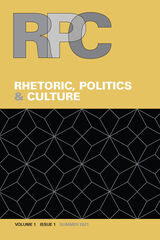 Rhetoric, Politics & Culture 1, no. 1
Carmen Kynard
Michigan State University Press Journals, 2021 In This Issue
Carmen Kynard and Bryan J. McCann, “Editors’ Introduction”
Article
Eric King Watts, “The Primal Scene of COVID-19: ‘We’re All in this Together’”
Forum: Rhetoric, Politics, and Culture in Perilous Times
V. Jo Hsu , “Toward QTPOC Community: A Theory in the Flesh, an Open Letter, a Closing Wound”
EunYoung Lee, “A Rhetorician Who Doesn’t Have Her Own Words to Speak”
Susana Martínez Guillem, “Sacando la Lengua in Rhetorical Theory and Criticism”
Atilla Hallsby, “Intimate Spaces of Mental Wellness”
Dakota J. Sandras, “The Voice of Honor: Centering an Indigenous Ethic of Protocol in Ongoing Perilous Times”
Teigha Mae VanHester, “‘In a 90s Kind of World, I’m Glad I Got My Girls’: Living Single and One Fat, Black, Intellectual Queen’s Quest to Bring Flavor to the Academy”
Matthew Houdek and Ersula J. Ore, “Cultivating Otherwise Worlds and Breathable Futures”
Ashley Noel Mack and Tiara R. Na’puti, “Publicity as Containment”
Rhetoric in Review
“Stories of Antiracist Theory, Instruction, and Practice: A Review Essay”: April Baker-Bell, Linguistic Justice: Black Language, Literacy, Identity, and Pedagogy, Aja Y. Martinez,
Counterstory: The Rhetoric and Writing of Critical Race Theory, and Louis M. Maraj, Black or Right: Anti/Racist Campus Rhetorics, reviewed by José Luis Cano Jr.
William Saas, Maxximilian Seijo, and Scott Ferguson, Money on the Left podcast, reviewed by Kate Siegfried
Rhetoric, Politics & Culture Sponsoring Members
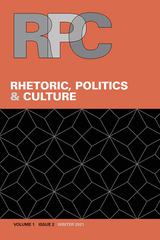 Rhetoric, Politics & Culture 1, no. 2
Carmen Kynard
Michigan State University Press Journals, 2022 In This Issue
Carmen Kynard and Bryan J. McCann, “Editors’ Introduction”
Articles
Romeo García, “Unsettling Church(-)Settler Ideas, Images, and Ends”
Christa J. Olson, “Nuestras Reliquías Históricas” and the Rhetorical Work of Objects at Machu Picchu”
Manuel Lujan Cruz, “News Media Complicity in the Reproduction of Settler Colonial Ideology in Guåhan”
Nicholas Paliewicz, “De/Linking Copper: Masking and Unmasking Extractive Coloniality at Chi’chil Biłdagoteel (Oak Flat)”
John M. Sloop, “‘The (Always Already Unrealizable) Fairytale’: Ear Hustle, The (Black) Family, and the Entrepreneurial Self ”
Randy Allen Harris, “Jagmeet’s Kairotic Challenge: Darkface, Turbans, and Hypocrisy Upwards”
S. Marek Muller and Z. Zane McNeill, “Toppling the Temple of Grandin: Autistic-Animal Analogies and the Ableist-Speciesist Nexus”
Rhetoric in Review
James L. Cherney, Ableist Rhetoric: How We Know, Value, and See Disability, reviewed by Emily Krebs
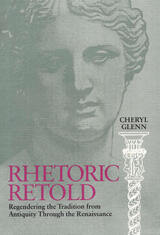 Rhetoric Retold: Regendering the Tradition from Antiquity Through the Renaissance
Cheryl Glenn
Southern Illinois University Press, 1997 After explaining how and why women have been excluded from the rhetorical tradition from antiquity through the Renaissance, Cheryl Glenn provides the opportunity for Sappho, Aspasia, Diotima, Hortensia, Fulvia, Julian of Norwich, Margery Kempe, Margaret More Roper, Anne Askew, and Elizabeth I to speak with equal authority and as eloquently as Plato, Aristotle, Cicero, and Augustine. Her aim is nothing less than regendering and changing forever the history of rhetoric. To that end, Glenn locates women’s contributions to and participation in the rhetorical tradition and writes them into an expanded, inclusive tradition. She regenders the tradition by designating those terms of identity that have promoted and supported men’s control of public, persuasive discourse—the culturally constructed social relations between, the appropriate roles for, and the subjective identities of women and men. Glenn is the first scholar to contextualize, analyze, and follow the migration of women’s rhetorical accomplishments systematically. To locate these women, she follows the migration of the Western intellectual tradition from its inception in classical antiquity and its confrontation with and ultimate appropriation by evangelical Christianity to its force in the medieval Church and in Tudor arts and politics.
Rhetoric, Science, and Magic in Seventeenth-century England
Ryan J. Stark
Catholic University of America Press, 2009 Ryan J. Stark presents a spiritually sensitive, interdisciplinary, and original discussion of early modern English rhetoric. He shows specifically how experimental philosophers attempted to disenchant language
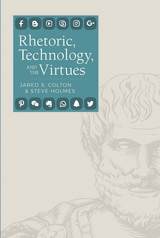 Rhetoric, Technology, and the Virtues
Jared S. Colton
Utah State University Press, 2018 Rhetoric, Technology, and the Virtues offers a framework for theorizing ethics in digital and networked media. While the field of rhetoric and writing studies has traditionally given attention to Plato’s Gorgias and Phaedrus dialogues, this volume updates Aristotle’s basic framework of hexis for the digital age. According to Aristotle, “When men change their hexeis—their dispositions, habits, comportments, and so on, in relation to an activity—they change their thought.”
Rhetoric, Technology, and the Virtues argues that virtue ethics supports postmodern criticisms of rational autonomy and universalism while also enabling a discussion of the actual ethical behaviors that digital users form through their particular communicative ends and various rhetorical purposes. Authors Jared Colton and Steve Holmes extend Aristotle’s hexis framework through contemporary virtue ethicists and political theorists whose writing works from a tacit virtue ethics framework. They examine these key theorists through a range of case studies of digital habits of human users, including closed captioning, trolling, sampling, remixing, gamifying for environmental causes, and using social media, alongside a consideration of the ethical habits of nonhuman actors.
Tackling a needed topic with clarity and defined organization, Rhetoric, Technology, and the Virtues carefully synthesizes various strands of ethical thinking, convincingly argues that virtue ethics is a viable framework for digital rhetoric, and provides a practical way to assess the changing hexeis encountered across the network of ethical situations in the digital world.
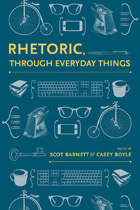 Rhetoric, Through Everyday Things
Edited by Scot Barnett and Casey Boyle
University of Alabama Press, 2016 A fascinating addition to rhetoric scholarship, Rhetoric, Through Everyday Things expands the scope of rhetorical situations beyond the familiar humanist triad of speaker-audience-purpose to an inclusive study of inanimate objects.
The fifteen essays in Rhetoric, Through Everyday Things persuasively overturn the stubborn assumption that objects are passive tools in the hands of objective human agents. Rhetoric has proved that forms of communication such as digital images, advertising, and political satires do much more than simply lie dormant, and Rhetoric, Through Everyday Things shows that objects themselves also move, circulate, and produce opportunities for new rhetorical publics and new rhetorical actions. Objects are not simply inert tools but are themselves vibrant agents of measurable power.
Organizing the work of leading and emerging rhetoric scholars into four broad categories, the collection explores the role of objects in rhetorical theory, histories of rhetoric, visual rhetoric, literacy studies, rhetoric of science and technology, computers and writing, and composition theory and pedagogy. A rich variety of case studies about objects such as women’s bicycles in the nineteenth century, the QWERTY keyboard, and little free libraries ground this study in fascinating, real-life examples and build on human-centered approaches to rhetoric to consider how material elements—human and nonhuman alike—interact persuasively in rhetorical situations.
Taken together, Rhetoric, Through Everyday Things argues that the field of rhetoric’s recent attention to material objects should go further than simply open a new line of inquiry. To maximize the interdisciplinary turn to things, rhetoricians must seize the opportunity to reimagine and perhaps resolve rhetoric’s historically problematic relationship to physical reality and ontology. By tapping the rich resource of inanimate agents such as "fish, political posters, plants, and dragonflies,” rhetoricians can more fully grasp the rhetorical implications at stake in such issues.
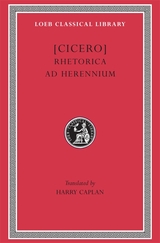 Rhetorica ad Herennium
Cicero
Harvard University Press Spurious composition.
Cicero (Marcus Tullius, 106–43 BC), Roman lawyer, orator, politician, and philosopher, of whom we know more than of any other Roman, lived through the stirring era that saw the rise, dictatorship, and death of Julius Caesar in a tottering republic. In his political speeches especially and in his correspondence we see the excitement, tension and intrigue of politics and the part he played in the turmoil of the time. Of about 106 speeches, delivered before the Roman people or the Senate if they were political, before jurors if judicial, fifty-eight survive (a few of them incompletely). In the fourteenth century Petrarch and other Italian humanists discovered manuscripts containing more than 900 letters of which more than 800 were written by Cicero and nearly 100 by others to him. These afford a revelation of the man all the more striking because most were not written for publication. Six rhetorical works survive and another in fragments. Philosophical works include seven extant major compositions and a number of others; and some lost. There is also poetry, some original, some as translations from the Greek.
The Loeb Classical Library edition of Cicero is in twenty-nine volumes.
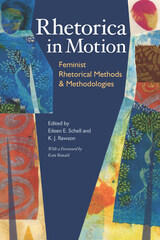 Rhetorica in Motion: Feminist Rhetorical Methods and Methodologies
Eileen E Schell
University of Pittsburgh Press, 2010
Rhetorica in Motion is the first collected work to investigate feminist rhetorical research methods in both contemporary and historical contexts. The contributors analyze the decision-making processes and methodologies employed in deciphering the origins, meanings, theories, workings, and manifestations of feminist rhetoric.
The volume examines familiar themes, such as archival, literary, and online research, but also looks to other areas of rhetoric, such as disability studies; gerontology/aging studies; Latina/o, queer, and transgender studies; performance studies; and transnational feminisms in both the United States and larger geopolitical spaces. Rhetorica in Motion incorporates previous views of feminist research, outlines a set of principles that guides current methods, and develops models for undertaking future inquiry, including working as individuals or balancing the dynamics of group research. The text explores how feminist research embodies what has come before and reflects what researchers, institutions, and instructors bring to it and what it brings to them. Underlying the discovery of this volume is the understanding that feminist rhetoric is in constant motion in a dynamic that resists definition.
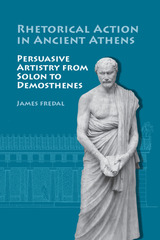 Rhetorical Action in Ancient Athens: Persuasive Artistry from Solon Demosthenes
James Fredal
Southern Illinois University Press, 2006 James Fredal’s wide-ranging survey examines the spatial and performative features of rhetorical artistry in ancient Athens from Solon to Demosthenes, demonstrating how persuasive skill depended not on written treatises, but on the reproduction of spaces and modes for masculine self-formation and displays of contests of character. Studies of the history of rhetoric generally begin with Homer and Greek orality, then move on to fifth-century Sicily and the innovations of Corax, Tisias, and the older Sophists. While thorough and useful, these narratives privilege texts as the sole locus of proper rhetorical knowledge. Rhetorical Action in Ancient Greece:Persuasive Artistry from Solon to Demosthenes describes rhetoric as largely unwritten and rhetorical skill as closely associated with the ideologies and practices of gender formation and expression. In expanding the notion of rhetorical innovation to include mass movements, large social genres, and cultural practices—rather than the formulations of of individual thinkers and writers—Fredal offers a view of classical rhetoric as local and contingent, bound to the physical spaces, local histories, and cultural traditions of place. Fredal argues that Greek rhetorical skill remained a function of local spaces like the Pnyx, social practices such as symposia or local meetings, cultural ideologies like those surrounding masculine friendship, and genres of performance such as how to act like a man, herald, sage, tyrant, or democrat. Citizen participation, he explains, was motivated by the desire to display masculine excellence in contests of character by overcoming fear and exerting symbolic and bodily control over self, situation, and audience. He shows how ancient Greek rhetoric employed patterns of “action” such as public oratory and performance to establish, reinforce, or challenge hierarchies and claims to political power. Instead of examining speeches, handbooks, and theory, Rhetorical Action in Ancient Greece examines the origins of rhetoric in terms of performance. The result is a presentation of rhetorical knowledge as embodied in places and practices with spatial and practical logics that are rarely articulated in written discourse. The volume calls on archaeological, literary, and anthropological evidence about the rhetorical actions of Athens’s leading political agents—including Solon, Peisistratus, Cleisthenes, Demosthenes, and the anonymous “herm-choppers” of the Peloponnesian war—to demonstrate how each generation of political leaders adopted and transformed existing performance genres and spaces to address their own political exigency.
The Rhetorical Arts in Late Antique and Early Medieval Ireland
Brian James Stone
Amsterdam University Press, 2022 The Rhetorical Arts in Late Antique and Early Medieval Ireland represents the first study of the art of rhetoric in medieval Ireland, a culture often neglected by medieval rhetorical studies. In a series of three case studies, Brian James Stone traces the textual transmission of rhetorical theories and practices from the late Roman period to those early Irish monastic communities who would not only preserve and pass on the light of learning, but adapt an ancient tradition to their own cultural needs, contributing to the history of rhetoric in important ways. The manuscript tradition of early Ireland, which gave us the largest body of vernacular literature in the medieval period and is already appreciated for its literary contributions, is also a site of rhetorical innovation and creative practice.
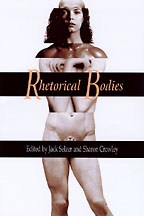 Rhetorical Bodies
Jack Selzer
University of Wisconsin Press, 1999 What significance does the physical, material body still have in a world of virtual reality and genetic cloning? How do technology and postmodern rhetoric influence our understanding of the body? And how can our discussion of the body affect the way we handle crises in public policy—the politics of race and ethnicity; issues of "family values" that revolve around sexual and gender identities; the choices revolving around reproduction and genome projects, and the spread of disease? Leading scholars in rhetoric and communication, as well as literary and cultural studies, address some of the most important topics currently being discussed in the human sciences. The essays collected here suggest the wide range of public arenas in which rhetoric is operative—from abortion clinics and the World Wide Web to the media's depiction of illiteracy and the Donner Party. These studies demonstrate how the discourse of AIDS prevention or Demi Moore's "beautiful pregnancy" call to mind the physical nature of being human and the ways in which language and other symbols reflect and create the physical world.
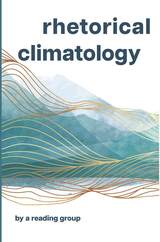 Rhetorical Climatology: By A Reading Group
Chris Ingraham
Michigan State University Press, 2023 What if rhetoric and climate are intimately connected? Taking climates to be rhetorical and rhetoric to be climatic, A Reading Group offers a generative framework for making sense of rhetorical studies as they grapple with the challenges posed by antiracist, decolonial, affective, ecological, and more-than-human scholarship to a tradition with a long history of being centered around individual, usually privileged, human agents wielding language as their principal instrument. Understanding the atmospheric and ambient energies of rhetoric underscores the challenges and promises of trying to heal a harmed world from within it. A cowritten “multigraph,” which began in 2018 as a reading group, this book enacts an intimate, mutualistic spirit of shared critical inquiry and play—an exciting new way of doing, thinking, and feeling rhetorical studies by six prominent scholars in rhetoric from communication and English departments alike.
 Rhetorical Code Studies: Discovering Arguments in and around Code
Kevin Brock
University of Michigan Press, 2019 Winner of the 2017 Sweetland Digital Rhetoric Collaborative Book Prize Software developers work rhetorically to make meaning through the code they write. In some ways, writing code is like any other form of communication; in others, it proves to be new, exciting, and unique. In Rhetorical Code Studies, Kevin Brock explores how software code serves as meaningful communication through which software developers construct arguments that are made up of logical procedures and express both implicit and explicit claims as to how a given program operates. Building on current scholarly work in digital rhetoric, software studies, and technical communication, Brock connects and continues ongoing conversations among rhetoricians, technical communicators, software studies scholars, and programming practitioners to demonstrate how software code and its surrounding discourse are highly rhetorical forms of communication. He considers examples ranging from large, well-known projects like Mozilla Firefox to small-scale programs like the “FizzBuzz” test common in many programming job interviews. Undertaking specific examinations of code texts as well as the contexts surrounding their composition, Brock illuminates the variety and depth of rhetorical activity taking place in and around code, from individual differences in style to changes in large-scale organizational and community norms. Rhetorical Code Studies holds significant implications for digital communication, multimodal composition, and the cultural analysis of software and its creation. It will interest academics and students of writing, rhetoric, and software engineering as well as technical communicators and developers of all types of software.
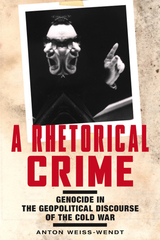 A Rhetorical Crime: Genocide in the Geopolitical Discourse of the Cold War
Weiss-Wendt, Anton
Rutgers University Press, 2018 The Genocide Convention was drafted by the United Nations in the late 1940s, as a response to the horrors of the Second World War. But was the Genocide Convention truly effective at achieving its humanitarian aims, or did it merely exacerbate the divisive rhetoric of Cold War geopolitics?
A Rhetorical Crime shows how genocide morphed from a legal concept into a political discourse used in propaganda battles between the United States and the Soviet Union. Over the course of the Cold War era, nearly eighty countries were accused of genocide, and yet there were few real-time interventions to stop the atrocities committed by genocidal regimes like the Cambodian Khmer Rouge.
Renowned genocide scholar Anton Weiss-Wendt employs a unique comparative approach, analyzing the statements of Soviet and American politicians, historians, and legal scholars in order to deduce why their moral posturing far exceeded their humanitarian action.
Rhetorical Criticism: A Study In Method
Edwin Black
University of Wisconsin Press, 1978 Winner, Speech Communication Association Award for Distinguished Scholarship
This is a book that, almost singlehandedly, freed scholars from the narrow constraints of a single critical paradigm and created a new era in the study of public discourse. Its original publication in 1965 created a spirited controversy. Here Edwin Black examines the assumptions and principles underlying neo-Aristotelian theory and suggests an alternative approach to criticism, centering around the concept of the "rhetorical transaction." This new edition, containing Black's new introduction, will enable students and scholars to secure a copy of one of the most influential books ever written in the field.
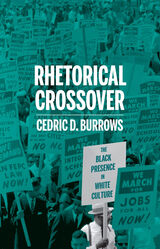 Rhetorical Crossover: The Black Presence in White Culture
Cedric D. Burrows
University of Pittsburgh Press, 2020 Winner, 2021 NCTE David H. Russell Award
In music, crossover means that a song has moved beyond its original genre and audience into the general social consciousness. Rhetorical Crossover uses the same concept to theorize how the black rhetorical presence has moved in mainstream spaces in an era where African Americans were becoming more visible in white culture. Cedric Burrows argues that when black rhetoric moves into the dominant culture, white audiences appear welcoming to African Americans as long as they present an acceptable form of blackness for white tastes. The predominant culture has always constructed coded narratives on how the black rhetorical presence should appear and behave when in majority spaces. In response, African Americans developed their own narratives that revise and reinvent mainstream narratives while also reaffirming their humanity. Using an interdisciplinary model built from music, education, film, and social movement studies, Rhetorical Crossover details the dueling narratives about African Americans that percolate throughout the United States.
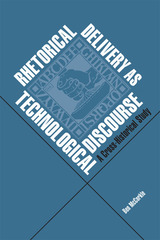 Rhetorical Delivery as Technological Discourse: A Cross-Historical Study
Ben McCorkle
Southern Illinois University Press, 2012 According to Ben McCorkle, the rhetorical canon of delivery—traditionally seen as the aspect of oratory pertaining to vocal tone, inflection, and physical gesture—has undergone a period of renewal within the last few decades to include the array of typefaces, color palettes, graphics, and other design elements used to convey a message to a chosen audience. McCorkle posits that this redefinition, while a noteworthy moment of modern rhetorical theory, is just the latest instance in a historical pattern of interaction between rhetoric and technology. In Rhetorical Delivery as Technological Discourse: A Cross-Historical Study, McCorkle explores the symbiotic relationship between delivery and technologies of writing and communication. Aiming to enhance historical understanding by demonstrating how changes in writing technology have altered our conception of delivery, McCorkle reveals the ways in which oratory and the tools of written expression have directly affected one another throughout the ages. To make his argument, the author examines case studies from significant historical moments in the Western rhetorical tradition. Beginning with the ancient Greeks, McCorkle illustrates how the increasingly literate Greeks developed rhetorical theories intended for oratory that incorporated “writerly” tendencies, diminishing delivery’s once-prime status in the process. Also explored is the near-eradication of rhetorical delivery in the mid-fifteenth century—the period of transition from late manuscript to early print culture—and the implications of the burgeoning print culture during the nineteenth century. McCorkle then investigates the declining interest in delivery as technology designed to replace the human voice and gesture became prominent at the beginning of the 1900s. Situating scholarship on delivery within a broader postmodern structure, he moves on to a discussion of the characteristics of contemporary hypertextual and digital communication and its role in reviving the canon, while also anticipating the future of communication technologies, the likely shifts in attitude toward delivery, and the implications of both on the future of teaching rhetoric. Rhetorical Delivery as Technological Discourse traces a long-view perspective of rhetorical history to present readers a productive reading of the volatile treatment of delivery alongside the parallel history of writing and communication technologies. This rereading will expand knowledge of the canon by not only offering the most thorough treatment of the history of rhetorical delivery available but also inviting conversation about the reciprocal impacts of rhetorical theory and written communication on each other throughout this history.
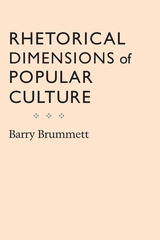 Rhetorical Dimensions Of Popular Culture
Barry Brummett
University of Alabama Press, 1991 Supports the argument that rhetoric needs to be conceptualized as the social function that influences and manages meaning Through history, rhetoric has been understood as the art of verbal influence. This art took various forms and was put to diverse uses. Rhetoric has usually been regarded as the kind of extended verbal discourse found in the public speech, the essay, the letter, or belles lettres, a discourse often founded on reasoned argument in support of propositions. This conception of rhetoric as propositional, verbal text persisted through ages in which public controversy primarily took oral or written form: words spoken or committed to print. Issues were debated and decisions were formed verbally; the word was the agency for managing public business. But today the dominance of the extended text and the well-supported line of argument is fading. Public discourse may be embodied in as many words as it was in 1860, but the words take rather different forms. Presidential candidates speak more than they ever have, but campaigns depend increasingly on the twenty-second “sound bite” targeted for the evening news (Hart, 1987). A public that once read newspapers, listened to radios and to the Chautauqua speaker, or conversed on front porches is increasingly turning to various forms of video for information and entertainment. The place and time of rhetoric are moving inexorably from specific locales in which issues are debated, into the more general context of popular culture. In other words, rhetoric as a distinct social practice carried out during concentrated periods of speaking and listening, or reading and writing, is dissipating into a noisy environment teeming with messages. Rhetorical studies as an academic discipline is responding to these changes in rhetorical practice by augmenting its traditional concerns for extended verbal texts (e.g., Medhurst & Benson, 1984). Students of rhetoric have recently examined the “rhetoric” of the streets, cartoons, and popular music. This book joins those efforts by theorists to conceptualize a kind of rhetoric that is less verbal, or “textual,” and more integrated into popular culture than is the rhetoric of Edmund Burke, Abraham Lincoln, and Franklin Roosevelt. The public as well as the academy needs a way to understand the rhetorical dimensions of popular culture.
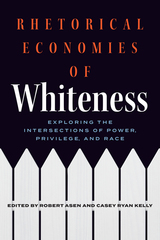 Rhetorical Economies of Whiteness: Exploring the Intersections of Power, Privilege, and Race
Edited by Robert Asen and Casey Ryan Kelly
Ohio State University Press, 2024 Rhetorical Economies of Whiteness examines the interplay of rhetoric, whiteness, and economics—attending not only to how economic arrangements that sustain whiteness are rhetorically enacted and legitimated but also to how rhetoric itself operates as an economy to give identities exchange value. Case studies across the volume illustrate how economic and class structures incentivize adherence to whiteness as both an identity formation and a form of symbolic capital. Some contributors investigate issues of public policy—analyzing judicial appointments, housing, and education—while others explore intersections of politics, sports, news and entertainment media, and culture. Wide-ranging, complementary methods—textual and discourse analysis, archival approaches, ethnographic interviewing and focus groups, personal narratives and storytelling—exemplify the insights gleaned from different approaches to studying intersections of race and economics across and within societies. Taken together, these essays help to explain how whiteness so quickly adapts to evade antiracist challenges and why investments in whiteness are so difficult to dislodge.
Contributors:
Godfried Asante, Robert Asen, Charles Athanasopoulos, Paulami Banerjee, Anne Bonds, Linsay M. Cramer, Derek G. Handley, V. Jo Hsu, Kelly Jensen, Casey Ryan Kelly, Kyle R. Larson, George (Guy) F. McHendry Jr., Thomas K. Nakayama, Adedoyin Ogunfeyimi, Rico Self, Stacey K. Sowards, Corinne Mitsuye Sugino
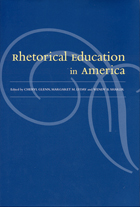 Rhetorical Education In America
Cheryl Jean Glenn
University of Alabama Press, 2009 A timely collection of essays by prominent scholars in the field—on the past, present, and future of rhetoric instruction. From Isocrates and Aristotle to the present, rhetorical education has consistently been regarded as the linchpin of a participatory democracy, a tool to foster civic action and social responsibility. Yet, questions of who should receive rhetorical education, in what form, and for what purpose, continue to vex teachers and scholars. The essays in this volume converge to explore the purposes, problems, and possibilities of rhetorical education in America on both the undergraduate and graduate levels and inside and outside the academy. William Denman examines the ancient model of the "citizen-orator" and its value to democratic life. Thomas Miller argues that English departments have embraced a literary-research paradigm and sacrificed the teaching of rhetorical skills for public participation. Susan Kates explores how rhetoric is taught at nontraditional institutions, such as Berea College in Kentucky, where Appalachian dialect is espoused. Nan Johnson looks outside the academy at the parlor movement among women in antebellum America. Michael Halloran examines the rhetorical education provided by historical landmarks, where visitors are encouraged to share a common public discourse. Laura Gurak presents the challenges posed to traditional notions of literacy by the computer, the promises and dangers of internet technology, and the necessity of a critical cyber-literacy for future rhetorical curricula. Collectively, the essays coalesce around timely political and cross-disciplinary issues. Rhetorical Education in America serves to orient scholars and teachers in rhetoric, regardless of their disciplinary home, and help to set an agenda for future classroom practice and curriculum design.
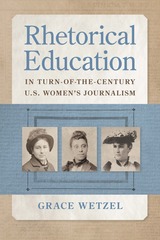 Rhetorical Education in Turn-of-the-Century U.S. Women's Journalism
Grace Wetzel, with a foreword by Shari J. Stenberg
Southern Illinois University Press, 2022 Examining the rhetorical and pedagogical work of three turn-of-the-century newspaperwomen
At the end of the nineteenth century, newspapers powerfully shaped the U.S. reading public, fostering widespread literacy development and facilitating rhetorical education. With new opportunities to engage audiences, female journalists repurposed the masculine tradition of journalistic writing by bringing together intimate forms of rhetoric and pedagogy to create innovative new dialogues. Rhetorical Education in Turn-of-the-Century U.S. Women’s Journalism illuminates the pedagogical contributions of three newspaperwomen to show how the field became a dynamic site of public participation, relationship building, education, and activism in the 1880s and 1890s.
Grace Wetzel introduces us to the work of Omaha correspondent Susette La Flesche Tibbles (Inshta Theamba), African American newspaper columnist Gertrude Bustill Mossell, and white middle-class reporter Winifred Black (“Annie Laurie”). Journalists by trade, these three writers made the mass-circulating newspaper their site of teaching and social action, inviting their audiences and communities—especially systematically marginalized voices—to speak, write, and teach alongside them.
Situating these journalists within their own specific writing contexts and personas, Wetzel reveals how Mossell promoted literacy learning and community investment among African American women through a reader-centered pedagogy; La Flesche modeled relational news research and reporting as a survivance practice while reporting for the Omaha Morning World-Herald at the time of the Wounded Knee Massacre; and Black inspired public writing and activism among children from different socioeconomic classes through her “Little Jim” story. The teachings of these figures serve as enduring examples of how we can engage in meaningful public literacy and ethical journalism.
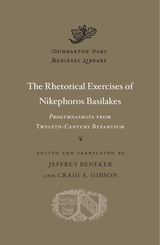 The Rhetorical Exercises of Nikephoros Basilakes: Progymnasmata from Twelfth-Century Byzantium
Nikephoros Basilakes
Harvard University Press, 2016 Progymnasmata, preliminary exercises in the study of declamation, were the cornerstone of elite education from Hellenistic through Byzantine times. Using material from Greek literary, mythological, and historical traditions, students and writers composed examples ranging from simple fables to complex arguments about fictional laws. In the Byzantine period, the spectrum of source material expanded to include the Bible and Christian hagiography and theology.
This collection was written by Nikephoros Basilakes, imperial notary and teacher at the prestigious Patriarchal School in Constantinople during the twelfth century. In his texts, Basilakes made significant use of biblical themes, especially in character studies—known as ethopoeiae—featuring King David, the Virgin Mary, and Saint Peter. The Greek exercises presented here, translated into English for the first time, shed light on education under the Komnenian emperors and illuminate literary culture during one of the most important epochs in the long history of the Byzantine Empire.
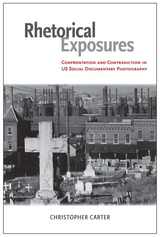 Rhetorical Exposures: Confrontation and Contradiction in US Social Documentary Photography
Christopher Carter
University of Alabama Press, 2015 Documentary photography aims to capture the material reality of life. In Rhetorical Exposures, Christopher Carter demonstrates how the creation and display of documentary photographs—often now called “imagetexts”—both invite analysis and raise persistent questions about the political and social causes for the bleak scenes of poverty and distress captured on film.
Carter’s carefully reasoned monograph examines both formal qualities of composition and the historical contexts of the production and display of documentary photographs. In Rhetorical Exposures, Carter explores Jacob Riis’s heartrending photos of Manhattan’s poor in late nineteenth-century New York, Walker Evans’s iconic images of tenant farmers in west Alabama, Ted Streshinsky’s images of 1960s social movements, Camilo José Vergara’s photographic landscapes of urban dereliction in the 1970s, and Chandra McCormick’s portraits of New Orleans’s Ninth Ward scarred by Hurricane Katrina.
While not ascribing specifically political or Marxist intentions to the photographers discussed, Carter frames his arguments in a class-based dialectic that addresses material want as an ineluctable result of social inequality. Carter argues that social documentary photography has the powerful capacity to disrupt complacent habits of viewing and to prompt viewers to confront injustice. Though photography may induce socially disruptive experiences, it remains vulnerable to the same power dynamics it subverts. Therefore, Carter offers a “rhetoric of exposure” that outlines how such social documentary images can be treated as highly tensioned rhetorical objects. His framework enables the analysis of photographs as heterogeneous records of the interaction of social classes and expressions of specific built environments. Rhetorical Exposures also discusses how photographs interact with oral and print media and relate to creations as diverse as public memorials, murals, and graphic novels.
As the creation and dissemination of new media continues to evolve in an environment of increasing anxiety about growing financial inequality, Rhetorical Exposures offers a very apt and timely discussion of the ways social documentary photography is created, employed, and understood.
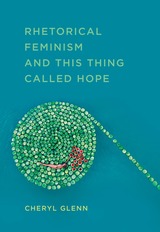 Rhetorical Feminism and This Thing Called Hope
Cheryl Glenn
Southern Illinois University Press, 2018 Rhetoric and feminism have yet to coalesce into a singular recognizable field. In this book, author Cheryl Glenn advances the feminist rhetorical project by introducing a new theory of rhetorical feminism. Clarifying how feminist rhetorical practices have given rise to this innovative approach, Rhetorical Feminism and This Thing Called Hope equips the field with tools for a more expansive and productive dialogue.
Glenn’s rhetorical feminism offers an alternative to hegemonic rhetorical histories, theories, and practices articulated in Western culture. This alternative theory engages, addresses, and supports feminist rhetorical practices that include openness, authentic dialogue and deliberation, interrogation of the status quo, collaboration, respect, and progress. Rhetorical feminists establish greater representation and inclusivity of everyday rhetors, disidentification with traditional rhetorical practices, and greater appreciation for alternative means of delivery, including silence and listening. These tenets are supported by a cogent reconceptualization of the traditional rhetorical appeals, situating logos alongside dialogue and understanding, ethos alongside experience, and pathos alongside valued emotion.
Threaded throughout the book are discussions of the key features of rhetorical feminism that can be used to negotiate cross-boundary mis/understandings, inform rhetorical theories, advance feminist rhetorical research methods and methodologies, and energize feminist practices within the university. Glenn discusses the power of rhetorical feminism when applied in classrooms, the specific ways it inspires and sustains mentoring, and the ways it supports administrators, especially directors of writing programs. Thus, the innovative theory of rhetorical feminism—a theory rich with tactics and potentially broad applications—opens up a new field of research, theory, and practice at the intersection of rhetoric and feminism.
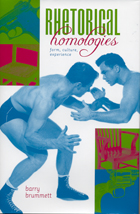 Rhetorical Homologies: Form, Culture, Experience
Barry Brummett
University of Alabama Press, 2009 A highly developed study of the relationships between rhetoric and public culture. One of the most widely used ideas in scholarship of the humanities and social sciences is that of homology: a formal pattern structuring different kinds of texts, ideas, and experiences. Rhetorical Homologies explores the central meaning of this form in a variety of discourses and also examines the kind of homologies that shape audience responses to personal, public, and political issues. Barry Brummett is most interested in homologies among very different orders of experience and texts: experiences on the battlefield that are homologous to those at a dining room table, for instance. What the common patterns that underlie such cases mean, why they are interesting, and why homology is rhetorical are the subjects of this study. Brummett focuses on a wide range of topics, from the homologies between rhetoric and weapons throughout history to the homology of ritual injuries as manifested in representations of Christian martyrs, Laurel and Hardy films, the African-American practice of playing the dozens, and televised professional wrestling. Brummett also explores the homology of the Wise Woman, using rhetorical representations of Sojourner Truth and Oprah Winfrey. In a concluding chapter, Brummett argues that the idea of homology is important in understanding how social life is organized in general and that the centrality of discourse in organizing experience makes rhetorical homologies an important perspective for general knowledge beyond the boundaries of this study.
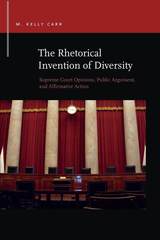 The Rhetorical Invention of Diversity: Supreme Court Opinions, Public Arguments, and Affirmative Action
M. Kelly Carr
Michigan State University Press, 2018 Despite the tepid reception of Regents of the University of California v. Bakke in 1978, the Supreme Court has thrice affirmed its holding: universities can use race as an admissions factor to achieve the goal of a diverse student body. This book examines the process of rhetorical invention followed by Justice Lewis F. Powell Jr., his colleagues, and other interlocutors as they sifted through arguments surrounding affirmative action policies to settle on diversity as affirmative action’s best constitutional justification. Here M. Kelly Carr explores the goals, constraints, and argumentative tools of the various parties as they utilized the linguistic resources available to them, including arguments about race, merit, and the role of the public university in civic life. Using public address texts, legal briefs, memoranda, and draft opinions, Carr looks at how public arguments informed the amicus briefs, chambers memos, and legal principles before concluding that Powell’s pragmatic decision making fused the principle of individualism with an appreciation of multiculturalism to accommodate his colleagues’ differing opinions. She argues that Bakke is thus a legal and rhetorical milestone that helped to shift the justificatory grounds of race-conscious policy away from a recognition of historical discrimination and its call for reparative equality, and toward an appreciation of racial diversity.
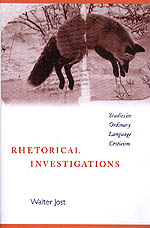 Rhetorical Investigations: Studies in Ordinary Language Criticism
Walter Jost
University of Virginia Press, 2004 In Rhetorical Investigations Walter Jost juxtaposes problems and questions in philosophy and literature, using rhetoric as the middle term and common ground between them. Drawing on the work of Ludwig Wittgenstein and Stanley Cavell, among others, Jost joins a small band of contemporary literary critics who are rethinking theory beyond the apriorism of much poststructuralism and its built-in reading against the grain. By elaborating an "ordinary language criticism" stabilized in grammatical and rhetorical possibilities of language rather than in empirical actualities, Jost shows how literary critics at all levels, from the undergraduate to the sophisticated theorist, "pose" as they read, trying out "performances" of the words as claims to self-knowledge as well as cultural critique.
In the second half of the book, Jost examines the "low modernist" poetry of Robert Frost, finding in Frost's work a "scene of instruction" through which underappreciated resources for criticism can be recovered in the traditions of rhetoric, hermeneutics, pragmatism, and ordinary language philosophy.
Rhetorical Investigations promises no convenient methods and no simple answers to questions of meaning in literature; instead, it proposes a criticism whose origins are the natural language we all speak and whose value rests on illuminating our language games in poetry, philosophy, and everyday life.
--------------------------------------------------------------------------------
Walter Jost, Professor of English at the University of Virginia, is the author of Rhetorical Thought in John Henry Newman and has edited several books, most recently (with Wendy Olmsted) A Companion to Rhetorical Criticism.
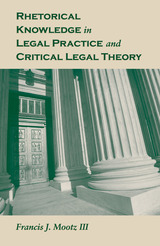 Rhetorical Knowledge in Legal Practice and Critical Legal Theory
Francis J. Mootz III
University of Alabama Press, 2006 A clear summary of contemporary rhetorical philosophy and its intersections with hermeneutics and critical theory This book describes the significance of rhetorical knowledge for law through detailed discussions of some of the most difficult legal issues facing courts today, including affirmative action, gay rights, and assisted suicide.
Francis J. Mootz responds to both extremes, those who argue that law is merely a rhetorical mask for the exercise of power and those who demonstrate an ideological faith in law’s autonomy, and he breaks new ground by returning to modern classics in the fields of rhetoric and hermeneutics. Drawing from Chaim Perelman's "new rhetoric" and Hans-Georg Gadamer's "philosophical hermeneutics," Mootz argues that justice is a product of rhetorical knowledge. Drawing from Nietzsche, Mootz’s conception of rhetorical knowledge opens up the dynamic possibilities of critical legal theory.
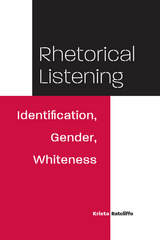 Rhetorical Listening: Identification, Gender, Whiteness
Krista Ratcliffe
Southern Illinois University Press, 2005 Winner, Rhetorical Society of America Book Award, 2007 Winner, CCCC Outstanding Book Award, 2007 Winner, Gary A. Olson Award for Rhetoric and Cultural Studies, 2006
Extending the feminist rhetorical project to define and model rhetorical listening Long-ignored within rhetoric and composition studies, listening has returned to the disciplinary radar. Rhetorical Listening: Identification, Gender, Whiteness argues that rhetorical listening facilitates conscious identifications needed for cross-cultural communication. Krista Ratcliffe establishes eavesdropping, listening metonymically, and listening pedagogically as approaches to rhetorical listening. She defines and models rhetorical listening, addressing identifications with gender and whiteness within public debates, scholarship, and pedagogy. Offering an approach grounded in classical rhetorical theory, Heideggerian theory, feminist theory, and critical race theory, Ratcliffe presents rhetorical listening as an invention tactic that engages spoken and written texts and supplements reading, writing, speaking, and silence as a rhetorical art. Theorizing intersections of gender and whiteness, Rhetorical Listening examines how whiteness functions as an "invisible" racial category and provides disciplinary and cultural reasons for the displacement of listening and for the use of rhetorical listening as a code of cross-cultural conduct. Ratcliffe presents rhetorical listening in terms of cultural logics, stances, and dominant interpretive tropes. She highlights the modern identification theory of Kenneth Burke and the postmodern identification and disidentification theory of Diana Fuss and presents nonidentification as a more productive site for rhetorical listening.
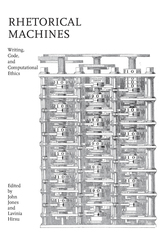 Rhetorical Machines: Writing, Code, and Computational Ethics
Edited by John Jones and Lavinia Hirsu
University of Alabama Press, 2019 A landmark volume that explores the interconnected nature of technologies and rhetorical practice
Rhetorical Machines addresses new approaches to studying computational processes within the growing field of digital rhetoric. While computational code is often seen as value-neutral and mechanical, this volume explores the underlying, and often unexamined, modes of persuasion this code engages. In so doing, it argues that computation is in fact rife with the values of those who create it and thus has powerful ethical and moral implications. From Socrates’s critique of writing in Plato’s Phaedrus to emerging new media and internet culture, the scholars assembled here provide insight into how computation and rhetoric work together to produce social and cultural effects.
This multidisciplinary volume features contributions from scholar-practitioners across the fields of rhetoric, computer science, and writing studies. It is divided into four main sections: “Emergent Machines” examines how technologies and algorithms are framed and entangled in rhetorical processes, “Operational Codes” explores how computational processes are used to achieve rhetorical ends, “Ethical Decisions and Moral Protocols” considers the ethical implications involved in designing software and that software’s impact on computational culture, and the final section includes two scholars’ responses to the preceding chapters. Three of the sections are prefaced by brief conversations with chatbots (autonomous computational agents) addressing some of the primary questions raised in each section.
At the heart of these essays is a call for emerging and established scholars in a vast array of fields to reach interdisciplinary understandings of human-machine interactions. This innovative work will be valuable to scholars and students in a variety of disciplines, including but not limited to rhetoric, computer science, writing studies, and the digital humanities.
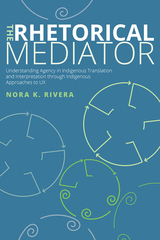 The Rhetorical Mediator: Understanding Agency in Indigenous Translation and Interpretation through Indigenous Approaches to UX
Nora K. Rivera
Utah State University Press, 2023 The Rhetorical Mediator reveals how and why scholars and user experience (UX) researchers can include Indigenous technical communicators and oral interpretation practices in their interdisciplinary conversations. Nora Rivera analyzes the challenges that Indigenous interpreters and translators face in Peru, Mexico, and the United States as a means of understanding their agency and examines the various ways in which technical and professional communication, translation and interpreting studies, and UX research can better support the practices of Indigenous interpreters and translators.
In places where Indigenous language translation and interpretation are greatly needed, Indigenous language mediators often lack adequate systems to professionalize their field while withstanding Western practices that do not align with their worldviews. Through a “design thinking” methodology based on her work organizing and participating in an Indigenous-focused interpreter and translator conference, Rivera examines testimonios and semi-structured interviews conducted with Indigenous interpreters and translators to emphasize dialogue and desahogo (emotional release) as Indigenous communication practices.
The Rhetorical Mediator advocates for Indigenous language practices that have been sidelined by Western scholarship and systems, helping to create more equitable processes to directly benefit Indigenous individuals and other underrepresented groups. This book benefits specialists, including UX researchers, technical and professional communicators, interpreters and translators, and Indigenous professionals, as well as academics teaching graduate and undergraduate methods, Indigenous rhetoric and translation, and UX courses.
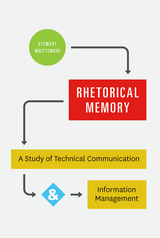 Rhetorical Memory: A Study of Technical Communication and Information Management
Stewart Whittemore
University of Chicago Press, 2015 Institutions have regimes—policies that typically come from the top down and are meant to align the efforts of workers with the goals and mission of an institution. Institutions also have practices—day-to-day behaviors performed by individual workers attempting to interpret the institution’s missives. Taken as a whole, these form a company’s memory regime, and they have a significant effect on how employees analyze, mix, translate, sort, filter, and repurpose everyday information in order to meet the demands of their jobs, their customers, their colleagues, and themselves.
In Rhetorical Memory, Stewart Whittemore demonstrates that strategies we use to manage information—techniques often acquired through trial and error, rarely studied, and generally invisible to us—are as important to our success as the end products of our work. First, he situates information management within the larger field of rhetoric, showing that both are tied to purpose, audience, and situation. He then dives into an engaging and tightly focused workplace study, presenting three cases from a team of technical communicators making use of organizational memory during their everyday work. By examining which techniques succeed and which fail, Whittemore illuminates the challenges faced by technical communicators. He concludes with a number of practical strategies to better organize information, that will help employees, managers, and anyone else suffering from information overload.
Rhetorical Questions: Studies of Public Discourse
Edwin Black
University of Chicago Press, 1992 From classical antiquity through the Renaissance, rhetoric was the prime vehicle of education in the West and the discipline that prepared students for civic life. With a comprehensiveness drawn from this tradition, Edwin Black here probes the incongruities between form and substance that open public discourse to significant interpretation.
Locating rhetorical studies at the confluence of literature and politics, Black focuses on the ideological component of seemingly literary texts and the use of literary devices to advance political advocacy. The essays collected here range in subject matter from nineteenth-century oratory to New York Times editorials to the rhetoric of Richard Nixon. Unifying the collection are the concerns of secrecy and disclosure, identity, opposition, the scope of argument in public persuasion, and the historical mutability of rhetorical forms.
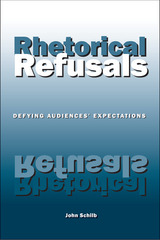 Rhetorical Refusals: Defying Audiences' Expectations
John Schilb
Southern Illinois University Press, 2007 The first book to explore rhetorical refusals—instances in which speakers and writers deliberately flout the conventions of rhetoric and defy their audiences’ expectations— Rhetorical Refusals: Defying Audiences’ Expectations challenges the reader to view these acts of academic rebellion as worthy of deeper analysis than they are commonly accorded, as rhetorical refusals can simultaneously reveal unspoken assumptions behind the very conventions they challenge, while also presenting new rhetorical strategies. Through a series of case studies, John Schilb demonstrates the deeper meanings contained within rhetorical refusals: when dance critic Arlene Croce refused to see a production that she wrote about; when historian Deborah Lipstadt declined to debate Holocaust deniers; when President Bill Clinton denied a grand jury answers to their questions; and when Frederick Douglass refused to praise Abraham Lincoln unequivocally. Each of these unexpected strategies revealed issues of much greater importance than the subjects at hand. By carefully laying out an underlying framework with which to evaluate these acts, Schilb shows that they can variously point to the undue privilege of authority; the ownership of truth; the illusory divide between public and private lives; and the subjectivity of honor. According to Schilb, rhetorical refusals have the potential to help political discourse become more inventive. To demonstrate this potential, Schilb looks at some notable cases in which invitations have led to unexpected results: comedian Stephen Colbert’s brazen performance at the White House Press Association dinner; poet Sharon Olds’s refusal to attend the White House Book Fair, and activist Cindy Sheehan’s display of an anti-war message at the 2006 State of the Union Address. Rhetorical Refusals explores rhetorical theories in accessible language without sacrificing complexity and nuance, revealing the unspoken implications of unexpected deviations from rhetorical norms for classic political concepts like free debate and national memory. With case studies taken from art, politics, literature, and history, this book will appeal to scholars and students of English, communication studies, and history.
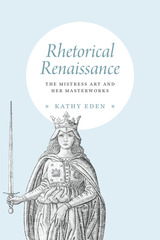 Rhetorical Renaissance: The Mistress Art and Her Masterworks
Kathy Eden
University of Chicago Press, 2022 Kathy Eden reveals the unexplored classical rhetorical theory at the heart of iconic Renaissance literary works.
Kathy Eden explores the intersection of early modern literary theory and practice. She considers the rebirth of the rhetorical art—resulting from the rediscovery of complete manuscripts of high-profile ancient texts about rhetoric by Plato, Aristotle, Cicero, Quintilian, and Tacitus, all unavailable before the early fifteenth century—and the impact of this art on early modern European literary production. This profound influence of key principles and practices on the most widely taught early modern literary texts remains largely and surprisingly unexplored.
Devoting four chapters to these practices—on status, refutation, similitude, and style—Eden connects the architecture of the most widely read classical rhetorical manuals to the structures of such major Renaissance works as Petrarch’s Secret, Castiglione’s Book of the Courtier, Erasmus’s Antibarbarians and Ciceronianus, and Montaigne’s Essays. Eden concludes by showing how these rhetorical practices were understood to work together to form a literary masterwork, with important implications for how we read these texts today.
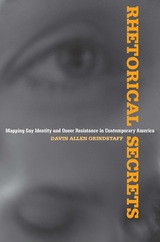 Rhetorical Secrets: Mapping Gay Identity and Queer Resistance in Contemporary America
Davin Allen Grindstaff
University of Alabama Press, 2006 Davin Allen Grindstaff, through a series of close textual analyses examining public discourse, uncovers the rhetorical modes of persuasion surrounding the construction of gay male sexual identity. In Part One, Grindstaff establishes his notion of the "rhetorical secret" central to constructions of gay male identity: the practice of sexual identity as a secret, its promise of a coherent sexual self, and the perpetuation of secrecy as a product and strategy of heteronormative discourse. Grindstaff continues in Part Two to examine major issues related to contemporary conceptions of gay male identity: overturning sodomy laws; public debates over same-sex marriages; medical and social responses to the HIV/AIDS crisis; the rhetorical power of hyper-masculine body images and homoeroticism to creative communities; and, finally, what Grindstaff considers to be the most mysterious and significant rhetorical practice of all: coming out of the closet. By investigating the public discourse--texts and images that circulate, produce knowledge, and become means of persuasion--surrounding the constructions of sexual identity, Grindstaff challenges heteronormative concepts of sexuality itself, thus creating new maps of social power and new paths of resistance.
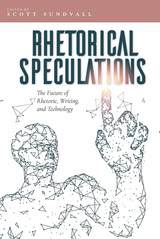 Rhetorical Speculations: The Future of Rhetoric, Writing, and Technology
Scott Sundvall
Utah State University Press, 2019 The future of writing studies is fundamentally tied to advancing technological development—writing cannot be done without a technology and different technologies mediate writing differently. In Rhetorical Speculations, contributors engage with emerging technologies of composition through “speculative modeling” as a strategy for anticipatory, futural thinking for rhetoric and writing studies.
Rhetoric and writing studies often engages technological shifts reactively, after the production and reception of rhetoric and writing has changed. This collection allows rhetoric and writing scholars to explore modes of critical speculation into the transformative effect of emerging technologies, particularly as a means to speculate on future shifts in the intellectual, pedagogical, and institutional frameworks of the field. In doing so, the project repositions rhetoric and writing scholars as proprietors of our technological future to come rather than as secondary receivers, critics, and adjusters of the technological present.
Major and emerging voices in the field offer a range of styles that include pragmatic, technical, and philosophical approaches to the issue of speculative rhetoric, exploring what new media/writing studies could be—theoretically, pedagogically, and institutionally—as future technologies begin to impinge on the work of writing. Rhetorical Speculations is at the cutting edge of the subject of futures thinking and will have broad appeal to scholars of rhetoric, literacy, futures studies, and material and popular culture.
Contributors:
Bahareh Brittany Alaei, Sarah J. Arroyo, Kristine L. Blair, Geoffrey V. Carter, Sid Dobrin, Kristie S. Fleckenstein, Steve Holmes, Kyle Jensen, Halcyon Lawrence, Alexander Monea, Sean Morey, Alex Reid, Jeff Rice, Gregory L. Ulmer, Anna Worm
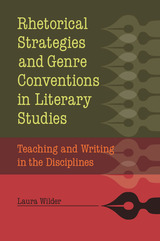 Rhetorical Strategies and Genre Conventions in Literary Studies: Teaching and Writing in the Disciplines
Laura Wilder
Southern Illinois University Press, 2012 Laura Wilder fills a gap in the scholarship on writing in the disciplines and writing across the curriculum with this thorough study of the intersections between scholarly literary criticism and undergraduate writing in introductory literature courses. Rhetorical Strategies and Genre Conventions in Literary Studies is the first examination of rhetorical practice in the research and teaching of literary study and a detailed assessment of the ethics and efficacy of explicit instruction in the rhetorical strategies and genre conventions of the discipline. Using rhetorical analysis, ethnographic observation, and individual interviews, Wilder demonstrates how rhetorical conventions play a central, although largely tacit, role in the teaching of literature and the evaluation of student writing. Wilder follows a group of literature majors and details their experiences. Some students received experimental, explicit instruction in the special topoi, while others received more traditional, implicit instruction. Arguing explicit instruction in disciplinary conventions has the potential to help underprepared students, Wilder explores how this kind of instruction may be incorporated into literature courses without being overly reductive. Taking into consideration student perspectives, Wilder makes a bold case for expanding the focus of research in writing in the disciplines and writing across the curriculum in order to grasp the full complexity of disciplinary discourse.
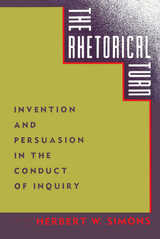 The Rhetorical Turn: Invention and Persuasion in the Conduct of Inquiry
Edited by Herbert W. Simons
University of Chicago Press, 1990 We have only recently started to challenge the notion that "serious" inquiry can be free of rhetoric, that it can rely exclusively on "hard" fact and "cold" logic in support of its claims. Increasingly, scholars are shifting their attention from methods of proof to the heuristic methods of debate and discussion—the art of rhetoric—to examine how scholarly discourse is shaped by tropes and figures, by the naming and framing of issues, and by the need to adapt arguments to ends, audiences, and circumstances. Herbert W. Simons and the contributors to this important collection of essays provide impressive evidence that the new movement referred to as the rhetorical turn offers a rigorous way to look within and across the disciplines.
The Rhetorical Turn moves from biology to politics via excursions into the rhetorics of psychoanalysis, decision science, and conversational analysis. Topics explored include how rhetorical invention guides scientific invention, how rhetoric assists political judgment, and how it integrates varying approaches to meta-theory. Concluding with four philosophical essays, this volume of case studies demonstrates how the inventive and persuasive dimensions of scholarly discourse point the way to forms of argument appropriate to our postmodern age.
 Rhetorical Vectors of Memory in National and International Holocaust Trials
Marouf A. Hasian Jr.
Michigan State University Press, 2006 During the past several decades, the twentieth century Holocaust has become a defining event in many histories. This newfound respect for the Judeocide has been cathartic for both individuals and communities, in that it provides evidence that audiences around the world are rethinking the significance of the World War II narratives of bystanders, perpetrators, and victims. Given the complexities of these issues, scholars who are interested in studying Holocaust memory make choices about the questions on which they focus, the artifacts they select for analysis, and the perspectives they want to present.
Hasian reviews how national and international courts have used Holocaust trials as forums for debates about individuated justice, historical record keeping, and pedagogical memory work. He concludes that the trials involving Auschwitz, Demjanjuk, Eichmann, Finta, Nuremberg, Irving, Kastner, Keegstra, Sawoniuk, and Zündel are highly problematic. The author provides a rhetorical analysis of holocaust trials as a way of looking into the question of what role court proceedings play in the creation of Holocaust collective memories.
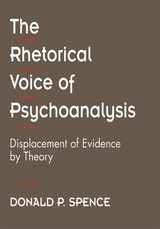 The Rhetorical Voice of Psychoanalysis: Displacement of Evidence by Theory
Donald Spence
Harvard University Press, 1994 As psychoanalysis approaches its second century, it seems no closer to being a science than when Freud first invented the discipline. All the clinical experience of the past hundred years, Donald Spence tells us in this trenchant book, has not overcome a tendency to decouple theory from evidence. Deprived of its observational base, theory operates more like shared fantasy. In support of this provocative claim, Spence mounts a powerful critique of the way psychoanalysis functions—as a clinical method and as a scholarly discipline or “science.” In the process, he prescribes an antidote for the uncontrolled rhetoric that currently governs psychoanalytic practice.
The reliance on rhetoric is the problem Spence identifies, and he attributes the troubling lack of progress in psychoanalysis to its outmoded method of data collection and its preference for fanciful argument over hard fact. Writing to Jung in 1911, Freud admitted that he “was not at all cut out to be an inductive researcher—I was entirely meant for intuition.” His intuitive approach led him to retreat form traditional Baconian principles of inductive investigation and to move toward a more Aristotelian approach that emphasized choice specimens and favorite examples, played down replication, and depended on arguments based on authority. Detailing this development, with particular attention to the role of self-analysis in the Freudian myth and the evidential drawbacks of the case study genre, Spence shows how psychoanalysis was set on its present course and how rhetorical maneuvers have taken the place of evidence.
With this diagnosis, Spence offers a remedy—an example of the sort of empirical research that can transform clinical wisdom into useful knowledge. His book holds out the hope that, by challenging the traditions and diminishing the power rhetoric, psychoanalysis can remain a creative enterprise, but one based on a solid scientific foundation.
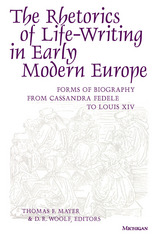 The Rhetorics of Life-Writing in Early Modern Europe: Forms of Biography from Cassandra Fedele to Louis XIV
Thomas Mayer and D. R. Woolf, Editors
University of Michigan Press, 1995 Lives as lived and lives as written are never one and the same. To turn the first into the second one must introduce "fiction" into the "fact" of the actual existence; this is never more true than during the Renaissance, when multiformity was the rule. The Rhetorics of Life-Writing in Early Modern Europe explores the ways in which authors and their subjects constructed images for themselves, and some of the ways in which those images worked.
The volume is especially timely in light of the growing interest in "microhistory," and in the histories that are emerging from nonliterary documents. Chapters consider numerous genres, including hagiography, epistolary and verse biography, and less familiar forms such as parodic prosopography, life-writing in funeral sermons, and comic martyrology.
Contributors to the volume come from history, art history, and literature, and they include F.W. Conrad, Sheila ffolliott, Robert Kolb, James Mehl, Diana Robin, T.C. Price Zimmerman, and Elizabeth Goldsmith and Abby Zanger, among others.
Thomas F. Mayer is Associate Professor of History, Augustana College. D. R. Woolf is Professor of History, Dalhousie University.
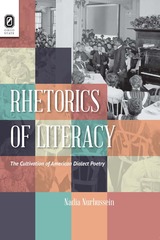 Rhetorics of Literacy: The Cultivation of American Dialect Poetry
Nadia Nurhussein
Ohio State University Press, 2013 Rhetorics of Literacy: The Cultivation of American Dialect Poetry explores the production and reception of dialect poetry in late nineteenth- and early twentieth-century America and investigates the genre’s rhetorical interest in where sound meets print. Dialect poetry’s popularity stems not only from its use as an entertaining distraction from “serious” poetry, but as a surprisingly complicated pedagogical tool collaborating with elite literary culture. Indeed, the intersections of the oral and textual aspects of the dialect poem, visible in both its composition and its reception, resulted in confusing and contradictory interactions with the genre. In this innovative study, Nadia Nurhussein demonstrates how an art form that appears to be most closely linked to the vernacular is in fact preoccupied with investigating its distance from it. Although dialect poetry performance during this period has garnered more attention than the silent reading of it, the history of dialect poetry’s reception proves that readers invited the challenge of printed dialect into their lives in unexpected places, such as highbrow magazines and primary school textbooks. Attentiveness to the appearances of dialect poetry in print—in books, pamphlets, magazines, newspapers, and other media—alongside its recitation are necessary to an understanding of its cultural impact. Recontextualizing familiar and neglected poets, Rhetorics of Literacy proposes new literary genealogies and throws light upon the cultural and literary relevance of the laborious and strange reading practices associated with dialect poetry that made it distinct from other popular literary genres.
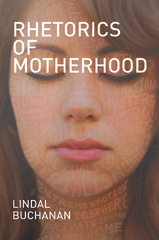 Rhetorics of Motherhood
Lindal Buchanan
Southern Illinois University Press, 2013 Becoming a mother profoundly alters one’s perception of the world, as Lindal Buchanan learned firsthand when she gave birth. Suddenly attentive to representations of mothers and mothering in advertisements, fiction, film, art, education, and politics, she became intrigued by the persuasive force of the concept of motherhood, an interest that unleashed a host of questions: How is the construct defined? How are maternal appeals crafted, presented, and performed? What do they communicate about gender and power? How do they affect women? Her quest for answers has produced Rhetorics of Motherhood, the first book-length consideration of the topic through a feminist rhetorical lens. Although both male and female rhetors employ motherhood to promote themselves and their agendas, Buchanan argues it is particularly slippery terrain for women—on the one hand, affording them authority and credibility but, on the other, positioning them disadvantageously within the gendered status quo. Rhetorics of Motherhood investigates that paradox by detailing the cultural construction and performance of the Mother in American public discourse, tracing its use and impact in three case studies, and by theorizing how, when, and why maternal discourses work to women’s benefit or detriment. In the process, the reader encounters a fascinating array of issues—including birth control, civil rights, and abortion—and rhetors, ranging from Diane Nash and Margaret Sanger to Sarah Palin and Michelle Obama. As Buchanan makes clear, motherhood is a rich site for investigating the interrelationships among gender, power, and public discourse. Her latest book contributes to the discipline of rhetoric by attending to and making a convincing case for the significance of this understudied subject. With its examination of timely controversies, contemporary and historical figures, and powerful women, Rhetorics of Motherhood will appeal to a wide array of readers in rhetoric, communications, American studies, women’s studies, and beyond.
 Rhetorics of Refusal: Medical Dissent and the US-Somali Diaspora
Kari Campeau
Ohio State University Press, 2025 Rhetorics of Refusal focuses on a recent public health crisis—Minnesota’s 2017 measles outbreak—to recast vaccine refusals less as products of poor health literacy or disinformation and more as strategic and generative acts of noncompliance. The outbreak, which primarily affected unvaccinated Somali children, occurred at the nexus of declining vaccination rates, spiking autism concerns, antivaccination predation, and a fraying public health infrastructure. However, during a year-long ethnographic study at a Somali health center, Kari Campeau found that personal stories from parents offered a much different picture of vaccine refusal than the one painted by news media. Tracking refusals across four sites, Campeau argues for the importance of approaching refusals as rhetorical and participatory strategies that hold institutions accountable, press for change, and practice care within emergent biosocial communities. Moreover, she views refusal as necessary and potentially transformative in situations where refusers have little access to power or platform. By contextualizing refusals in longer cultural and political histories, Campeau unsettles traditional narratives of medical dissent while offering new entry points into discussions on racialized biopolitics, care, disability, and public health.
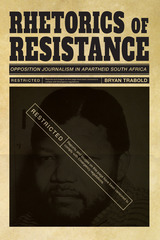 Rhetorics of Resistance: Opposition Journalism in Apartheid South Africa
Bryan Trabold
University of Pittsburgh Press, 2018 The period of apartheid was a perilous time in South Africa’s history. This book examines the tactics of resistance developed by those working for the Weekly Mail and New Nation, two opposition newspapers published in South Africa in the mid- and late 1980s. The government, in an attempt to crack down on the massive political resistance sweeping the country, had imposed martial law and imposed even greater restrictions on the press. Bryan Trabold examines the writing, legal, and political strategies developed by those working for these newspapers to challenge the censorship restrictions as much as possible—without getting banned. Despite the many steps taken by the government to silence them, including detaining the editor of New Nation for two years and temporarily closing both newspapers, the Weekly Mail and New Nation not only continued to publish but actually increased their circulations and obtained strong domestic and international support. New Nation ceased publication in 1994 after South Africa made the transition to democracy, but the Weekly Mail, now the Mail & Guardian, continues to publish and remains one of South Africa’s most respected newspapers.
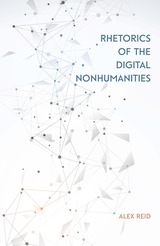 Rhetorics of the Digital Nonhumanities
Alex Reid
Southern Illinois University Press, 2021 Redefining writing and communication in the digital cosmology
In Rhetorics of the Digital Nonhumanities, author Alex Reid fashions a potent vocabulary from new materialist theory, media theory, postmodern theory, and digital rhetoric to rethink the connections between humans and digital media. Addressed are the familiar concerns that scholars have with digital culture: how technologies affect attention spans, how digital media are used to compose, and how digital rhetoric is taught.
Rhetoric is now regularly defined as including human and nonhuman actors. Each actor influences the thoughts, arguments, and sentiments that journey through systems of processors, algorithms, humans, air, and metal. The author’s arguments, even though they are unnerving, orient rhetorical practices to a more open, deliberate, and attentive awareness of what we are truly capable of and how we become capable. This volume moves beyond viewing digital media as an expression of human agency. Humans, formed into new collectives of user populations, must negotiate rather than command their way through digital media ecologies.
Chapters centralize the most pressing questions: How do social media algorithms affect our judgment? How do smart phones shape our attention? These questions demand scholarly practice for attending the world around us. They explore attention and deliberation to embrace digital nonhuman composition. Once we see this brave new world, Reid argues, we are compelled to experiment.
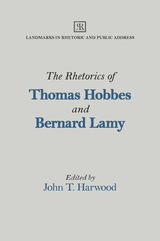 The Rhetorics of Thomas Hobbes and Bernard Lamy
John T. Harwood
Southern Illinois University Press, 1986 Makes accessible to modern readers the 17th-century rhetorics of Thomas Hobbes (1588–1677) and Bernard Lamy (1640–1715) Hobbes’ A Briefe of the Art of Rhetorique, the first English translation of Aristotle’s rhetoric, reflects Hobbes’ sense of rhetoric as a central instrument of self-defense in an increasingly fractious Commonwealth. In its approach to rhetoric, which Hobbes defines as “that Faculty by which wee understand what will serve our turne, concerning any subject, to winne beliefe in the hearer,” the Briefe looks forward to Hobbes’ great political works De Cive and Leviathan. Published anonymously in France as De l’art de parler, Lamy’s rhetoric was translated immediately into English as The Art of Speaking. Lamy’s long association with the Port Royalists made his works especially attractive to English readers because Port Royalists were engaged in a vicious quarrel with the Jesuits during the last half of the 17th century.
 Rhetorics of Value: Exhibition Design and Communication in Museums and Beyond
Corinne A. Kratz
Duke University Press, 2025 In Rhetorics of Value, Corinne A. Kratz explores how exhibition design creates and conveys values that have the potential to touch, educate, and engage visitors. Drawing on case studies from the Victoria and Albert Museum, museums in South Africa and Kenya, a Hawaiian resort hotel, and the Smithsonian’s National Museum of African American History and Culture, among others, Kratz shows how exhibits help shape and narrate cultural categories, values, and histories while provoking questions and evoking memories and experiences. She crosses contexts to consider ethnographic, history, and art exhibits in national and community museums and other display settings. Through these examples, Kratz traces how exhibition designers combine objects, texts, images, lighting, audio, space, and narratives to craft a complex, multilayered communicative form that visitors experience as they move through museums. By investigating the relationship between audience reception and exhibition design strategies, Kratz contends that through design, exhibits can shape the ways we know, the stories we tell, and our contours of meaning and engagement.
 Rheumatic Fever and Streptococcal Infection: Unraveling the Mysteries of a Dread Disease
Benedict F. Massell, M.D.
Harvard University Press, 1997 This is a historical review of the development of our knowledge of the clinical picture, etiology, pathogenesis, and prevention of rheumatic fever and rheumatic heart disease over the past four centuries. Benedict Massell examines the major contributions of both clinicians and investigators to our current understanding of rheumatic fever as a separate disease form.
Elucidating many facts about this dread disease, Massell examines the frequent epidemics in training camps during World War II, discusses our growing understanding of the pathogenesis and mechanisms by which streptococcal infections cause the disease, and shows the important progress made in prevention through the use of penicillin and other antibiotics. He includes a discussion of the many problems which can hinder our understanding and control of this disease, as well as recent promising developments in the clarification of the molecular structure of the streptococcal protein and the possible application of this information to the development of a safe and effective vaccine for the prevention of streptococcal infection.
 Rheumatic Fever in America and Britain: A Biological, Epidemiological, and Medical History
Peter C. English
Rutgers University Press, 1999 Rheumatic Fever in America and Britain is the first book to examine comprehensively a disease that has been a moving target for physicians and health care workers. A disease of skin, brain, heart, connective tissue, blood, tonsils, and joints bound to a member of the streptococcus family of bacteria, this illness has practically disappeared from the present-day scene. Yet in 1940 more than one million Americans suffered from the heart disease that followed the ravages of rheumatic fever. It struck nearly 2 percent of all school-aged children, filling hospitals, convalescent homes, and special schools. Rheumatic fever rose in prevalence throughout the nineteenth century, reaching its peak in that century's last decades, and then steadily declined-both in occurrence and severity-throughout the twentieth century. In the nineteenth century, acute rheumatic fever was largely a disease of children and young adults. Another remarkable epidemiological change occurred during the twentieth century; rheumatic fever shifted its character, became milder, and in doing so allowed its victims to live longer, if disabled lives. As this disease so altered, adults increasingly became its victims. Dr. Peter C. English explores both the shifting biological nature of this disease and the experiences of physicians and patients who fought its ravages. Using insights from biology, epidemiology, and social history, Dr. English-both a physician and medical historian-is uniquely suited to unravel this disease's epidemiological and cultural complexities.
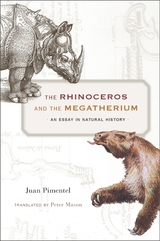 The Rhinoceros and the Megatherium: An Essay in Natural History
Juan Pimentel
Harvard University Press, 2017 One animal left India in 1515, caged in the hold of a Portuguese ship, and sailed around Africa to Lisbon—the first of its species to see Europe for more than a thousand years. The other crossed the Atlantic from South America to Madrid in 1789, its huge fossilized bones packed in crates, its species unknown. How did Europeans three centuries apart respond to these two mysterious beasts—a rhinoceros, known only from ancient texts, and a nameless monster? As Juan Pimentel explains, the reactions reflect deep intellectual changes but also the enduring power of image and imagination to shape our understanding of the natural world.
We know the rhinoceros today as “Dürer’s Rhinoceros,” after the German artist’s iconic woodcut. His portrait was inaccurate—Dürer never saw the beast and relied on conjecture, aided by a sketch from Lisbon. But the influence of his extraordinary work reflected a steady move away from ancient authority to the dissemination in print of new ideas and images. By the time the megatherium arrived in Spain, that movement had transformed science. When published drawings found their way to Paris, the great zoologist Georges Cuvier correctly deduced that the massive bones must have belonged to an extinct giant sloth. It was a pivotal moment in the discovery of the prehistoric world.
The Rhinoceros and the Megatherium offers a penetrating account of two remarkable episodes in the cultural history of science and is itself a vivid example of the scientific imagination at work.
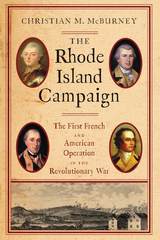 The Rhode Island Campaign: The First French and American Operation in the Revolutionary War
Christian M. McBurney
Westholme Publishing, 2011 The Marquis de Lafayette and the French Navy join Nathanael Green, John Sullivan, and a Continental Army to Attach a British Stronghold in New England
On July 29, 1778, a powerful French naval squadron sailed confidently to the entrance of Narragansett Bay. Its appearance commenced the first joint French and American campaign of the Revolutionary War. The new allies’ goal was to capture the British garrison at Newport, Rhode Island. With British resolve reeling from the striking patriot victory at Saratoga the previous autumn, this French and American effort might just end the war. As the French moved into the bay, surprised British captains scuttled or burned many of their vessels rather than risk capture, resulting in the most significant loss of warships suffered by the British navy during the war. French Admiral Comte d’Estaing then turned to sea to engage the main British fleet but his ships were scattered and damaged by a huge storm. After his flagship and two other ships were attacked, d’Estaing’s squadron was taken out of the campaign. The American army under General John Sullivan, meanwhile, was stranded on a small island near Newport without the expected French naval support. When they tried to retreat off the island, British and Hessian regulars were sent to destroy Sullivan’s army; instead of a rout, a running battle ensued that lasted for more than six hours. Continentals, brimming with confidence after their training during the winter of Valley Forge, once more proved that they were an effective fighting force. While the Rhode Island Campaign ended in failure for the Americans and French, there were positive signs for the future of the alliance and the Revolution. The Rhode Island Campaign: The First French and American Operation of the Revolutionary War unravels one of the most complex and multi-faceted events of the war, one which combined land and sea strategies and featured controversial decisions on both sides. Many prominent patriots participated, including Nathanael Greene, Marquis de Lafayette, John Hancock, and Paul Revere. Most important, while the campaign’s failure led to harsh criticism of the French in some quarters, leaders such as Greene, Lafayette, and George Washington steadfastly worked to ensure that the alliance would remain intact, knowing that the next joint operation could well succeed. Relying on in-depth research from American, French, British, and German original sources, author Christian McBurney has written the most authoritative book on this fascinating episode in American history.
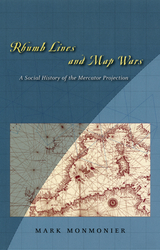 Rhumb Lines and Map Wars: A Social History of the Mercator Projection
Mark Monmonier
University of Chicago Press, 2004 In Rhumb Lines and Map Wars, Mark Monmonier offers an insightful, richly illustrated account of the controversies surrounding Flemish cartographer Gerard Mercator's legacy. He takes us back to 1569, when Mercator announced a clever method of portraying the earth on a flat surface, creating the first projection to take into account the earth's roundness. As Monmonier shows, mariners benefited most from Mercator's projection, which allowed for easy navigation of the high seas with rhumb lines—clear-cut routes with a constant compass bearing—for true direction. But the projection's popularity among nineteenth-century sailors led to its overuse—often in inappropriate, non-navigational ways—for wall maps, world atlases, and geopolitical propaganda.
Because it distorts the proportionate size of countries, the Mercator map was criticized for inflating Europe and North America in a promotion of colonialism. In 1974, German historian Arno Peters proffered his own map, on which countries were ostensibly drawn in true proportion to one another. In the ensuing "map wars" of the 1970s and 1980s, these dueling projections vied for public support—with varying degrees of success.
Widely acclaimed for his accessible, intelligent books on maps and mapping, Monmonier here examines the uses and limitations of one of cartography's most significant innovations. With informed skepticism, he offers insightful interpretations of why well-intentioned clerics and development advocates rallied around the Peters projection, which flagrantly distorted the shape of Third World nations; why journalists covering the controversy ignored alternative world maps and other key issues; and how a few postmodern writers defended the Peters worldview with a self-serving overstatement of the power of maps. Rhumb Lines and Map Wars is vintage Monmonier: historically rich, beautifully written, and fully engaged with the issues of our time.
Rhyme and Reason in Reading and Spelling
Lynette Bradley
University of Michigan Press, 1985 Nursery rhymes have been told to children for centuries. Many people think that they are just meant to make children smile. However, preschool children's awareness of rhyme and alliteration has an important influence on their success in learning to read and to spell. In Rhyme and Reason in Reading and Spelling, the authors explore this causal hypothesis using a new research design of combining longitudinal methods with intervention, and they provide strong evidence to show that there is a positive relationship between recognizing similar sounds, as found in nursery rhymes, and learning to read and to spell. The authors also investigate the relationship of this skill to children's learning difficulties. This is the first volume in the International Academy for Research in Learning Disabilities Monograph series.
Rhymes in the Flow: How Rappers Flip the Beat
Macklin Smith and Aurko Joshi
University of Michigan Press, 2020 Despite its global popularity, rap has received little scholarly attention in terms of its poetic features. Rhymes in the Flow systematically analyzes the poetics (rap beats, rhythms, rhymes, verse and song structures) of many notable rap songs to provide new insights on rap artistry and performance. Defining and describing the features of what rappers commonly call flow, the authors establish a theory of the rap line as they trace rap’s deepest roots and stylistic evolution—from Anglo-Saxon poetry to Lil Wayne—and contextualize its complex poetics. Rhymes in the Flow helps explain rap’s wide appeal by focusing primarily on its rhythmic and thematic power, while also claiming its historical, cultural, musical, and poetic importance.
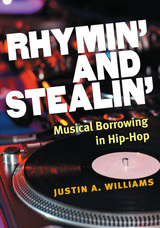 Rhymin' and Stealin': Musical Borrowing in Hip-Hop
Justin A. Williams
University of Michigan Press, 2014 Rhymin’ and Stealin’begins with a crucial premise: the fundamental element of hip-hop culture and aesthetics is the overt use of preexisting material to new ends. Whether it is taking an old dance move for a breakdancing battle, using spray paint to create street art, quoting from a famous speech, or sampling a rapper or 1970s funk song, hip-hop aesthetics involve borrowing from the past. By appropriating and reappropriating these elements, they become transformed into something new, something different, something hip-hop. Rhymin’ and Stealin’ is the first book-length study of musical borrowing in hip-hop music, which not only includes digital sampling but also demonstrates a wider web of references and quotations within the hip-hop world. Examples from Nas, Jay-Z, A Tribe Called Quest, Eminem, and many others show that the transformation of preexisting material is the fundamental element of hip-hop aesthetics. Although all music genres use and adapt preexisting material in different ways, hip-hop music celebrates and flaunts its “open source” culture through highly varied means. It is this interest in the web of references, borrowed material, and digitally sampled sounds that forms the basis of this book—sampling and other types of borrowing becomes a framework with which to analyze hip-hop music and wider cultural trends.
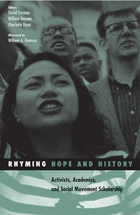 Rhyming Hope and History: Activists, Academics, and Social Movement Scholarship
David Croteau
University of Minnesota Press, 2005 Rhyming Hope and History exposes the frayed relations between activism and social movement scholarship and examines the causes and consequences of this disconnect between theory and practice. Both scholars and activists explore solutions, weighing the promise and perils of engaged theory and the barriers to meaningful collaboration. This volume asserts that partnerships among scholars and activists benefit both academic inquiry and social change efforts.
Contributors: Kevin M. Carragee, Suffolk U; Catherine Corrigall-Brown, U of California, Irvine; Myra Marx Ferree, U of Wisconsin, Madison; Richard Flacks, U of California, Santa Barbara; Adria D. Goodson; Richard Healy and Sandra Hinson, Grassroots Policy Project; David Meyer, U of California, Irvine; Cynthia Peters, Worker Education Program of the Service Employees International Union, Local 2020; Barbara Risman, North Carolina State U; Robert J. S. Ross, Clark U; Leila J. Rupp, U of California, Santa Barbara; Cassie Schwerner, Schott Foundation; Valerie Sperling, Clark U; David A. Snow, U of California, Irvine; Verta Taylor, U of California, Santa Barbara.
David Croteau is formerly associate professor of sociology and anthropology at Virginia Commonwealth University. William Hoynes is professor of sociology and director of media studies at Vassar College. Charlotte Ryan is codirector of the Media Research and Action Project at Boston College. William A. Gamson is professor of sociology at Boston College.
Rhythm & Booze: POEMS
Julie Kane
University of Illinois Press, 2003 Arranged in four parts--each associated with a particular Louisiana city--the poems in Rhythm & Booze trace the hardships and uncertainties, as well as the moments of unexpected sublimity, of a life lived in a continuous struggle between fresh starts and destructive old patterns.
Mirroring the music of New Orleans, Kane's poems combine traditional form with improvisational flourishes. Rhythm & Booze charts her progress as she undertakes a number of journeys, from youth to experience, from blues bars to college classrooms, from city to country, from chaos to something approaching peace.
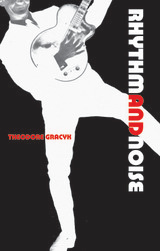 Rhythm and Noise: An Aesthetics of Rock
Theodore Gracyk
Duke University Press, 1996 You know it when you hear it, but can you say what it is? How you know? Why you either love or loathe it? What makes it original or derivative? To a music that tends to render its aficionados and detractors equally inarticulate, Theodore Gracyk brings a rare critical clarity. His book tells us once and for all what makes rock music rock. A happy marriage of aesthetic theory and the aesthetic practice that moved a generation, Rhythm and Noise is the only thorough-going account of rock as a distinct artistic medium rather than a species of popular culture.
What’s in a name? “Rock” or “Rock ’n’ Roll?” Grayck argues that rock and roll is actually a performance style, one in a number of musical styles comprising rock. What distinguishes rock, Gracyk tells us, is how it is mediated by technology: The art is in the recording. The lesson is a heady one, entailing a tour through the history of rock music from Elvis Presley’s first recordings in 1954 to Kurt Cobain’s suicide in 1994. Gracyk takes us through key recordings, lets us hear what rock musicians and their critics have to say, shows us how other kinds of music compare, and gives us the philosophical background to make more than passing sense of the medium. His work takes up the common myths and stereotypes about rock, popular and academic, and focuses on the features of the music that electrify fans and consistently generate controversy. When Elvis came to town, did southern sheriffs say that rock was barbaric and addictive? Well so did Theodor Adorno, in his way, and Allan Bloom, in his, and Gracyk takes aim at this charge as it echoes through the era of recorded music. He looks at what rock has to do with romanticism and, even more, with commercialism. And he questions the orthodoxy of making grand distinctions between “serious” and “popular” art.
Keenly attuned to the nuances of music and of all the ways that we can think about it, this exhilarating book tunes us in, as no other has, to the complex role of rock in American culture.
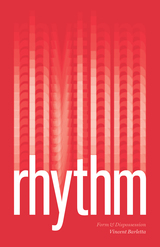 Rhythm: Form and Dispossession
Vincent Barletta
University of Chicago Press, 2020 More than the persistent beat of a song or the structural frame of poetry, rhythm is a deeply imbedded force that drives our world and is also a central component of the condition of human existence. It’s the pulse of the body, a power that orders matter, a strange and natural force that flows through us. Virginia Woolf describes it as a “wave in the mind” that carries us, something we can no more escape than we could stop our hearts from beating.
Vincent Barletta explores rhythm through three historical moments, each addressing it as a phenomenon that transcends poetry, aesthetics, and even temporality. He reveals rhythm to be a power that holds us in place, dispossesses us, and shapes the foundations of our world. In these moments, Barletta encounters rhythm as a primordial and physical binding force that establishes order and form in the ancient world, as the anatomy of lived experience in early modern Europe, and as a subject of aesthetic and ethical questioning in the twentieth century.
A wide-ranging book covering a period spanning two millennia and texts from over ten languages, Rhythm will expand the conversation around this complex and powerful phenomenon.
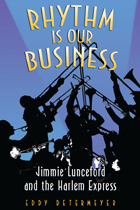 Rhythm Is Our Business: Jimmie Lunceford and the Harlem Express
Eddy Determeyer
University of Michigan Press, 2010 "The first detailed study of one of the swing era's most important bands and the first biography of its leader, Jimmie Lunceford. This is a most welcome and significant contribution to the literature of jazz, to our understanding of a vital period in jazz history, and to the music of an outstanding and unique ensemble that was emblematic of the swing era."
---Dan Morgenstern, Director, Institute of Jazz Studies, Rutgers University, and author of Living with Jazz "We were more popular than Benny Goodman! We were the first black band that played the Paramount Theater, downtown New York. Not Duke Ellington, not Count Basie. Six weeks in a row, four or five shows daily, and it was packed every day, people lining up around the corner constantly! We could outdraw any band in the country."
---Gerald Wilson "Jimmie Lunceford was a key swing-era figure, and no book covers his biography and music like this one does. Grounded in years of research and inspired by the writer's love of his subject, the book fills a critical gap in the jazz literature and will be essential reading for all swing aficionados."
---Jeffrey Magee, Associate Professor of Musicology, University of Illinois, Urbana-Champaign, and author of The Uncrowned King of Swing: Fletcher Henderson and Big Band Jazz "It was Jimmie Lunceford and his orchestra that inspired me to become a musician. I was eleven years old at the time. When I heard that band play I said to myself, 'That's for me. I want to become a musician.' I still get inspired when I listen to some of their recordings. The Jimmie Lunceford Orchestra is one of the great jazz orchestras of all time."
---Horace Silver "Jimmie Lunceford has the best of all bands. Duke is great, Basie is remarkable, but Lunceford tops them both."
---Glenn Miller In the 1930s, swing music reigned, and the Jimmie Lunceford Orchestra was the hottest and hippest attraction on the black dance circuits. Known for its impeccable appearance and infectious rhythms, Lunceford's group was able to out-swing and outdraw any band. For ten consecutive years, they were the best-loved attraction at Harlem's famed Apollo Theater. The group's hit recordings sold in the hundreds of thousands, and Jimmie Lunceford's band rivaled Ellington's for popularity in the African American community. Jimmie Lunceford was also an innovator, elevating big-band showmanship to an art and introducing such novel instruments as the electric guitar and bass. The band's arrangements, written by Sy Oliver, Edwin Wilcox, Gerald Wilson, Billy Moore, Jr., and Tadd Dameron, were daring and forward looking, influencing generations of big-band writers. Rhythm Is Our Business traces the development of the Jimmie Lunceford Orchestra from its infant days as a high school band in Memphis to its record-breaking tours across the United States, Canada, and Europe. The book also unveils Lunceford's romantic yet ill-fated involvement with Yolande Du Bois, daughter of famous writer and opinion leader W.E.B. Du Bois. And by reconstructing Lunceford's last day, the book offers a glimpse into the mysteries surrounding the leader's untimely death. This is essential reading for anyone interested in the history and legacy of swing. Eddy Determeyer has been a freelance music journalist for more than three decades. In 1984 Determeyer wrote a seven-part series on Jimmie Lunceford for the Dutch magazine Jazz Nu. Determeyer has written thousands of articles on music for a variety of Dutch publications and is the author of several books. He currently produces the Holiday for Hipsters radio show for Dutch station Concertzender. Cover image: Lunceford brass section, ca. late 1936. Left to right: Paul Webster, Eddie Durham, Sy Oliver, Elmer Crumbley, Eddie Tompkins, Russell Bowles. (Bertil Lyttkens Collection)
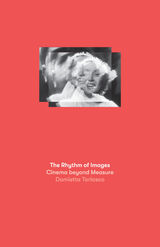 The Rhythm of Images: Cinema beyond Measure
Domietta Torlasco
University of Minnesota Press, 2021 A rigorous and imaginative inquiry into rhythm’s vital importance for film and the moving image Focusing attention on a concept much neglected in the study of film, The Rhythm of Images opens new possibilities for thinking about expanded perception and idiosyncratic modes of being. Author Domietta Torlasco engages with both philosophy and cinema to elaborate a notion of rhythm in its pre-Socratic sense as a “manner of flowing”—a fugitive mode that privileges contingency and calls up the forgotten fluidity of forms. In asking what it would mean to take this rhythm as an ontological force in its own right, she creatively draws on thinkers such as Giorgio Agamben, Roland Barthes, Gilles Deleuze, and Luce Irigaray. Rhythm emerges here as a form that eludes measure, a key to redefining the relation between the aesthetic and the political, and thus a pivotal means of resistance to power. Working with constellations of films and videos by international artists—from Michelangelo Antonioni, Jean-Luc Godard, and David Lynch to Harun Farocki and Victor Burgin, among others—Torlasco brings to bear on them her distinctive concept of rhythm with respect to four interrelated domains: life, labor, memory, and medium. With innovative readings of artworks and critical texts alike, The Rhythm of Images fashions a vibrant, provocative theory of rhythm as the excess or potential of perception. Ultimately, the book reconceives the relation between rhythm and the world-making power of images. The result is a vision of cinema as a hybrid medium endowed with the capacity not only to reinvent corporeal boundaries but also to find new ways of living together.
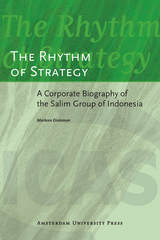 The Rhythm of Strategy: A Corporate Biography of the Salim Group of Indonesia
Marleen Dieleman
Amsterdam University Press, 2008
The Rhythm of Strategy provides a richly documented analysis of the Salim Group, one of the largest family conglomerates in Southeast Asia. Set up by Liem Sioe Liong, a Chinese emigrant, the Salim Group evolved from a small trading venture in colonial Java into one of the largest diversified businesses on the Asian continent. While the Salim Group is generally reluctant to provide information on its strategy to the general public, this volume proposes that the conglomerate’s strategy oscillates between a business model built on connections and a professional model adapted to markets. Dismissing the view that the group is a typical Chinese ethnic firm—in which the cultural values of the founding family influences corporate behavior—The Rhythm of Strategy argues that the group’s strategy made sense in the evolving institutional context of Indonesia, which is characterized by high transaction costs, corruption, political risk, and ample business opportunities to cater to a large and rapidly growing consumer base.
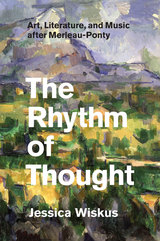 The Rhythm of Thought: Art, Literature, and Music after Merleau-Ponty
Jessica Wiskus
University of Chicago Press, 2013 Between present and past, visible and invisible, and sensation and idea, there is resonance—so philosopher Maurice Merleau-Ponty argued and so Jessica Wiskus explores in The Rhythm of Thought. Holding the poetry of Stéphane Mallarmé, the paintings of Paul Cézanne, the prose of Marcel Proust, and the music of Claude Debussy under Merleau-Ponty’s phenomenological light, she offers innovative interpretations of some of these artists’ masterworks, in turn articulating a new perspective on Merleau-Ponty’s philosophy. More than merely recovering Merleau-Ponty’s thought, Wiskus thinks according to it. First examining these artists in relation to noncoincidence—as silence in poetry, depth in painting, memory in literature, and rhythm in music—she moves through an array of their artworks toward some of Merleau-Ponty’s most exciting themes: our bodily relationship to the world and the dynamic process of expression. She closes with an examination of synesthesia as an intertwining of internal and external realms and a call, finally, for philosophical inquiry as a mode of artistic expression. Structured like a piece of music itself, The Rhythm of Thought offers new contexts in which to approach art, philosophy, and the resonance between them.
Rhythmic Gesture in Mozart: Le Nozze di Figaro and Don Giovanni
Wye Jamison Allanbrook
University of Chicago Press, 1984 Wye Jamison Allanbrook’s widely influential Rhythmic Gesture in Mozart challenges the view that Wolfgang Amadeus Mozart’s music was a “pure play” of key and theme, more abstract than that of his predecessors. Allanbrook’s innovative work shows that Mozart used a vocabulary of symbolic gestures and musical rhythms to reveal the nature of his characters and their interrelations. The dance rhythms and meters that pervade his operas conveyed very specific meanings to the audiences of the day.
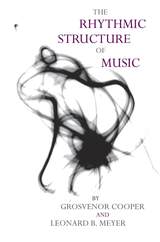 The Rhythmic Structure of Music
Grosvenor Cooper and Leonard B. Meyer
University of Chicago Press, 1963 In this influential book on the subject of rhythm, the authors develop a theoretical framework based essentially on a Gestalt approach, viewing rhythmic experience in terms of pattern perception or groupings. Musical examples of increasing complexity are used to provide training in the analysis, performance, and writing of rhythm, with exercises for the student's own work.
"This is a path-breaking work, important alike to music students and teachers, but it will make profitable reading for performers, too."—New York Times Book Review
"When at some future time theories of rhythm . . . are . . . as well understood, and as much discussed as theories of harmony and counterpoint . . . they will rest in no small measure on the foundations laid by Cooper and Meyer in this provocative dissertation on the rhythmic structure of music."—Notes
". . . . a significant, courageous and, on the whole, successful attempt to deal with a very controversial and neglected subject. Certainly no one who takes the time to read it will emerge from the experience unchanged or unmoved."—Journal of Music Theory
The late GROSVENOR W. COOPER, author of Learning to Listen, was professor of music at the University of California at Santa Cruz.
Rhythms of Resistance: African Musical Heritage in Brazil
Peter Fryer
Pluto Press, 2000 African rhythms are at the heart of contemporary black Brazilian music. Surveying a musical legacy that encompasses over 400 years, Rhythms of Resistance traces the development of this rich cultural heritage.
Acclaimed author Peter Fryer describes how slaves, mariners and merchants brought African music from Angola and the ports of East Africa to Latin America. In particular, they brought it to Brazil – today the country with the largest black population of any outside Africa. Fryer examines how the rhythms and beats of Africa were combined with European popular music to create a unique sound and dance tradition. Fryer focuses on the political nature of this musical crossover and the role of an African heritage in the cultural identity of Brazilian blacks today.
Rhythms of Resistance is an absorbing account of a theme in global music and is rich in fascinating historical detail.
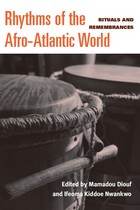 Rhythms of the Afro-Atlantic World: Rituals and Remembrances
Edited by Mamadou Diouf and Ifeoma Kiddoe Nwankwo
University of Michigan Press, 2010 "Collecting essays by fourteen expert contributors into a trans-oceanic celebration and critique, Mamadou Diouf and Ifeoma Kiddoe Nwankwo show how music, dance, and popular culture turn ways of remembering Africa into African ways of remembering. With a mix of Nuyorican, Cuban, Haitian, Kenyan, Senegalese, Trinidagonian, and Brazilian beats, Rhythms of the Afro-Atlantic World proves that the pleasures of poly-rhythm belong to the realm of the discursive as well as the sonic and the kinesthetic."
---Joseph Roach, Sterling Professor of Theater, Yale University "As necessary as it is brilliant, Rhythms of the Afro-Atlantic World dances across, beyond, and within the Black Atlantic Diaspora with the aplomb and skill befitting its editors and contributors."
---Mark Anthony Neal, author of Soul Babies: Black Popular Culture and the Post-Soul Aesthetic Along with linked modes of religiosity, music and dance have long occupied a central position in the ways in which Atlantic peoples have enacted, made sense of, and responded to their encounters with each other. This unique collection of essays connects nations from across the Atlantic---Senegal, Kenya, Trinidad, Cuba, Brazil, and the United States, among others---highlighting contemporary popular, folkloric, and religious music and dance. By tracking the continuous reframing, revision, and erasure of aural, oral, and corporeal traces, the contributors to Rhythms of the Afro-Atlantic World collectively argue that music and dance are the living evidence of a constant (re)composition and (re)mixing of local sounds and gestures. Rhythms of the Afro-Atlantic World distinguishes itself as a collection focusing on the circulation of cultural forms across the Atlantic world, tracing the paths trod by a range of music and dance forms within, across, or beyond the variety of locales that constitute the Atlantic world. The editors and contributors do so, however, without assuming that these paths have been either always in line with national, regional, or continental boundaries or always transnational, transgressive, and perfectly hybrid/syncretic. This collection seeks to reorient the discourse on cultural forms moving in the Atlantic world by being attentive to the specifics of the forms---their specific geneses, the specific uses to which they are put by their creators and consumers, and the specific ways in which they travel or churn in place. Mamadou Diouf is Leitner Family Professor of African Studies, Director of the Institute of African Studies, and Professor of History at Columbia University. Ifeoma Kiddoe Nwankwo is Associate Professor of English at Vanderbilt University. Jacket photograph by Elias Irizarry
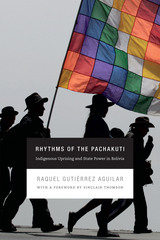 Rhythms of the Pachakuti: Indigenous Uprising and State Power in Bolivia
Raquel Gutiérrez Aguilar
Duke University Press, 2014 In the indigenous Andean language of Aymara, pachakuti refers to the subversion and transformation of social relations. Between 2000 and 2005, Bolivia was radically transformed by a series of popular indigenous uprisings against the country's neoliberal and antidemocratic policies. In Rhythms of the Pachakuti, Raquel Gutiérrez Aguilar documents these mass collective actions, tracing the internal dynamics of such disruptions to consider how motivation and execution incite political change.
"In Rhythms of the Pachakuti we can sense the reverberations of an extraordinary historical process that took place in Bolivia at the start of the twenty-first century. The book is the product of Raquel Gutiérrez Aguilar's political engagement in that historical process. . . . Though of Mexican nationality, [she] was intimately involved in Bolivian politics for many years and acquired a quasi-legendary status there as an intense, brilliant activist and radical intellectual. . . . [Her account is] . . . itself a revolutionary document. . . . Rhythms of the Pachakuti deserves to stand as a key text in the international literature of radicalism and emancipatory politics in the new century."—Sinclair Thomson, from the foreword
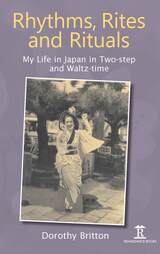 Rhythms, Rites and Rituals: My Life in Japan in Two-step and Waltz-time
Dorothy Britton
Amsterdam University Press, 2015 Including her survival of Japan’s Great Kanto Earthquake, this book is an enthralling account of Dorothy Britton’s life, loves and discoveries in an amazingly varied life and career. Bilingual from birth, she found the immense joy of blending in with peoples of different cultures simply by getting the sound right when speaking their languages to the extent that she herself sounds Japanese. While interviewing Talent Education’s Shinichi Suzuki, she realized his peerless ‘mother tongue method’ for learning the violin was ideal for foreign languages too. While composing music for many documentary films introducing Japan to the world, in Empire Photosound’s beautiful My Garden Japan she used the ancient instruments of the Imperial Court Orchestra. The film was shown daily at Montreal’s EXPO 67 where it garnered a prize. Amusing episodes and stories of fascinating people and relationships abound in the book, as do valuable insights into topics such as the post-war Occupation and its impact on everyday life, the role of women, learning Japanese, marriage customs, food and many other aspects of Japanese culture and society. Appointed a Member of the Order of the British Empire (MBE) in 2010 for her highly regarded contributions to bridging two cultures, this long-awaited memoir will be widely welcomed. Here is the remarkable and remarkably frank story of a life lived to the full by the doyenne of British residents in Japan that has benefited so many and touched the lives of countless others.
Rib Cage
Greg Miller
University of Chicago Press, 2001 Under the sway of the indelible storytelling culture of the South, Greg Miller has crafted poems from all that he hears and sees around him. Written in a language rarely heard in modern devotion, the poems in Rib Cage show old communities disintegrating, extended families dispersing, and people in economic or personal distress struggling for dignity and a clear sense of their predicaments. From plain speech to evocative lyricism, from free verse to hymnlike eloquence, Miller deftly gives a voice and a history to the places he creates, places that, in the end, expand to encompass all of humanity.
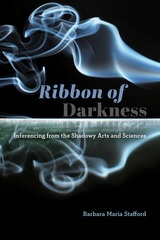 Ribbon of Darkness: Inferencing from the Shadowy Arts and Sciences
Barbara Maria Stafford
University of Chicago Press, 2019 Over the course of her career, Barbara Stafford has established herself the preeminent scholar of the intersections of the arts and sciences, articulating new theories and methods for understanding the sublime, the mysterious, the inscrutable. Omnivorous in her research, she has published work that embraces neuroscience and philosophy, biology and culture, pinpointing connections among each discipline’s parallel concerns. Ribbon of Darkness is a monument to the scope of her work and the range of her intellect. At times associative, but always incisive, the essays in this new volume take on a distinctly contemporary purpose: to uncover the ethical force and moral aspects of overlapping scientific and creative inquiries. This shared territory, Stafford argues, offers important insights into—and clarifications of—current dilemmas about personhood, the supposedly menial nature of manual skill, the questionable borderlands of gene editing, the potentially refining value of dualism, and the limits of a materialist worldview.
Stafford organizes these essays around three concepts that structure the book: inscrutability, ineffability, and intuitability. All three, she explains, allow us to examine how both the arts and the sciences imaginatively infer meaning from the “veiled behavior of matter,” bringing these historically divided subjects into a shared intellectual inquiry and imbuing them with an ethical urgency. A vanguard work at the intersection of the arts and sciences, this book will be sure to guide readers from either realm into unfamiliar yet undeniably fertile territory.
 The Ribbon of Green: Change in Riparian Vegetation in the Southwestern United States
Robert H. Webb, Stanley A. Leake, and Raymond M. Turner
University of Arizona Press, 2007 Woody wetlands constitute a relatively small but extremely important part of the landscape in the southwestern United States. These riparian habitats support more than one-third of the region’s vascular plant species, are home to a variety of wildlife, and provide essential havens for dozens of migratory animals. Because of their limited size and disproportionately high biological value, the goal of protecting wetland environments frequently takes priority over nearly all other habitat types. In The Ribbon of Green, hydrologists Robert H. Webb, and Stanley A. Leake and botanist Raymond M. Turner examine the factors that affect the stability of woody riparian vegetation, one of the largest components of riparian areas. Such factors include the diversion of surface water, flood control, and the excessive use of groundwater. Combining repeat photography with historical context and information on species composition, they document more than 140 years of change. Contrary to the common assumption of widespread losses of this type of ecosystem, the authors show that vegetation has increased on many river reaches as a result of flood control, favorable climatic conditions, and large winter floods that encourage ecosystem disturbance, germination, and the establishment of species in newly generated openings. Bringing well-documented and accessible insights to the ecological study of wetlands, this book will influence our perception of change in riparian ecosystems and how riparian restoration is practiced in the Southwest, and it will serve as an important reference in courses on plant ecology, riparian ecology, and ecosystem management.
Rice and Slaves: Ethnicity and the Slave Trade in Colonial South Carolina
Daniel C. Littlefield
University of Illinois Press, 1991 Daniel Littlefield's investigation of colonial South Carolinianss preference for some African ethnic groups over others as slaves reveals how the Africans' diversity and capabilities inhibited the development of racial stereotypes and influenced their masters' perceptions of slaves. It also highlights how South Carolina, perhaps more than anywhere else in North America, exemplifies the common effort of Africans and Europeans in molding American civilization.
Rice: Poems
Nikky Finney
Northwestern University Press, 2013 In Rice, her second volume of poetry, Nikky Finney explores the complexity of rice as central to the culture, economy, and mystique of the coastal South Carolina region where she was born and raised. The prized Carolina Gold rice paradoxically made South Carolina one of the most oppressive states for slaves and also created the remarkable Gullah culture on the coastal islands. The poems in Rice compose a profound and unflinching journey connecting family and the paradoxes of American history, from the tragic times when African slaves disembarked on the South Carolina coast to the triumphant day when Judge Ernest A. Finney Jr., Nikky’s father, was sworn in as South Carolina’s first African American chief justice. Images from the Finney family archive illustrate and punctuate this collection. Rice showcases Finney’s hungry intellect, her regional awareness and pride, and her sensitivity to how cultures are built and threatened.
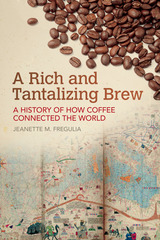 A Rich and Tantalizing Brew: A History of How Coffee Connected the World
Jeanette M. Fregulia
University of Arkansas Press, 2019 The history of coffee is much more than the tale of one luxury good—it is a lens through which to consider various strands of world history, from food and foodways to religion and economics and sociocultural dynamics. A Rich and Tantalizing Brew traces the history of coffee from its cultivation and brewing first as a private pleasure in the highlands of Ethiopia and Yemen through its emergence as a sought-after public commodity served in coffeehouses first in the Muslim world, and then traveling across the Mediterranean to Italy, to other parts of Europe, and finally to India and the Americas. At each of these stops the brew gathered ardent aficionados and vocal critics, all the while reshaping patterns of socialization. Taking its conversational tone from the chats often held over a steaming cup, A Rich and Tantalizing Brew offers a critical and entertaining look at how this bitter beverage, with a little help from the tastes that traveled with it—chocolate, tea, and sugar—has connected people to each other both within and outside of their typical circles, inspiring a new context for sharing news, conducting business affairs, and even plotting revolution.
 A Rich Bioethics: Public Policy, Biotechnology, and the Kass Council
Adam Briggle
University of Notre Dame Press, 2010
Several presidents have created bioethics councils to advise their administrations on the importance, meaning and possible implementation or regulation of rapidly developing biomedical technologies. From 2001 to 2005, the President's Council on Bioethics, created by President George W. Bush, was under the leadership of Leon Kass. The Kass Council, as it was known, undertook what Adam Briggle describes as a more rich understanding of its task than that of previous councils. The council sought to understand what it means to advance human flourishing at the intersection of philosophy, politics, science, and technology within a democratic society.
Briggle's survey of the history of U.S. public bioethics and advisory bioethics commissions, followed by an analysis of what constitutes a "rich" bioethics, forms the first part of the book. The second part treats the Kass Council as a case study of a federal institution that offered public, ethical advice within a highly polarized context, with the attendant charges of inappropriate politicization and policy irrelevance. The conclusion synthesizes the author's findings into a story about the possible relationships between philosophy and policy making.
"Adam Briggle has written a rich and sympathetic account of the President's Council on Bioethics led by Leon Kass. It puts in historical context the efforts of this council to move beyond the limited 'instrumentalist' approaches to bioethics taken by earlier commissions, toward a more philosophically serious effort to deliberate on the human goods put in play by modern biomedicine. In the process it answers many of the charges of politicization and corrects the record concerning the council's work." --Francis Fukuyama, The Johns Hopkins School of Advanced International Studies
"What an eloquent, humane, and wise book. Briggle discovers an imperfect yet fascinating effort to bring the world of biomedical research into the domain of public philosophy. His scholarship and generosity make clear that a democratic society need not be morally shackled to the realm of the possible that science is constantly expanding." --Daniel Sarewitz, Consortium for Science, Policy, and Outcomes, Arizona State University
"This is the most persuasive and thoughtful reconstruction of the Kass Council's goals and rationale that I have seen. Adam Briggle's account of the notion of a 'richer' bioethics is comprehensive an well-reasoned." --Jonathan D. Moreno, University of Pennsylvania
"Adam Briggle has written a fine book on a complex, controversial topic. He shows the wisdom of the approach to bioethics taken by the Kass Council, sets right the unfair and often nasty attacks on the council and Kass himself, and offers a perceptive and wide-ranging look at the terrain of ethics." --Daniel Callahan, The Hastings Center
Rich Wife
Emily Bludworth de Barrios
University of Wisconsin Press, 2025 Rich Wife is a collection of long poems whose structures echo the cluttered charm of a dresser adorned with hats and hairpins, vials and scarves. Traversing the interlaced landscapes of motherhood, marriage, wealth, and the unspoken contracts of domestic life, Emily Bludworth de Barrios folds personal experience into far-ranging meditations on beauty, nostalgia, power, and privilege. As much a contemplation of art as it is of womanhood, Rich Wife engages deeply with art history and aesthetics and examines the domestic as an artistic canvas in itself, where all objects and relationships become charged symbols.
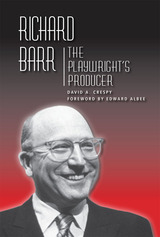 Richard Barr: The Playwright's Producer
David A. Crespy
Southern Illinois University Press, 2013
In Richard Barr: The Playwright’s Producer, author David A. Crespy investigates the career of one of the theatre’s most vivid luminaries, from his work on the film and radio productions of Orson Welles to his triumphant—and final—production of Stephen Sondheim’s Sweeney Todd: The Demon Barber of Fleet Street. Explored in detail along the way are the producer’s relationship with playwright Edward Albee, whose major plays such as A Zoo Story and Who’s Afraid of Virginia Woolf Barr was the first to produce, and his innovative productions of controversial works by playwrights like Samuel Beckett, Terrence McNally, and Sam Shepard. Crespy draws on Barr’s own writings on the theatre, his personal papers, and more than sixty interviews with theatre professionals to offer insight into a man whose legacy to producers and playwrights resounds in the theatre world. Also included in the volume are a foreword and an afterword by Edward Albee, a three-time Pulitzer Prize–winning playwright and one of Barr’s closest associates.
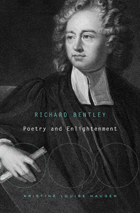 Richard Bentley: Poetry and Enlightenment
Kristine Louise Haugen
Harvard University Press, 2011 What made the classical scholar Richard Bentley deserve to be so viciously skewered by two of the literary giants of his day—Jonathan Swift in the Battle of the Books and Alexander Pope in the Dunciad? The answer: he had the temerity to bring classical study out of the scholar's closet and into the drawing rooms of polite society. Kristine Haugen’s highly engaging biography of a man whom Rhodri Lewis characterized as “perhaps the most notable—and notorious—scholar ever to have English as a mother tongue” affords a fascinating portrait of Bentley and the intellectual turmoil he set in motion.
Aiming at a convergence between scholarship and literary culture, the brilliant, caustic, and imperious Bentley revealed to polite readers the doings of professional scholars and induced them to pay attention to classical study. At the same time, Europe's most famous classical scholar adapted his own publications to the deficiencies of non-expert readers. Abandoning the church-oriented historical study of his peers, he worked on texts that interested a wider public, with spectacular and—in the case of his interventionist edition of Paradise Lost—sometimes lamentable results.
If the union of worlds Bentley craved was not to be achieved in his lifetime, his provocations show that professional humanism left a deep imprint on the literary world of England's Enlightenment.
 Richard Bong: World War II Flying Ace
Pete Barnes
Wisconsin Historical Society Press, 2009 Who would have imagined a farm boy from Wisconsin would be the greatest air hero of World War II? Richard Bong was an athletic and hard-working boy from northern Wisconsin who dreamed of flying from the first time a plane buzzed low over his family farm. When war broke out, he left behind a life of sports, deer hunting, and farm chores to fly the new P-38 Lightning for the Army Air Force. Stationed in New Guinea, Bong shot down a total of 40 Japanese flyers in under three years - beating the record of 26 set by Eddie Rickenbacker in World War I. His accomplishments won this modest pilot the title "Ace of Aces" and a Congressional Medal of Honor awarded by General MacArthur himself. Follow Bong as he navigates his way through basic training, flight school, and life on an overseas army base. Watch as he takes to the skies in his P-38 fighter jet, outflying Japanese aircraft with barrel rolls, dives, and turns. Celebrate as he meets and marries the love of his life back home in Wisconsin, and mourn as his life comes to a swift and unexpected end during an ill-fated training flight in California. Richard Bong: World War II Flying Ace is part of the Badger Biographies series for young readers. The engaging narrative is complemented by an accessible format that includes historic photographs, a glossary of terms, sidebars on life in the military, and suggestions for activities and discussion.
 Richard Cobden: Independent Radical
Nicholas C. Edsall
Harvard University Press, 1986 On Richard Cobden’s death, Charles Francis Adams noted in his diary that Cobden “had fought his way to fame and honor by the single force of his character. He had nothing to give. No wealth, no honors, no preferment. He first taught the multitude by precept and example that the right of government was not really to the few, but to the many.&rquo; Disraeli was no less acute when he remarked that Cobden was “the greatest political character that the pure middle class of this country has yet produced.”
In this biography, Nicholas Edsall demonstrates how Cobden dominated middle-class radicalism from its high-water mark in the turbulent 1840s to the quieter years immediately before the emergence of the Gladstonian Liberal party in the 1860s. Cobden headed the movement for the incorporation of his adopted city, Manchester; he was the leader of the most successful of Victorian mass agitations, the Anti-Corn Law League, and chief adviser to the movement for the repeal of newspaper taxes; he was a founder of the mid-nineteenth-century peace movement and a vocal opponent of the Crimean War; he was the chief English negotiator of the Anglo–French Commercial Treaty of 1860; and he was one of the earliest critics of the modern arms race.
This is the first full-length biography since the publication of the official life more than a century ago. Not only has a good deal of new material become available, but the passage of time has served to underscore Cobden’s significance both as a spokesman for the middle class in an era of acute class conflict and as a critic of the aims of great-power diplomacy at a time when his own country was the greatest of powers.
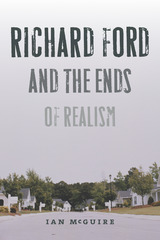 Richard Ford and the Ends of Realism
Ian McGuire
University of Iowa Press, 2015 Richard Ford and the Ends of Realism examines the work of award-winning American novelist and short story writer Richard Ford, and places it firmly in the context of contemporary debates about the role and meaning of literary realism in a postmodern environment. In this fresh study of Ford’s oeuvre, Ian McGuire argues that Ford’s work is best understood as a form of pragmatic realism and thus positions him as part of a deeply rooted and ongoing American debate about the nature of realism and pragmatism. This debate, which reaches back to transcendentalist thinkers such as Ralph Waldo Emerson and continues on to today, questions the meaning of independence and the relationship between the self and history. In this context, McGuire explores Ford’s deep engagement with American literary and philosophical traditions and repositions his work in its appropriate intellectual and literary context.
McGuire also uses this idea of pragmatic realism to mount a larger defense of contemporary realist writing and uses Ford’s example to argue that realism itself remains a useful and necessary critical category. Contemporary realism, rather than being merely conventional or reactionary, as some of its critics have called it, can offer its proponents an aesthetically and philosophically sophisticated way of engaging with and contesting the particularities of contemporary, even postmodern, experience.
In offering this new reading of Richard Ford’s fiction, as well as a fresh understanding of the realist impulse in contemporary American fiction, both become richer, more resonant, and more immediate—reaching both backward into the past and forward to involve themselves in important contemporary debates about history, postmodernity, and moral relativism.
 Richard Halliburton and the Voyage of the Sea Dragon
Gerald Max
University of Tennessee Press, 2020 Richard Halliburton (1900–1939), considered the world’s first celebrity travel writer, swam the length of the Panama Canal, recreated Ulysses’ voyages in the Mediterranean, crossed the Alps on an elephant, flew around the world in a biplane, and descended into the Mayan Well of Death, all the while chronicling his own adventures. Several books treat his life and travels, yet no book has addressed in detail Halliburton’s most ambitious expedition: an attempt to sail across the Pacific Ocean in a Chinese junk.
Set against the backdrop of a China devastated by invading Japanese armies and the storm clouds of world war gathering in Europe, Halliburton and a crew of fourteen set out to build and sail the Sea Dragon—a junk or ancient sailing ship—from Hong Kong to San Francisco for the Golden Gate International Exposition. After battling through crew conflicts and frequent delays, the Sea Dragon set sail on March 4, 1939. Three weeks after embarking, the ship encountered a typhoon and disappeared without a trace.
Richly enhanced with historic photographs, Richard Halliburton and the Voyage of the Sea Dragon follows the dramatic arc of this ill-fated expedition in fine detail. Gerry Max artfully unpacks the tensions between Halliburton and his captain, John Wenlock Welch (owing much to Welch’s homophobia and Halliburton’s unconcealed homosexuality). And while Max naturally explores the trials and tribulations of preparing, constructing, and finally launching the Sea Dragon, he also punctuates the story with the invasion of China by the Japanese, as Halliburton and his letters home reveal an excellent wartime reporter. Max mines these documents, many of which have only recently come to light, as well as additional letters from Halliburton and his crew to family and friends, photographs, films, and tape recordings, to paint an intricate portrait of Halliburton’s final expedition from inception to tragic end.
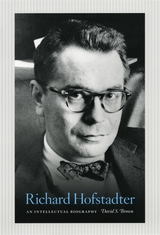 Richard Hofstadter: An Intellectual Biography
David S. Brown
University of Chicago Press, 2006 Richard Hofstadter (1916-70) was America’s most distinguished historian of the twentieth century. The author of several groundbreaking books, including The American Political Tradition, he was a vigorous champion of the liberal politics that emerged from the New Deal. During his nearly thirty-year career, Hofstadter fought public campaigns against liberalism’s most dynamic opponents, from McCarthy in the 1950s to Barry Goldwater and the Sun Belt conservatives in the 1960s. His opposition to the extreme politics of postwar America—articulated in his books, essays, and public lectures—marked him as one of the nation’s most important and prolific public intellectuals.
In this masterful biography, David Brown explores Hofstadter’s life within the context of the rise and fall of American liberalism. A fierce advocate of academic freedom, racial justice, and political pluralism, Hofstadter charted in his works the changing nature of American society from a provincial Protestant foundation to one based on the values of an urban and multiethnic nation. According to Brown, Hofstadter presciently saw in rural America’s hostility to this cosmopolitanism signs of an anti-intellectualism that he believed was dangerously endemic in a mass democracy.
By the end of a life cut short by leukemia, Hofstadter had won two Pulitzer Prizes, and his books had attracted international attention. Yet the Vietnam years, as Brown shows, culminated in a conservative reaction to his work that is still with us. Whether one agrees with Hofstadter’s critics or with the noted historian John Higham, who insisted that Hofstadter was “the finest and also the most humane intelligence of our generation,” the importance of this seminal thinker cannot be denied. As this fascinating biography ultimately shows, Hofstadter’s observations on the struggle between conservative and liberal America are relevant to our own times, and his legacy challenges us to this day.
Richard Hurdis: A Tale of Alabama
Simms, William Gilmore
University of Arkansas Press, 1995 Originally published in 1838, Richard Hurdis portrays the "wild and savage" southwest frontier of the new Republic in the 1820s and 30s. When the narrator/protagonist Richard Hurdis daringly infiltrates the criminal network in an effort the stem the corruption and to avenge the brutal murder of his best friend, the scene is set for a powerful story. In Richard Hurdis, Simms the historian, the realist, and the novelist merge to create a memorable book.
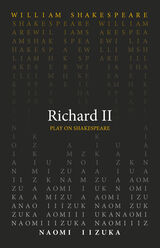 Richard II
William Shakespeare
Arizona Center for Medieval and Renaissance Studies, 2021 Shakespeare’s history play reimagined by Naomi Iizuka.
Following the events of the final two years of his life, Richard II interrogates royal power and the forces that threaten it. After banishing his cousin Henry Bolingbroke, Richard begins to lose grip of his throne and strives to find meaning in the churn and chaos of the events unfolding around him. In her new translation, Naomi Iizuka ventures into the mystery of the work, scraping away the layers of received wisdom and cracking the play open for contemporary audiences.
This translation of Richard II was written as part of the Oregon Shakespeare Festival’s Play On! project, which commissioned new translations of thirty-nine Shakespeare plays. These translations present work from “The Bard” in language accessible to modern audiences while never losing the beauty of Shakespeare’s verse. Enlisting the talents of a diverse group of contemporary playwrights, screenwriters, and dramaturges from diverse backgrounds, this project reenvisions Shakespeare for the twenty-first century. These volumes make these works available for the first time in print—a new First Folio for a new era.
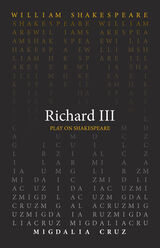 Richard III
William Shakespeare
Arizona Center for Medieval and Renaissance Studies, 2021 Playwright Migdalia Cruz breathes new life into Richard III.
Nuyorican playwright Migdalia Cruz unpacks and repositions Shakespeare’s Richard III for a twenty-first-century audience. She presents a contemporary English verse translation, faithfully keeping the poetry, the puns, and the politics of the play intact, with a rigorous and in-depth examination of Richard III—the man, the king, the outsider—who is still the only English king to have died in battle. In the Wars of the Roses, his Catholic belief in his country led to his slaughter at Bosworth’s Field by his Protestant rivals. In reimagining this text, Cruz emphasizes Richard III’s outsider status—exacerbated by his severe scoliosis, which twisted his spine—by punctuating the text with punk music from 1970s London. Cruz’s Richard is no one’s fool or lackey. He is a new kind of monarch, whose dark sense of humor and deep sense of purpose leads his charge against the society which never fully accepted him because he looked different.
This translation was written as part of the Oregon Shakespeare Festival’s Play On! project, which commissioned new translations of thirty-nine Shakespeare plays. These translations present the work of "The Bard" in language accessible to modern audiences while never losing the beauty of Shakespeare’s verse. These volumes make these works available for the first time in print—a new First Folio for a new era.
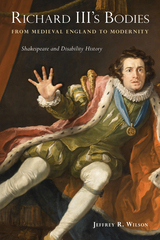 Richard III's Bodies from Medieval England to Modernity: Shakespeare and Disability History
Jeffrey R. Wilson
Temple University Press, 2022 Richard III will always be central to English disability history as both man and myth—a disabled medieval king made into a monster by his nation’s most important artist. In Richard III’s Bodies from Medieval England to Modernity, Jeffrey Wilson tracks disability over 500 years, from Richard’s own manuscripts, early Tudor propaganda, and x-rays of sixteenth-century paintings through Shakespeare’s soliloquies, into Samuel Johnson’s editorial notes, the first play produced by an African American Theater company, Freudian psychoanalysis, and the rise of disability theater. For Wilson, the changing meanings of disability created through shifting perspectives in Shakespeare’s plays prefigure a series of modern attempts to understand Richard’s body in different disciplinary contexts—from history and philosophy to sociology and medicine. While theorizing a role for Shakespeare in the field of disability history, Wilson reveals how Richard III has become an index for some of modernity’s central concerns—the tension between appearance and reality, the conflict between individual will and external forces of nature and culture, the possibility of upward social mobility, and social interaction between self and other, including questions of discrimination, prejudice, hatred, oppression, power, and justice.
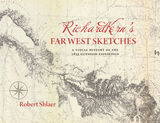 Richard Kern's Far West Sketches: A Visual History of the 1853 Gunnison Expedition
Robert Shlaer
University of Utah Press, 2020 In 1853 Richard Hovendon Kern was hired as topographer and artist for a government-sponsored reconnaissance led by Captain John Williams Gunnison. Kern sketched landscape panoramas as the group made its way from the eastern border of Kansas Territory toward the Pacific Ocean. When the expedition reached Sevier Lake, Utah, however, it was attacked by a band of Indians. Seven men, including Kern and Gunnison, were killed and Kern’s drawings were stolen. The sketches were soon recovered and eventually carried to Washington, D.C.
Robert Shlaer came across them many years later at the Newberry Library in Chicago and was inspired to locate the views depicted in the drawings and to photograph them, as nearly as was possible, from the same spot where Kern stood when he sketched them.
Richard Kern’s Far West Sketches juxtaposes Kern’s drawings with Shlaer's photographs, presenting 389 illustrations in geographic sequence from east to west, as well as a detailed narrative of the expedition. An associated website will include maps, drawings, and photographs so that they can be enlarged, compared, and studied in detail, providing an immersive experience of this important and ill-fated expedition.
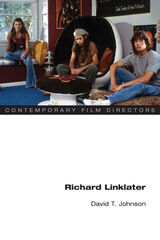 Richard Linklater
David T. Johnson
University of Illinois Press, 2012 Richard Linklater's filmmaking choices seem to defy basic patterns of authorship. From his debut with the inventive independent narrative Slacker, the Austin-based director's divergent films have included the sci-fi noir A Scanner Darkly, the socially conscious Fast Food Nation, the kid-friendly The School of Rock, the teen ensemble Dazed and Confused, and the twin romances Before Sunrise and Before Sunset. Yet throughout his varied career spanning two decades, Linklater has maintained a sense of integrity while working within a broad range of budgets, genres, and subject matters. Identifying a critical commonality among so much variation, David T. Johnson analyzes Linklater's preoccupation with the concept of time in many of his films, focusing on its many forms and aspects: the subjective experience of time and the often explicit, self-aware ways that characters discuss that experience; time and memory, and the ways that characters negotiate memory in the present; the moments of adolescence and early adulthood as crucial moments in time; the relationship between time and narrative in film; and how cinema, itself, may be becoming antiquated. While Linklater's focus on temporality often involves a celebration of the present that is not divorced from the past and future, Johnson argues that this attendance to the present also includes an ongoing critique of modern American culture. Crucially filling a gap in critical studies of this American director, the volume concludes with an interview with Linklater discussing his career.
Richard McKeon: A Study
George Kimball Plochmann
University of Chicago Press, 1990 In the contemporary atmosphere of concern with the problems of relativism, cultural pluralism, and textuality, the time is ripe for rediscovery of the thought of Richard McKeon, one of the most important but neglected American philosophers of this century. This study by George Kimball Plochmann, a former student of McKeon's, is the first book-length treatment of the ideas of this legendary teacher, scholar, and diplomat who outlined a profound and creative vision for the reorganization of all knowledge and discourse.
 Richard Neuberger: Oregon Politics and the Making of a US Senator
Stephen A. Forrester
Oregon State University Press, 2025 Richard L. Neuberger is a consequential but often forgotten figure in Oregon history, largely due to his early death at forty-seven, near the end of his only term in the United States Senate. But his life and legacy continue to inspire Oregonians and influence politicians. In 1954, Neuberger was the first Democrat elected to the Senate from Oregon in forty years. His election moved Oregon from a solidly Republican state to one where liberal Democrats could control the legislature as well as statewide offices. He was an especially productive freshman, on both Oregon natural resource issues and national matters. Neuberger was also only the second Jewish person elected to the Senate following passage of the 17th Amendment, which required the direct election of senators. Prior to entering politics, Neuberger was best known as a journalist. He was a prolific freelance writer, publishing 750 magazine articles and six books. In 1933, at the age of twenty-one, he visited Germany and penned the first firsthand account of Brownshirt violence written by an American; his editor at The Nation called it “an epoch-making article.” Neuberger was ahead of his time in his advocacy of conservation, in his political partnership with his wife Maurine—who successfully ran for his Senate seat after his untimely death in 1960—and in his outspoken liberal advocacy at a time when Oregon was considerably more conservative than it is today. Tom McCall, later one of the most influential governors in the state’s history, considered Neuberger his role model as a conservationist. In this definitive biography—more than forty years in the making—Stephen Forrester documents Neuberger’s extraordinary life and career, highlighting a legacy that includes shaping Oregon’s renowned conservation policies and developing the state’s modern Democratic party.
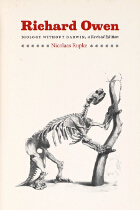 Richard Owen: Biology without Darwin
Nicolaas A. Rupke
University of Chicago Press, 2009 In the mid-1850s, no scientist in the British Empire was more visible than Richard Owen. Mentioned in the same breath as Isaac Newton and championed as Britain’s answer to France’s Georges Cuvier and Germany’s Alexander von Humboldt, Owen was, as the Times declared in 1856, the most “distinguished man of science in the country.” But, a century and a half later, Owen remains largely obscured by the shadow of the most famous Victorian naturalist of all, Charles Darwin. Publicly marginalized by his contemporaries for his critique of natural selection, Owen suffered personal attacks that undermined his credibility long after his name faded from history. With this innovative biography, Nicolaas A. Rupke resuscitates Owen’s reputation. Arguing that Owen should no longer be judged by the evolution dispute that figured in only a minor part of his work, Rupke stresses context, emphasizing the importance of places and practices in the production and reception of scientific knowledge. Dovetailing with the recent resurgence of interest in Owen’s life and work, Rupke’s book brings the forgotten naturalist back into the canon of the history of science and demonstrates how much biology existed with, and without, Darwin
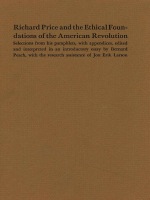 Richard Price and the Ethical Foundations of the American Revolution
William Bernard Peach, ed.
Duke University Press, 1979 Richard Price was a loyal, although dissenting, subject of Great Britain who thought the British treatment of their colonies as wrong, not only prudentially, financially, economically, militarily, and politically, but, above all, morally wrong. He expressed these views in his first pamphlet early in 1776. It concluded with a plea for the cessation of hostilities by Great Britain and reconciliation. Its analyses, arguments, and conclusions, however, along with its admiration for the colonists, their moral position and qualities, could hardly fail to contribute to their reluctant recognition that there was no real alternative to independence. Price found some of his views not only misunderstood but vilified by negative critics in the ensuing controversy. So he wrote a second pamphlet which was published in early 1777. He expanded his analysis of liberty, extended its application to the war with America, and greatly expanded his discussion of the economic impact upon Great Britain. After the war, in 1784, he published a third pamphlet on the importance of the American Revolution and the means of making it a benefit to the world, appending an extensive letter from the Frenchman, Turgot. Implicitly the letter regards Price as a perceptive theorist of the revolution; explicitly it identifies the problems facing the prospective new nation and expresses a wish that it will fulfill its role s the hope of the world. Selections in the appendices present a part of the pamphlet controversy and the selection of correspondence shows how seriously Price was regarded by Revolutionary leaders.
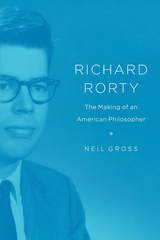 Richard Rorty: The Making of an American Philosopher
Neil Gross
University of Chicago Press, 2008 On his death in 2007, Richard Rorty was heralded by the New York Times as “one of the world’s most influential contemporary thinkers.” Controversial on the left and the right for his critiques of objectivity and political radicalism, Rorty experienced a renown denied to all but a handful of living philosophers. In this masterly biography, Neil Gross explores the path of Rorty’s thought over the decades in order to trace the intellectual and professional journey that led him to that prominence.
The child of a pair of leftist writers who worried that their precocious son “wasn’t rebellious enough,” Rorty enrolled at the University of Chicago at the age of fifteen. There he came under the tutelage of polymath Richard McKeon, whose catholic approach to philosophical systems would profoundly influence Rorty’s own thought. Doctoral work at Yale led to Rorty’s landing a job at Princeton, where his colleagues were primarily analytic philosophers. With a series of publications in the 1960s, Rorty quickly established himself as a strong thinker in that tradition—but by the late 1970s Rorty had eschewed the idea of objective truth altogether, urging philosophers to take a “relaxed attitude” toward the question of logical rigor. Drawing on the pragmatism of John Dewey, he argued that philosophers should instead open themselves up to multiple methods of thought and sources of knowledge—an approach that would culminate in the publication of Philosophy and the Mirror of Nature, one of the most seminal and controversial philosophical works of our time.
In clear and compelling fashion, Gross sets that surprising shift in Rorty’s thought in the context of his life and social experiences, revealing the many disparate influences that contribute to the making of knowledge. As much a book about the growth of ideas as it is a biography of a philosopher, Richard Rorty will provide readers with a fresh understanding of both the man and the course of twentieth-century thought.
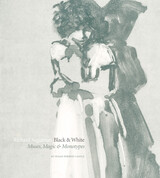 Richard Segalman Black & White: Muses, Magic & Monotypes
Susan Forrest Castle
The Artist Book Foundation, 2015 For many, the name Richard Segalman conjures up a vision of light-infused paintings of women gathered on a beach, gazing out the window of a New York City brownstone, or dressed in costumes from another era. But just as Edgar Degas, approaching his 60th year, surprised gallery goers with an exhibition not of ballerinas or race horses, but of highly atmospheric monotype landscapes, so too does Segalman surprise us with this exceptional collection of monotypes he began to produce in 1993, at nearly 60. “I reached a sort of a plateau and needed a new direction,” says the artist. “I came across a monotype… took a course… made one and I was hooked.”
The significance of Segalman’s shift into this medium is most powerfully conveyed through his arresting black-and-white prints that range from anonymous crowds on Coney Island beaches or New York City streets to a solitary figure in private contemplation. This monochromatic focus makes perfect sense: Segalman’s first gallery appearance in New York—a sold-out show that gave him the courage to embrace the life of an artist—consisted entirely of black-and-white charcoal drawings, several stunning examples of which open this book. Currently, Segalman’s work can be found in many public and private collections, including The Metropolitan Museum of Art, New York; the Museum of Fine Arts, Boston; the Hirshhorn Museum and Sculpture Garden, Washington, DC; and the Fogg Museum, Cambridge, Massachusetts.
Author Susan F. Castle’s essay about the artist and his muses—the people, places, and things for which Richard Segalman has an abiding love—illuminates the exceptional work collected for this monograph. She combines excerpts from interviews with the artist and the three master printmakers with whom he has worked in Woodstock and Brooklyn, New York, and in Santa Fe, New Mexico. In addition, Anthony Kirk’s insightful introduction provides an essential historical perspective on the artist and his printmaking process.
Richard Selzer and the Rhetoric of Surgery
Charles M. Anderson
Southern Illinois University Press, 1989
Anderson provides the context from which Selzer’s writing grows and a concept of language adequate to his purposes and accomplishments. He takes a careful look at Selzer’s writing to demonstrate that these abstract considerations do tell us why a surgeon would write. The works Anderson examines are "Jonah and the Whale" (an important early short story) and the first three essays in Mortal Lessons. These examples show the reader exactly how the symbols of literature interact directly with the world and the everyday communications of both writer and reader. According to Anderson, Mortal Lessons is also Selzer’s most artistic statement of his own sense of why and how he became a writer.
Selzer’s books include Rituals of Surgery, Mortal Lessons, Confessions of a Knife, Letters to a Young Doctor, and Taking the World in for Repairs.
Richard Sorge, the GRU and the Pacific War
John W.M. Chapman
Amsterdam University Press, 2020 Sorge’s activities between 1930 and 1942 have tended to be lauded as those of a superlative human intelligence operator and the Soviet Union’s GRU (Soviet military intelligence unit) as the optimum of spy-masters. Although it was unusual for a great deal of inside knowledge to be obtained from the Japanese side, most attention has always been paid on the German side to the roles played by representatives of the German Army in Japan. This book, supported by extensive notes and a bibliography, by contrast, highlights the friendly relations between Sorge and Paul Wenneker, German naval attaché in Japan from 1932 to 1937 and 1940–45. Wenneker, from extensive and expanding contacts inside the Japanese Navy (and also concealed contacts with the Japanese Army) supplied Sorge with key information on the depth of rivalry between the Japanese armed services.
Richard Sorge, the GRU and the Pacific War
John Chapman
Amsterdam University Press, 2020 Sorge’s activities between 1930 and 1942 have tended to be lauded as those of a superlative human intelligence operator and the Soviet Union’s GRU (Soviet military intelligence unit) as the optimum of spy-masters. Although it was unusual for a great deal of inside knowledge to be obtained from the Japanese side, most attention has always been paid on the German side to the roles played by representatives of the German Army in Japan. This book, supported by extensive notes and a bibliography, by contrast, highlights the friendly relations between Sorge and Paul Wenneker, German naval attaché in Japan from 1932 to 1937 and 1940–45. Wenneker, from extensive and expanding contacts inside the Japanese Navy (and also concealed contacts with the Japanese Army) supplied Sorge with key information on the depth of rivalry between the Japanese armed services.
 Richard Strauss: New Perspectives on the Composer and His Work
Bryan Gilliam, ed.
Duke University Press, 1997 As we approach the fiftieth anniversary of Richard Stauss’s death, scholarly interest in the composer continues to grow. Despite what was once a tendency by musicologists to overlook or deny Strauss’s importance, these essays firmly place the German composer in the musical mainstream and situate him among the most influential composers of the late nineteenth and early twentieth centuries. Originally published in 1992, this volume examines Strauss’s life and work from a number of approaches and during various periods of his long career, opening up unique corridors of insight into a crucial time in German history. Contributors discuss Strauss as a young composer steeped in a conservative instrumental tradition, as a brash young modernist tone poet of the 1890s, as an important composer of twentieth-century German opera, and as a cultural icon manipulated by the national socialists during the 1930s and early 1940s. Individual essays use Strauss’s creative work as a framework for larger musicological questions such as the tension between narrative and structure in program music, the problem of extended tonality at the turn of the century, stylistic choice versus stylistic obligation, and conflicting perspectives of progressive versus conservative music. This collection will interest Strauss scholars, musicologists, and those interested in the artistic and cultural life of Germany from 1880 through the Second World War. Contributors. Kofi Agawu, Günter Brosche, Bryan Gilliam, Stephen Hefling, James A. Hepokoski, Timothy L. Jackson, Michael Kennedy, Lewis Lockwood, Barbara A. Peterson, Pamela Potter, Reinhold Schlötterer, R. Larry Todd
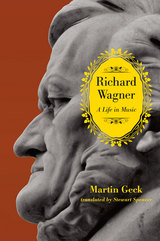 Richard Wagner: A Life in Music
Martin Geck
University of Chicago Press, 2013 Best known for the challenging four-opera cycle The Ring of the Nibelung, Richard Wagner (1813–83) was a conductor, librettist, theater director, and essayist, in addition to being the composer of some of the most enduring operatic works in history, such as The Flying Dutchman, Tannhäuser, and Tristan and Isolde. Though his influence on the development of European music is indisputable, Wagner was also quite outspoken on the politics and culture of his time. His ideas traveled beyond musical circles into philosophy, literature, theater staging, and the visual arts. To befit such a dynamic figure, acclaimed biographer Martin Geck offers here a Wagner biography unlike any other, one that strikes a unique balance between the technical musical aspects of Wagner’s compositions and his overarching understanding of aesthetics.
Wagner has always inspired passionate admirers as well as numerous detractors, with the result that he has achieved a mythical stature nearly equal to that of the Valkyries and Viking heroes he popularized. There are few, if any, scholars today who know more about Wagner and his legacy than Geck, who builds upon his extensive research and considerable knowledge as one of the editors of the Complete Works to offer a distinctive appraisal of the composer and the operas. Using a wide range of sources, from contemporary scholars to the composer’s own words, Geck explores key ideas in Wagner’s life and works, while always keeping the music in the foreground. Geck discusses not only all the major operas, but also several unfinished operas and even the composer’s early attempts at quasi-Shakespearean drama.
Richard Wagner: A Life in Music is a landmark study of one of music’s most important figures, offering something new to opera enthusiasts, Wagnerians, and anti-Wagnerians alike.
 Richard Wagner's Political Ecology
Kirsten S. Paige
University of Chicago Press A study of the deep history of the Wagnerian environmental imagination.
Richard Wagner’s operas are bursting with environmental imagery, from tittering birds to flowing rivers to towering trees. In Richard Wagner’s Political Ecology, Kirsten S. Paige asks where Wagner’s environmental imagination came from, how it was received by audience members and reconceived by stage directors, and how it refracts his politics and shapes their legacies. By tracing ecological dimensions of the composer’s essays and dramas, Paige reveals how Wagner’s environmental imagination was inextricable from broader political concerns of his time.
The book begins by examining the way Wagner’s political ecology shape-shifted across its rhetorical, musical, scenographic, and technological permutations. Although Wagner’s essays and dramas invite a range of interpretations, for Paige, they point to an all-encompassing image of music drama-as-climate. The book then turns to the ways Wagnerian drama—and opera more generally—at once participates in the industrial-technological lineage of climate change and helps spectators grapple with the challenges of living in a warming world. In providing the first close examination of Wagner’s artistic thought, practice, and reception in relation to nineteenth-century climate theory and the early history of environmentalism, Richard Wagner’s Political Ecology considers what it might mean to reimagine opera around ethical mandates of sustainability.
Richard Wright: An Introduction to the Man and His Works
Russell Carl Brignano
University of Pittsburgh Press, 1970
The first book-length study of Richard Wright (1908–1960) gives a critical, historical, and biographical perspective on the gifted African American writer. It presents Wright not only as an artist whose subjects and themes were affected by his race, but also as a sensitive and talented man who was deeply immersed in the major social and intellectual movements of his day.
Brigano discusses Wright’s artistry and his major public concerns as revealed in his novels, short stories, essays, and poetry: race relations in the United States, the role of Marxism in recent history and the future, the direction of international affairs, and the modes of modern personal and social philosophies.
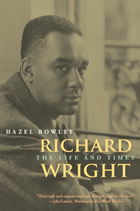 Richard Wright: The Life and Times
Hazel Rowley
University of Chicago Press, 2008 Consistently an outsider—a child of the fundamentalist South with an eighth-grade education, a self-taught intellectual, a black man married to a white woman—Richard Wright nonetheless became the unparalleled voice of his time. The first full-scale biography of the author best known for his searing novels Black Boy and Native Son, Richard Wright: The Life and Times brings the man and his work—in all their complexity and distinction—to vibrant life. Acclaimed biographer Hazel Rowley chronicles Wright’s unprecedented journey from a sharecropper’s shack in Mississippi to Chicago’s South Side to international renown as a writer and outspoken critic of racism.
Drawing on journals, letters, and eyewitness accounts, Richard Wright probes the author’s relationships with Langston Hughes and Ralph Ellison, his attraction to Communism, and his so-called exile in France. Skillfully interweaving quotes from Wright’s own writings, Rowley deftly portrays a passionate, courageous, and flawed man who would become one of our most enduring literary figures.
“Splendid. . . . Richard Wright is well written, prodigiously researched, and nicely paced, a compelling evocation of the man, his craft, and the different worlds through which he moved.”—Michael J. Ybarra, Wall Street Journal
“A welcome and illuminating work . . . [Rowley] does an outstanding job. . . . Rich and revealing.”—Megan Harlan, San Francisco Chronicle
“A magnificent biography, subtle and insightful. . . . Rowley writes with style and grace, and her research on Wright is prodigious.”—Howard Zinn, The Week
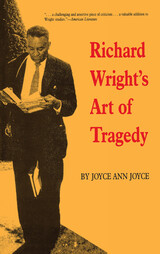 Richard Wright'S Art Of Tragedy
Joyce Ann Joyce
University of Iowa Press, 1991 In this first full-length study of Native Son, Joyce Ann Joyce provides a stylistic and thematic reading of one of the most important works of Black American literature, demonstrating how Wright's exquisite use of language merges with his subject to create an American tragedy.
Because many scholars have approached the novel from naturalistic and existential perspectives, Joyce devotes her first chapter to a discussion of the novel's critical history. She compares previous criticism to her own perspective of the novel as tragedy, describing the features shared by each as well as their points of demarcation.
In the following chapters, Joyce explores the setting and structure of Native Son, its characterization and point of view, stylistic technique, and thematic unity. As she explores Wright's technique, she illuminates the ironies and interlocking relationships which embody the salient metaphors and images in the novel. In doing so, she illustrates how each detail of language composes the pattern that makes Native Son a tragedy.
In the same way that traditional critical readings of Native Son have impeded fresh insights into the novel, criticism based on biographical perspectives has resulted in numerous misconceptions about Wright's works. Richard Wright's Art of Tragedy rectifies these misconceptions by shifting the critical emphasis to the artistic vision and masterful crafting of Wright's major work. With this significant volume, students and teachers can discern the stylistic creativity that makes Native Son not only a tragedy but a work of art.
Richer of Saint-Remi
Justin Lake
Catholic University of America Press, 2013 Building upon, but also moving beyond, previous scholarship that has focused on Richer's political allegiances and his views of kingship, this study by Justin Lake provides the most comprehensive synthesis of the History, examining Richer's use and abuse of his sources, his relationship to Gerbert, and the motives that led him to write.
Riches for the Mind and Spirit: John Marks Templeton's Treasury of Words to Help, Inspire, and Live By
John Marks Templeton
Templeton Press, 2006 This book contains a collection of John Templeton's favorite inspirational passages. “From the Bible, from philosophers and poets, and from other writers, we begin to form a clear understanding of the spiritual and ethical laws of life. The world's literature teaches us valuable lessons that no amount of money can buy. Those lessonsare there for everyone. They are free and they are priceless.”—John Marks Templeton
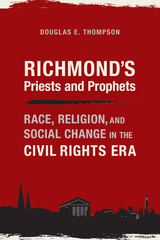 Richmond's Priests and Prophets: Race, Religion, and Social Change in the Civil Rights Era
Douglas E. Thompson
University of Alabama Press, 2017 Explores the ways in which white Christian leaders in Richmond, Virginia navigated the shifting legal and political battles around desegregation even as members of their congregations struggled with their own understanding of a segregated society
Douglas E. Thompson’s Richmond’s Priests and Prophets: Race, Religion, and Social Change in the Civil Rights Era presents a compelling study of religious leaders’ impact on the political progression of Richmond, Virginia, during the time of desegregation. Scrutinizing this city as an entry point into white Christians’ struggles with segregation during the 1950s, Thompson analyzes the internal tensions between ministers, the members of their churches, and an evolving world.
In the mid-twentieth-century American South, white Christians were challenged repeatedly by new ideas and social criteria. Neighborhood demographics were shifting, public schools were beginning to integrate, and ministers’ influence was expanding. Although many pastors supported the transition into desegregated society, the social pressure to keep life divided along racial lines placed Richmond’s ministers on a collision course with forces inside their own congregations. Thompson reveals that, to navigate the ideals of Christianity within a complex historical setting, white religious leaders adopted priestly and prophetic roles.
Moreover, the author argues that, until now, the historiography has not viewed white Christian churches with the nuance necessary to understand their diverse reactions to desegregation. His approach reveals the ways in which desegregationists attempted to change their communities’ minds, while also demonstrating why change came so slowly—highlighting the deeply emotional and intellectual dilemma of many southerners whose worldview was fundamentally structured by race and class hierarchies.
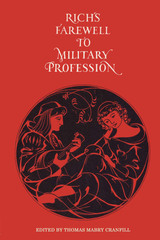 Rich’s Farewell to Military Profession, 1581
Edited by Thomas Mabry Cranfill
University of Texas Press, 1953 In a long and extraordinary career as captain, courier, privateer, real-estate agent, author, and informer, Barnaby Rich's principal achievement was the present volume—a collection of Elizabethan short stories despite its military title. Unquestionably best sellers in Rich's own time, these tales continue to delight scholars, critics, and even casual readers today. One twentieth-century critic pronounces the Farewell "a landmark in Elizabethan short-story writing" and cites Rich's "romantic charm, gaiety and lightness of touch, good vivid dialogue, directness and ease." According to Henry Seidel Canby, Rich's "humor is of the gayest. . . . There is a suggestion of Chaucer about him, and not a little of the poet's merry humor." Yet the "stories themselves are diverse." Certainly their charm and humor fetched Rich's contemporaries, who read out of existence all but one copy of the first edition and all but five of the subsequent three editions. Eight dramatists—including Shakespeare, Middleton, Shirley, and Marmion—immortalized several of the stories, however, by turning them into plays. The present edition affords an opportunity to read Rich's tales in the form in which Elizabethans knew them. The text reproduced is that of the unique copy of the first edition, which appeared in 1581. The editor's scholarly, illuminating introduction and commentary display much of the liveliness, charm, and humor for which his subject was praised and in addition tell a great deal about the life and literature of that most fascinating of periods, the Age of Elizabeth I. Scholars will be especially interested in Cranfill's revelations of how an Elizabethan story maker operated, in the complex, checkered bibliographical history of the Farewell, and above all in the considerable use Shakespeare seems to have made of Rich's tales.
 Ricin!: The Inside Story of the Terror Plot That Never Was
Lawrence Archer and Fiona Bawdon
Pluto Press, 2010 In January 2003, the British media splashed the news that anti-terror police had disrupted an Al-Qaeda cell, poised to unleash the deadly poison ricin on the capital. Police had reportedly found traces of ricin, as well as a panoply of bomb and poison-making equipment in the cell’s ‘factory of death’ – a shabby flat in north London. ‘This danger is present and real, and with us now’ announced prime minister Tony Blair.
But, when the ‘ricin plot’ came to trial at the Old Bailey, a very different story emerged: there was no ricin and no sophisticated plot. Rarely has a legal case been so shamelessly distorted by government, media and security forces to push their own ‘tough on terror’ agendas. In this meticulously researched and compellingly written book, Lawrence Archer, the jury foreman at the trial, and journalist Fiona Bawdon, give the definitive story of the ricin plot, the trial and its aftermath.
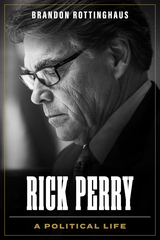 Rick Perry: A Political Life
Brandon Rottinghaus
University of Texas Press, 2024 How Rick Perry navigated and shaped Texas politics as the state’s longest serving governor. Rick Perry, the charming rancher, pilot, and politician from West Texas who was governor from 2000 to 2015, is one of the most important but polarizing figures in the state's history. Over the nearly forty years he spent in the political arena, his political instincts served as a radar primed to sense future political opportunities. Hugging the arc of Texas political change, he shifted from a rural, “blue dog” Democrat to one of the most conservative politicians the state had elected up to that time, overseeing the enactment of controversial redistricting, voting, and abortion measures. Yet his evolution was complicated and incomplete, as his stands on such topics as immigration, vaccine requirements, and the use of state funds to attract business ran into opposition from a growing and ever-more conservative wing of the Republican Party in Texas—and the nation. Rick Perry is both a biography of Perry as a politician and a study of the shifts in state politics that took place during his time in office. Demonstrating that Perry ranks among the most consequential governors in Texas history, Brandon Rottinghaus chronicles the profound ways he accumulated power and shaped the governorship.
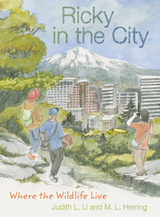 Ricky in the City: Where the Wildlife Live
Judith L. Li
Oregon State University Press, 2019 It’s early fall when Ricky and Ellie travel to Portland from their homes in the Cascade Mountains for a weekend school exchange. Much to their surprise, they find an astounding variety of wildlife in the city. With the help of their new friends, Jenny and Marcus, they explore Portland’s habitats, from its streets and gardens to woodlands, streams, and river banks. Ellie tests her bird-watching skills while Ricky learns ways to count fish in streams. Together they are fascinated by stunning wildlife in the city’s restored wetlands.
The kids find insects and reptiles moving about garden patches and bioswales, song birds and squirrels in neighborhood tree canopies, falcons and eagles crossing spacious river floodplains. As they record and map how wildlife and people are connected in these city spaces, they become community scientists, contributing to actual regional databases. After they see the young trees Marcus planted in his neighborhood, the feeders Jenny tends for hummingbirds, and the fascinating wildlife underpasses built in the wetlands, Ricky and Ellie realize there are many ways people actively care for the city’s wildlife.
In this fourth and final story of their award-winning children’s series, M. L. Herring’s vivid pen and watercolor illustrations complement the engaging storytelling of Judith Li. Readers will delight in the journal pages and maps “hand drawn” by Ricky and Ellie at the end of each chapter, while the “Dear Reader” section offers further tips for budding citizen scientists.
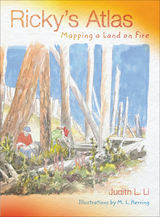 Ricky's Atlas: Mapping a Land on Fire
Li
Oregon State University Press, 2016 American Association for the Advancement of Science / Subaru SB&F Prize for Excellence in Science Books, Best Hands-On Science Book 2017
In this sequel to Ellie’s Log: Exploring the Forest Where the Great Tree Fell, Ricky Zamora brings his love of map-making and his boundless curiosity to the arid landscapes east of the Cascades Mountains. He arrives during a wild thunderstorm, and watches his family and their neighbors scramble to deal with a wildfire sparked by lightning. Joined by his friend Ellie, he sees how plants, animals, and people adjust to life with wildfires.
While hiking across a natural prairie, climbing up a fire tower, and studying historical photos and maps, Ricky and Ellie learn about the role of fire in shaping the landscape of the semi-arid plateau east of the mountains. They experience the scary days of wildfire in progress, explore a gritty site after a wildfire, and discover how some plants and animals depend on fire to survive.
Color pen-and-ink drawings accompany the text and vividly illustrate plants, animals, and events encountered in this exciting summer adventure. With his friend Ellie, Ricky creates a brightly colored diary of the fire, with maps, timelines, and sketches of what they see in this fire-prone land. Ricky’s notebook about his summer visit to his uncle’s ranch becomes an atlas of fire ecology, weather patterns, and life in the rain shadow.
Upper elementary kids will enjoy the mixture of amazing adventures with actual historical, physical, and ecological data about the region. Woven into the story are the small pleasures of ranch life, intriguing histories of Native Americans and early settlers, and almost unbelievable views of ancient fossils. Ricky and Ellie’s explorations, accompanied by their hand-written notes, introduce readers to a very special landscape and history east of the mountains.
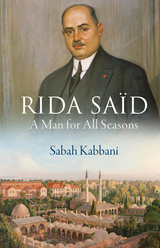 Rida Said: A Man for All Seasons
Sabah Kabbani
Haus Publishing, 2018 Like many founding fathers, Rida Saïd (1876-1946) lived a cosmopolitan life before taking on his monumental contribution to building the modern nation of Syria. Born in Damascus in 1876, Said trained as a medical doctor in Istanbul and Paris. As a young man, he served as a field doctor with the Ottoman Empire’s army in the Balkan Wars, but he soon became disillusioned about his homeland’s foreign rulers. Like other Syrians, he was opposed to the aggressive Turkish nationalism that alienated Arabs and dreamed of a more inclusive system for his people. After his medical work in Damascus during World War I, and following the collapse of the Ottoman Empire, Said took on a critical role in establishing an independent Syria: he became a pioneering educator, advocating for the importance of providing institutions to educate the Arab people. He went on to become the first head of Damascus University, and then Minister of Education. He died in 1945, a few months before Syria finally achieved independence in 1946.
Now available for the first time in English, Rida Saïd: A Man for All Seasons tells the story of this remarkable life at the heart of a nation in deep conflict. Indeed, Saïd’s story resonates profoundly today as the Syrian people struggle for a future of opportunity and respect.
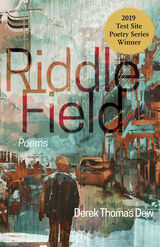 Riddle Field: Poems
Derek Thomas Dew
University of Nevada Press, 2020 Winner of the 2019 Interim Test Site Poetry Series Prize
"Dew is an exciting and complex new voice in contemporary poetry." —Publisher's Weekly
The beautifully crafted poems in Riddle Field explore two parallel themes, the impact of the impending destruction of a dam on a small town and the trauma of sexual abuse and eventual recovery from it. This work focuses on the environment, human and physical, in which the loss of nature and innocence is born and calls attention to the many ways we create both intimacy and distance when trauma is hidden or denied. Derek Thomas Dew’s language is harsh, honest, and sometimes heartbreaking. His poems capture the confusion and fatigue that must be navigated for a victim of abuse to piece himself back together and the internal strife that comes with carry-ing a traumatic secret that can no longer be ignored.
Rich with unforgettable images and the quiet strength of hard-won survival, Riddle Field tackles the complex process of achieving self-awareness and recovery in the wake of profound trauma.
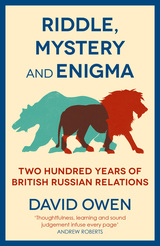 Riddle, Mystery, and Enigma: Two Hundred Years of British–Russian Relations
David Owen
Haus Publishing, 2022 A history of relations between Britain and Russia from the nineteenth century to the present.
With Riddle, Mystery, and Enigma, statesman and author David Owen tells the story of Britain’s relationship with Russia, which has been surprisingly underexplored. Through his characteristic insight and expertise, he depicts a relationship governed by principle as often as by suspicion, expediency, and necessity.
When the two nations formed a pragmatic alliance and fought together at the Battle of Navarino in Greece in 1827, it was overwhelmingly the work of the British prime minister, George Canning. His death brought about a drastic shift that would see the countries fighting on opposite sides in the Crimean War and jostling for power during the Great Game. It was not until the Russian Revolution of 1917 that another statesman had a defining impact on relations between Britain and Russia: Winston Churchill, who opposed Bolshevism yet never stopped advocating for diplomatic and military engagement with Russia. In the Second World War, he recognized early on the necessity of allying with the Soviets against the menace of Nazi Germany. Bringing us into the twenty-first century, Owen chronicles how both countries have responded to their geopolitical decline. Drawing on both imperial and Soviet history, he explains the unique nature of Putin’s autocracy and addresses Britain’s return to “blue water” diplomacy. Newly revised, this paperback edition features extended chapters on Putin’s Russia and the future of British–Russian relations after the Russo-Ukrainian War.
The Riddle of Literary Quality: A Computational Approach
Karina van Dalen-Oskam
Amsterdam University Press, 2023 What is literature? Can we measure ‘literariness’ in texts themselves? The innovative Computational Humanities project The Riddle of Literary Quality asked thousands of Dutch readers for their opinion about contemporary Dutch and translated novels. The public shared which novels they had read, what they really thought of them, and how they judged their quality. Their judgments of the same novels were compared with the results of computational analysis of the books.
Using evidence from almost 14,000 readers and building on more textual data than ever before, Van Dalen-Oskam and her team uncovered unconscious biases that shed new light on prejudices many people assumed no longer existed. This monograph explains in an accessible way how the project unfolded, which methods were used, and how the results may change the future of Literary Studies.
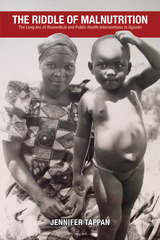 The Riddle of Malnutrition: The Long Arc of Biomedical and Public Health Interventions in Uganda
Jennifer Tappan
Ohio University Press, 2017 More than ten million children suffer from severe acute malnutrition globally each year. In Uganda, longstanding efforts to understand, treat, and then prevent the condition initially served to medicalize it, in the eyes of both biomedical personnel and Ugandans who brought their children to the hospital for treatment and care. Medicalization meant malnutrition came to be seen as a disease—as a medical emergency—not a preventable condition, further compromising nutritional health in Uganda. Rather than rely on a foreign-led model, physicians in Uganda responded to this failure by developing a novel public health program known as Mwanamugimu. The new approach prioritized local expertise and empowering Ugandan women, blending biomedical knowledge with African sensibilities and cultural competencies. In The Riddle of Malnutrition, Jennifer Tappan examines how over the course of half a century Mwanamugimu tackled the most fatal form of childhood malnutrition—kwashiorkor—and promoted nutritional health in the midst of postcolonial violence, political upheaval, and neoliberal resource constraints. She draws on a diverse array of sources to illuminate the interplay between colonialism, the production of scientific knowledge, and the delivery of health services in contemporary Africa.
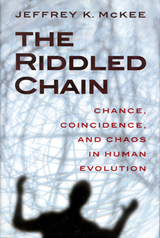 The Riddled Chain: Chance, Coincidence and Chaos in Human Evolution
McKee, Jeffrey Kevin
Rutgers University Press, 2000 Did human evolution proceed in an inevitable fashion? Can we attribute our origins solely to natural selection, or were more mischievous forces at work? These are the questions investigated by anthropologist Jeff McKee. He argues that if we were to wind back the clock to our split from ancestral apes, evolution would proceed differently. Ever since our ancestors first stood up on two feet, natural selection undoubtedly was an important factor in guiding human evolution. But McKee shakes the standard notion that natural selection steered early hominids toward particular environmental adaptations. The fossil remains of our ancestors reveal a different story one of an adaptable hominid with no particular direction. It becomes clear that the evolutionary road to Homo sapiens was not paved solely by natural selection; indeed, there was no road to follow. There was just a dim path cut out by prehistoric coincidences and contingencies. Had any link in the evolutionary chain of events been slightly different, then our species would not be as it is today . . . or our ancestors may not have survived at all. With equal doses of humor and awe, McKee illustrates how the chain of evolution has been riddled by chance, coincidence, and chaos. He uses familiar examples, noting that many of us exist as individuals because of chance meetings of our parents. From the present back through prehistory, chance is at the heart of our creation is chaos. The classic example of chaos is the butterfly effect: a single butterfly, flapping its wings, causes a tiny change in the atmosphere, which in turn amplifies to affect the course of storms on another continent. McKee ties such examples of unpredictability to fossil evidence and computer simulations, revealing the natural coincidences that shaped our evolution. Although chaos exacted an evolutionary price by limiting the powers of natural selection, it also made us what we are. One can only conclude that human beings were neither inevitable nor probable.
 Riders for God: The Story of a Christian Motorcycle Gang
Rich Remsberg
University of Illinois Press, 2000 Riders for God takes us into a world generally inaccessible to outsiders, one situated at the crossroads of two seemingly incongruous realms: motorcycle gangs and Spirit-filled Christianity.
Founded by a former biker and located in southern Indiana, the Unchained Gang is a group of former outlaw bikers, ex-convicts, and recovering addicts who are now born-again Christians. Although they have given up drugs, alcohol, tobacco, and violence they have kept their motorcycles--which they consider to be anointed--and use them as tools in their witness of the word of God as they understand it. The Unchained Gang is an outreach ministry, going into prisons and jails, biker rallies, and other places where people on the fringe are often ignored by other churches and the rest of society.
Combining powerful photographic images with gang members' first-person testimonies, Rich Remsberg shows the ironic juxtaposition of tattoos, leather vests, and the iconography of the biker world with the Christian practices of Bible study, speaking in tongues, and praying at an altar. He explores the lives of men and women who have redirected the extreme nature of their former ways.
Through their own powerful stories, they explain how the addictions and uncontrollable violence that once shaped their lives have given way to dramatic worship and zealous ministry.
An afterword by Colleen McDannell situates the Unchained Gang's
interpretation of Christian living in the larger constellation of pentecostal, born-again, fundamentalist, and mainstream churches.
Ridge Stories: Herding Hens, Powdering Pigs, and Other Recollections from a Boyhood in the Driftless
Gary Jones
Wisconsin Historical Society Press, 2019 Straight talk from up on the farm
Raised on a small dairy farm in the Driftless Area in the mid-twentieth century, Gary Jones gets real about his rural roots. In this collection of interrelated stories, Jones writes with plainspoken warmth and irreverence about farm, family, and folks on the ridge. Readers will meet Gramp Jones, whose oversized overalls saved him from losing a chunk of flesh to an irate sow; the young one-room-school teacher who helped the kids make sled jumps at recess; Charlotte, the lawn-mowing sheep who once ended up in the living room; Victor the pig-cutter, who learned his trade from folk tradition rather than vet school; and other colorful characters of the ridge. Often humorous and occasionally touching, Jones’s essays paint a vivid picture that will entertain city and country folk alike.
 Ridge Waveguides and Passive Microwave Components
J. Helszajn
The Institution of Engineering and Technology, 2000 The ridge waveguide, which is a rectangular waveguide with one or more metal inserts (ridges), is an important transmission line in microwave engineering, through which many passive components can be achieved. As such it is a well-established and widely used element in commercial electronics and communications devices. This book collects together much of the work of Professor Helszajn, an international authoriy in the field, and will enable the reader to have direct access to this material without need for exhaustive search of research papers. Generously illustrated, it is likely to become the definitive reference source on this topic. The book includes closed-form and finite element calculations of the propagation constant, attenuation and mode spectrum for the ridge waveguide, as well as power-current and power-voltage definitions of impedance. Circular polarisation is also treated. Propagation properties where the waveguide has a dielectric filler are calculated. The treatment is then extended to more complex designs, including quadruple ridge waveguides with and without a gyromagnetic filler. The text includes descriptions of many of the passive devices which can be realised using these waveguides, including isolators, phase shifters and circulators. A treatment of the finline waveguide is included as its geometry is closely related to that of the ridge waveguide, leading to components such as the 3-port finline calculator.
The Ridiculous to the Delightful: Comic Characters in Sidney’s New Arcadia
Robert Nicholas Reeves
Harvard University Press, 1974 Sir Philip Sidney’s comic technique, in particular the comic characters in the second version of his pastoral romance, is the subject of this ably written essay. Robert Nicholas Reeves begins with a re-examination of comic theory in Sidney’s Defense of Poesy, and proceeds to a reading of the humorous in the Arcadia as a happy kind of moral teaching. He discusses devices employed—irony, ridicule, deflation—and the relation of the low comic figures to the delightful elements of the main plot.
Riding
Pardis Mahdavi
Duke University Press, 2025 In Riding, Pardis Mahdavi meditates on the lessons learned over a lifetime of horseback riding and the falling, failing, and joy it brings. At once a history of Caspian horses, an exploration of Mahdavi’s Iranian-American identity and family history, and a consideration of the capacity for self-reflection and self-compassion through human-animal relationships, Riding offers a roadmap for learning to live in harmony with the self and the environment around us. Mahdavi shows how her relationship with horses gives her insights into intergenerational strength and tools for healing intergenerational trauma. Riding from the mountains of Iran to the beaches of California, Mahdavi shares her love affair with horses, rediscovers a homeland she longs for, and ultimately finds her strength.
Riding for Caesar: The Roman Emperors’ Horse Guard
Michael P. Speidel
Harvard University Press, 1994 Caesar praised them in his Commentaries. Trajan had them carved on his Column. Hadrian wrote poems about them. Well might these rulers have immortalized the horse guard, whose fortunes so closely kept pace with their own. Riding for Caesar follows these horsemen from their rally to rescue Caesar at Noviodunum in 52 BC to their last stand alongside Maxentius at the Milvian Bridge. It offers a colorful picture of these horsemen in all their changing guises and duties—as the emperor’s bodyguard or his parade troops, as a training school and officer’s academy for the Roman army, or as a shock force in the endless wars of the second and third centuries.
Written by one of the world’s leading authorities on the Roman army, this history reveals the remarkable part the horse guard played in the fate of the Roman empire.
 Riding into History: The Surprising Story of Sarah Keys Evans and the Fight to Desegregate Bus Travel
Amy Nathan with Sarah Keys Evans
Duke University Press, 2026 As a member of the integrated Women’s Army Corps, Private First Class Sarah Keys served her country as a receptionist at Fort Dix, New Jersey. When she boarded a bus home to North Carolina in 1952, she never expected to be arrested and charged with disorderly conduct for refusing to move to the rear so a white Marine could take her seat. Her landmark 1955 Civil Rights victory, “Sarah Keys v. Carolina Coach Company” not only desegregated interstate bus travel, it also provided the legal precedent needed during the 1961 Freedom Rides to pressure the Interstate Commerce Commission to properly enforce its Sarah Keys ruling. Often overlooked in many accounts of the Civil Rights era, her arrest and victory are crucial milestones in the fight against segregation. Riding into History draws on years of personal conversations with Sarah Keys Evans as well as extensive research to present a biography of this hero and her role in the struggle for civil rights alongside the long history of many other Black Americans, especially women, who protested racial segregation in interstate travel.
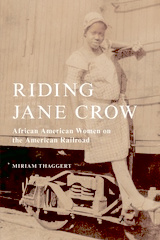 Riding Jane Crow: African American Women on the American Railroad
Miriam Thaggert
University of Illinois Press, 2022 Miriam Thaggert illuminates the stories of African American women as passengers and as workers on the nineteenth- and early-twentieth-century railroad. As Jim Crow laws became more prevalent and forced Black Americans to "ride Jim Crow" on the rails, the train compartment became a contested space of leisure and work. Riding Jane Crow examines four instances of Black female railroad travel: the travel narratives of Black female intellectuals such as Anna Julia Cooper and Mary Church Terrell; Black middle-class women who sued to ride in first class "ladies’ cars"; Black women railroad food vendors; and Black maids on Pullman trains. Thaggert argues that the railroad represented a technological advancement that was entwined with African American attempts to secure social progress. Black women's experiences on or near the railroad illustrate how American technological progress has often meant their ejection or displacement; thus, it is the Black woman who most fully measures the success of American freedom and privilege, or "progress," through her travel experiences.
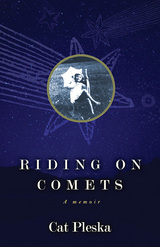 Riding on Comets: A Memoir
Cat Pleska
West Virginia University Press, 2015 Riding on Comets is the true story of an only child growing up in a working-class family during the 1950s and ‘60s. As the family storyteller, Cat Pleska whispers and shouts about her life growing up around savvy, strong women and hard-working, hard-drinking men. Unlike many family stories set within Appalachia, this story provides an uncommon glimpse into this region: not coal, but an aluminum plant; not hollers, but small-town America; not hillbillies, but a hard-working family with traditional values. From the dinner table, to the back porch, to the sprawling countryside, Cat Pleska reveals the sometimes tender, sometimes frightening education of a child who listens at the knees of these giants. She mimics and learns every nuance, every rhythm—how they laugh, smoke, cuss, fight, love, and tell stories—as she unwittingly prepares to carry their tales forward, their words and actions forever etched in her mind. And finally, she discovers a life story of her own.
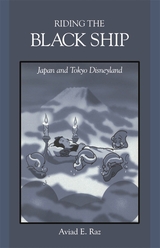 Riding the Black Ship: Japan and Tokyo Disneyland
Aviad E. Raz
Harvard University Press, 1999 In 1997, over 17 million people visited Tokyo Disneyland, making it the most popular of the many theme parks in Japan. Since it opened in 1983, Tokyo Disneyland has been analyzed mainly as an example of the globalization of the American leisure industry and its organizational culture, particularly the “company manual.” By looking at how Tokyo Disneyland is experienced by employees, management, and visitors, Aviad Raz produces not only a cultural reading of the onstage show but also an ethnographic analysis of its production by those who work there and its reception by its customers. Previous studies have seen Disneyland as a “black ship”—an exported, hegemonic model of American leisure and pop culture—that “conquered” Japan. By concentrating on the Japanese point of view, Raz shows that it is much more an example of successful domestication and that it has succeeded precisely because it has become Japanese even while marketing itself as foreign. Rather than being an agent of Americanization, Tokyo Disneyland is a simulated “America” showcased by and for the Japanese.
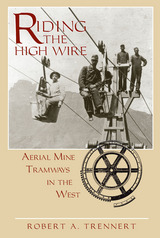 Riding the High Wire: Aerial Mine Tramways in the West
Robert A. Trennert
University Press of Colorado, 2001 Riding the High Wire is the first comprehensive history of aerial mine tramways in the American West, describing their place in the evolution of mining after 1870. Robert A. Trennert shows how the mid-nineteenth century development of wire rope manufacturing made it possible for American entrepreneurs such as Andrew S. Hallidie and Charles Huson to begin erecting single-rope tramways in the 1870s and 1880s. Their inventions were followed by the more substantial double-rope systems imported from Europe. By the turn of the century, aerial tramways were common throughout western mining regions, hauling everything from gold and silver ore to coal and salt and changing the face of the industry. Aerial mine tramways proved to have a special fascination; people often rode them for a thrill, sometimes with disastrous results. They were also very temperamental, needed constant attention, and were prone to accidents. The years between 1900 and 1920 saw the operation of some of the west's most spectacular tramways, but the decline in high-country mining beginning in the 1920s--coupled with the development of more efficient means of transportation--made this technology all but obsolete by the end of the Second World War. Historians and the general reader will be equally enthralled by Trennert's fascinating story of the rise and fall of aerial mine tramways. "Professor Trennert has explored a new area of mining history, and is to be commended for his pioneering work." --Liston Leyendecker, author of The Griffith Family and the Founding of Georgetown.
Rift
V.Y. Mudimbe
University of Minnesota Press, 1993
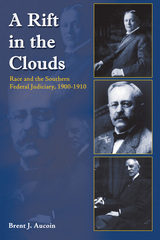 A Rift in the Clouds: Race and the Southern Federal Judiciary, 1900-1910
Brent J. Aucoin
University of Arkansas Press, 2007 A Rift in the Clouds chronicles the efforts of three white southern federal judges to protect the civil rights of African Americans at the beginning of the twentieth century, when few in the American legal community were willing to do so. Jacob Treiber of Arkansas, Emory Speer of Georgia, and Thomas Goode Jones of Alabama challenged the Supreme Court's reading of the Reconstruction amendments that were passed in an attempt to make disfranchised and exploited African Americans equal citizens of the United States. These unpopular white southerners, two of whom who had served in the Confederate Army and had themselves helped to bring Reconstruction to an end in their states, asserted that the amendments not only established black equality, but authorized the government to protect blacks. Although their rulings won few immediate gains for blacks and were overturned by the Supreme Court, their legal arguments would be resurrected, and meet with greater success, over half a century later during the civil rights movement.
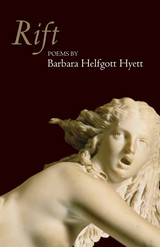 Rift: Poems
Barbara Helfgott Hyett
University of Arkansas Press, 2008 Barbara Helfgott Hyett's new collection considers, from close and afar, the elemental forces coming to bear on human character in our time. In one sense a personal explication of a long marriage and its betrayal, these stunning poems take solace in nature's steadfastness, and in the prospect of a newly resilient self, awakened to the predicament of a battered world. The title poem spills across the face of history—9/11, Hiroshima, the harrowing geological formation of earth, the sudden appearance of cave art, and ultimately, the uncertainty of God. The Daphne and Apollo sequence invents fourteen speakers, including a chisel, a river god, the sculptor, Bernini, and the poet, Ovid, each telling his own story as together they deconstruct the longstanding myth of lust gone awry. Such is the imaginative, kaleidoscopic process of Rift, in which acts of observation shatter and shift our view of experience. While we ache for the loss in these poems, Helfgott Hyett risks such honest grief that redemption comes, free standing and moral, on its own.
Rig Veda: A Metrically Restored Text with an Introduction and Notes
Barend Van Nooten and Gary Holland
Harvard University Press, 1994 This new edition of the Rgveda, the oldest Indian text in archaic Sanskrit, is the first to present the text (in Roman characters) in its original metrical arrangement and in a form that most closely approximates the pronunciation of the time of its composition. Nevertheless, as all the restorations deviating from the received traditional Samhita text are printed in italics, the traditional text can easily be reconstituted without reference to other editions. This had been sought for over a hundred years, yet a systematic restoration of the whole text has never before been attempted. Added is a study of the meters found in the text, their patterns and anomalies, and an appendix with a detailed discussion of each metrically problematic line.
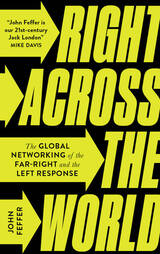 Right Across the World: The Global Networking of the Far-Right and the Left Response
John Feffer
Pluto Press, 2021 'John Feffer is our 21st-century Jack London' - Mike Davis
In a post-Trump world, the right is still very much in power. Significantly more than half the world’s population currently lives under some form of right-wing populist or authoritarian rule. Today’s autocrats are, at first glance, a diverse band of brothers. But religious, economic, social and environmental differences aside, there is one thing that unites them - their hatred of the liberal, globalized world. This unity is their strength, and through control of government, civil society and the digital world they are working together across borders to stamp out the left.
In comparison, the liberal left commands only a few disconnected islands - Iceland, Mexico, New Zealand, South Korea, Spain and Uruguay. So far they have been on the defensive, campaigning on local issues in their own countries. This narrow focus underestimates the resilience and global connectivity of the right. In this book, John Feffer speaks to the world’s leading activists to show how international leftist campaigns must come together if they are to combat the rising tide of the right.
A global Green New Deal, progressive trans-European movements, grassroots campaigning on international issues with new and improved language and storytelling are all needed if we are to pull the planet back from the edge of catastrophe. This book is both a warning and an inspiration to activists terrified by the strengthening wall of far-right power.
 Right and Wrong
Charles Fried
Harvard University Press, 1978 Some acts are wrong, even if they have good results, and some are right even if the world would have been a better place without them. Here is a cogent and lucid argument for a system of morality that makes place for that which is right or wrong in itself and not just according to consequences. Charles Fried develops in this book a conception of right and wrong that supports judgments on subjects as various as tax structure, self-defense, kidney transplants, tort liability, and freedom of speech.
Fried begins by examining the demands of morality in two quite different cases: harming the innocent (where ordinary moral consciousness suggests absolutes) and lying (where consequences seem pertinent). Upon this foundation he elaborates a theory of rights that accounts for the obligation to contribute to the welfare of others but accounts also for the limits of that obligation. Comparisons and contrasts are drawn to economic theories of rights, and to the writings of Dworkin, Nozick, and Rawls. Finally, Fried considers how choices made within personal and professional roles—by friends and kin, by doctors and lawyers—are susceptible of moral judgment.
Right and Wrong will have an impact on ethical, legal, and social theory, and will profit anyone thinking about the requirements of a moral life.
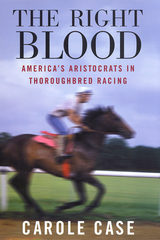 The Right Blood: America's Aristocrats in Thoroughbred Racing
Case, Carole
Rutgers University Press, 2000 The spectacle of thoroughbred horses dashing powerfully and gracefully down the track is one of the most stimulating and beautiful of all athletic events. Yet despite its mass appeal, an elite group of men and a few women have traditionally controlled the sport. What are the origins and personalities behind the sport in America?
In The Right Blood, Carole Case examines the history of American thoroughbred racing, in particular the story behind the Jockey Club. Formed in 1894 by the nation’s richest, most powerful, and often most notorious men, the Jockey Club continues to this day to exert a formidable influence on this “sport of kings.”
Using Jockey Club documents and personal interviews, Case traces the history of how club members created and enforced the rules governing racing, from the first decades of the twentieth century to the present day. She tells of how club members once assigned racing dates, issued licenses, appointed judges, and dictated who could train, ride, and own thoroughbred horses. Case also describes how many of them exploited the poor to work their horses, defeated those who posed a threat to their interests, and excluded people of different backgrounds from horse racing ¾ all in the name of improving the breed and promoting the sport. The Jockey Club maintained this stranglehold on the sport until 1950, when an appellate court took away its licensing power. Perhaps most interestingly, the men of the Jockey Club became and continue as keepers of the registry of North American thoroughbred horses, The American Stud Book, determining which horses can ¾ and cannot ¾ be considered thoroughbreds.
Written for the general reader interested in the sport and its culture, The Right Blood is an engaging look behind the scenes of American horse racing.
The Right Hand
Christina Pugh
Tupelo Press, 2024 Poems that radiate with incredible artistic vision and writerly craft.
Pain, piercing, and language: with urgent lyricism and lacunae on the page, The Right Hand explores the physical, emotional, and philosophical experiences of chronic pain, bodywork (especially acupuncture), and healing. In the second half of the collection, the poet spends extended time with Bernini's sculpture of St. Teresa in Ecstasy in Rome, finding this famous scene of wounding to be in dialogue with her own experience of pain, as well as her suspension between languages and spiritual isolation. In The Right Hand, the hidden sites of the body speak, and Bernini’s centuries-old arrow pierces us with hurting eloquence.
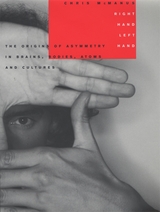 Right Hand, Left Hand: The Origins of Asymmetry in Brains, Bodies, Atoms and Cultures
Chris McManus
Harvard University Press, 2002 A labor of love and enthusiasm as well as deep scientific knowledge, Right Hand, Left Hand takes the reader on a trip through history, around the world, and into the cosmos, to explore the place of handedness in nature and culture. Chris McManus considers evidence from anthropology, particle physics, the history of medicine, and the notebooks of Leonardo to answer questions like: Why are most people right-handed? Are left-handed people cognitively different from right-handers? Why is the heart almost always on the left side of the body? Why does European writing go from left to right, while Arabic and Hebrew go from right to left? Why do tornadoes spin counter-clockwise in the northern hemisphere and clockwise in the southern hemisphere? And how do we know that Jack the Ripper was left-handed?
McManus reminds readers that distinctions between right and left have been profoundly meaningful--imbued with moral and religious meaning--in societies throughout history, and suggests that our preoccupation with laterality may originate in our asymmetric bodies, which emerged from 550 million years of asymmetric vertebrate evolution, and may even be linked to the asymmetric structure of matter. With speculations embedded in science, Right Hand, Left Hand offers entertainment and new insight to scientists and general readers alike.
 Right Here I See My Own Books: The Woman's Building Library at the World's Columbian Exposition
Sarah Wadsworth
University of Massachusetts Press, 2012 On May 1, 1893, the World's Columbian Exposition in Chicago opened its gates to an expectant public eager to experience firsthand its architectural beauty, technological marvels, and vast array of cultural treasures gathered from all over the world. Among the most popular of the fair's attractions was the Woman's Building, a monumental exhibit hall filled with the products of women's labor—including more than 8,000 volumes of writing by women. Right Here I See My Own Books examines the progress, content, and significance of this historic first effort to assemble a comprehensive library of women's texts.
By weaving together the behind-the-scenes story of the library's formation and the stories between the covers of books on display, Wadsworth and Wiegand firmly situate the Woman's Building Library within the historical context of the 1890s. Interdisciplinary in approach, their book demonstrates how this landmark collection helped consolidate and institutionalize women's writing in conjunction with the burgeoning women's movement and the professionalization of librarianship in late nineteenth-century America.
Americans in this period debated a wide range of topics, including women's rights, gender identity, racial politics, nationalism, regionalism, imperialism, and modernity. These debates permeated the cultural climate of the Columbian Exposition. Wadsworth and Wiegand's book illuminates the range and complexity of American women's responses to these issues within a public sphere to which the Woman's Building provided unprecedented access.
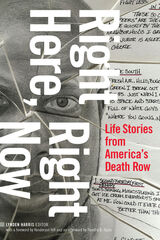 Right Here, Right Now: Life Stories from America's Death Row
Lynden Harris, editor
Duke University Press, 2021 Upon receiving his execution date, one of the thousands of men living on death row in the United States had an epiphany: “All there ever is, is this moment. You, me, all of us, right here, right now, this minute, that's love.” Right Here, Right Now collects the powerful, first-person stories of dozens of men on death rows across the country. From childhood experiences living with poverty, hunger, and violence to mental illness and police misconduct to coming to terms with their executions, these men outline their struggle to maintain their connection to society and sustain the humanity that incarceration and its daily insults attempt to extinguish. By offering their hopes, dreams, aspirations, fears, failures, and wounds, the men challenge us to reconsider whether our current justice system offers actual justice or simply perpetuates the social injustices that obscure our shared humanity.
 Right in Michigan's Grassroots: From the KKK to the Michigan Militia
JoEllen McNergney Vinyard
University of Michigan Press, 2011 "A real contribution to Michigan history that gets to the root of the movements in twentieth-century American history that upon reflection can bring a certain discomfort and unease."
---Francis X. Blouin, Director of the Bentley Historical Library, University of Michigan Throughout the twentieth century, Michigan became home to nearly every political movement in America that emerged from the grassroots. Citizens organized on behalf of concerns on the "left," on the "right," and in the "middle of the road." Right in Michigan's Grassroots: From the KKK to the Michigan Militia is about the people who supported movements that others, then and later, would denounce as disgraceful---members of the Ku Klux Klan during the 1920s, the followers of Father Charles Coughlin in the 1930s, anti-Communists and the John Birch Society in the post–World War II era, and the members of the Michigan Militia who first appeared in the 1990s. The book explores the complex historical circumstances in Michigan that prompted the emergence of these organizations and led everyday men and women to head off, despite ridicule or condemnation, with plans unsanctioned and tactics unorthodox, variously brandishing weapons of intimidation, discrimination, fearmongering, and terror. Drawing heavily on primary sources, including the organizations' files and interviews with some of their leaders and surviving members, JoEllen Vinyard provides a far more complete portrait of these well-known extremist groups than has ever been available.
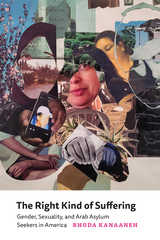 The Right Kind of Suffering: Gender, Sexuality, and Arab Asylum Seekers in America
Rhoda Kanaaneh
University of Texas Press, 2023 2024 Evelyn Shakir Non-Fiction Academic Award, The Arab American National Museum An examination of Arab asylum seekers who feel compelled to package their tales of disenfranchisement and suffering to satisfy a deeply reluctant immigration system. From the overloaded courts with their constantly changing dates and appointments to the need to prove oneself the “right” kind of victim, the asylum system in the United States is an exacting and drawn-out immigration process that itself results in suffering. When anthropologist Rhoda Kanaaneh became a volunteer interpreter for Arab asylum seekers, she learned how applicants were pushed to craft specific narratives to satisfy the system’s requirements. Kanaaneh tells the stories of four Arab asylum seekers who sought protection in the United States on the basis of their gender or sexuality: Saud, who relived painful memories of her circumcision and police harassment in Sudan and then learned to number and sequence these recollections; Fatima, who visited doctors and therapists in order to document years of spousal abuse without over-emphasizing her resulting mental illness; Fadi, who highlighted the homophobic motivations that provoked his arrest and torture in Jordan, all the while sidelining connected issues of class and racism; and Marwa, who showcased her private hardships as a lesbian in a Shiite family in Lebanon and downplayed her environmental activism. The Right Kind of Suffering is a compelling portrait of Arab asylum seekers whose success stories stand in contrast with those whom the system failed.
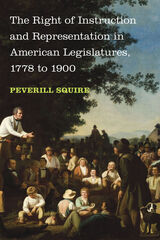 The Right of Instruction and Representation in American Legislatures, 1778 to 1900
Peverill Squire
University of Michigan Press, 2021 The Right of Instruction and Representation in American Legislatures, 1778 to 1900 provides a comprehensive analysis of the role constituent instructions played in American politics for more than a hundred years after its founding. Constituent instructions were more widely issued than previously thought, and members of state legislatures and Congress were more likely to obey them than political scientists and historians have assumed. Peverill Squire expands our understanding of constituent instructions beyond a handful of high-profile cases, through analyses of two unique data sets: one examining more than 5,000 actionable communications (instructions and requests) sent to state legislators by constituents through town meetings, mass meetings, and local representative bodies; the other examines more than 6,600 actionable communications directed by state legislatures to their state’s congressional delegations. He draws the data, examples, and quotes almost entirely from original sources, including government documents such as legislative journals, session laws, town and county records, and newspaper stories, as well as diaries, memoirs, and other contemporary sources. Squire also includes instructions to and from Confederate state legislatures in both data sets. In every respect, the Confederate state legislatures mirrored the legislatures that preceded and followed them.
 The Right of Publicity: Privacy Reimagined for a Public World
Jennifer E. Rothman
Harvard University Press, 2018 Who controls how one’s identity is used by others? This legal question, centuries old, demands greater scrutiny in the Internet age. Jennifer Rothman uses the right of publicity—a little-known law, often wielded by celebrities—to answer that question, not just for the famous but for everyone. In challenging the conventional story of the right of publicity’s emergence, development, and justifications, Rothman shows how it transformed people into intellectual property, leading to a bizarre world in which you can lose ownership of your own identity. This shift and the right’s subsequent expansion undermine individual liberty and privacy, restrict free speech, and suppress artistic works.
The Right of Publicity traces the right’s origins back to the emergence of the right of privacy in the late 1800s. The central impetus for the adoption of privacy laws was to protect people from “wrongful publicity.” This privacy-based protection was not limited to anonymous private citizens but applied to famous actors, athletes, and politicians. Beginning in the 1950s, the right transformed into a fully transferable intellectual property right, generating a host of legal disputes, from control of dead celebrities like Prince, to the use of student athletes’ images by the NCAA, to lawsuits by users of Facebook and victims of revenge porn.
The right of publicity has lost its way. Rothman proposes returning the right to its origins and in the process reclaiming privacy for a public world.
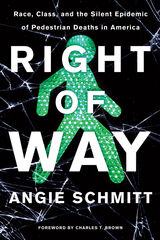 Right of Way: Race, Class, and the Silent Epidemic of Pedestrian Deaths in America
Angie Schmitt, foreword by Charles T. Brown
Island Press, 2020 The face of the pedestrian safety crisis looks a lot like Ignacio Duarte-Rodriguez. The 77-year old grandfather was struck in a hit-and-run crash while trying to cross a high-speed, six-lane road without crosswalks near his son’s home in Phoenix, Arizona. He was one of the more than 6,000 people killed while walking in America in 2018. In the last ten years, there has been a 50 percent increase in pedestrian deaths.
The tragedy of traffic violence has barely registered with the media and wider culture. Disproportionately the victims are like Duarte-Rodriguez—immigrants, the poor, and people of color. They have largely been blamed and forgotten.
In Right of Way, journalist Angie Schmitt shows us that deaths like Duarte-Rodriguez’s are not unavoidable “accidents.” They don’t happen because of jaywalking or distracted walking. They are predictable, occurring in stark geographic patterns that tell a story about systemic inequality. These deaths are the forgotten faces of an increasingly urgent public-health crisis that we have the tools, but not the will, to solve.
Schmitt examines the possible causes of the increase in pedestrian deaths as well as programs and movements that are beginning to respond to the epidemic. Her investigation unveils why pedestrians are dying—and she demands action. Right of Way is a call to reframe the problem, acknowledge the role of racism and classism in the public response to these deaths, and energize advocacy around road safety. Ultimately, Schmitt argues that we need improvements in infrastructure and changes to policy to save lives.
Right of Way unveils a crisis that is rooted in both inequality and the undeterred reign of the automobile in our cities. It challenges us to imagine and demand safer and more equitable cities, where no one is expendable.
 Right On?: Political Change and Continuity in George W. Bush's America
Edited by Iwan Morgan, Philip D. Davies
University of London Press, 2006 George W. Bush is widely regarded as a president of transformative significance. This volume analyzes the ambitious but controversial agenda that he has pursued at home and abroad. The contributors assess Bush's presidency in terms of its historical context, first-term record, and second-term prospects. They consider his administration from the perspective of its engagement in an ideologically driven project to consolidate conservative ascendancy over U.S. politics and public policy and to promote America's interests and values in the unipolar world. They evaluate the elements of political change and continuity in George Bush's America. The book also focuses on the extent to which the Bush agenda is new or a continuation of previous trends. Contributors also examine how far Bush has succeeded in overcoming political, institutional, and international resistance to his conservative agenda, and they evaluate his prospects for further success.
Contributors include John Dumbrell (University of Leicester, UK), Martin Durham (University of Wolverhampton, UK), Godfrey Hodgson (Rothermere American Institute, Oxford University, UK), Steven Hurst (Manchester Metropolitan University, UK), Klaus Larres (Royal Holloway College, University of London, UK), Bob McKeever (University of Reading, UK), John Owens (University of Westminster, UK), Rob Singh (Birkbeck College, University of London, UK), and Alex Waddan (University of Sunderland, UK).
Right or Wrong, God Judge Me: THE WRITINGS OF JOHN WILKES BOOTH
John W. Booth
University of Illinois Press, 1997 Superbly edited and annotated, this collection of the writings of John Wilkes Booth constitutes a major new primary source that contributes to scholarship on Abraham Lincoln, the Civil War, and nineteenth-century theater history. The nearly seventy documents--more than half published here for the first time--include love letters written during the summer of 1864, when Booth was conspiring against Lincoln, explicit statements of Booth's political convictions, and the diary he kept during his futile twelve-day flight after the assassination.
 The Right to Be Helped: Deviance, Entitlement, and the Soviet Moral Order
Maria Cristina Galmarini-Kabala
Northern Illinois University Press, 2017 “Doesn’t an educated person—simple and working, sick and with a sick child—doesn’t she have the right to enjoy at least the crumbs at the table of the revolutionary feast?” Disabled single mother Maria Zolotova-Sologub raised this question in a petition dated July 1929 demanding medical assistance and a monthly subsidy for herself and her daughter. While the welfare of able-bodied and industrially productive people in the first socialist country in the world was protected by a state-funded insurance system, the social rights of labor-incapacitated and unemployed individuals such as Zolotova-Sologub were difficult to define and legitimize.
The Right to Be Helped illuminates the ways in which marginalized members of Soviet society understood their social rights and articulated their moral expectations regarding the socialist state between 1917 and 1950. Maria Galmarini-Kabala shows how definitions of state assistance and who was entitled to it provided a platform for policymakers and professionals to engage in heated debates about disability, gender, suffering, and productive and reproductive labor. She explores how authorities and experts reacted to requests for support, arguing that responses were sometimes characterized by an enlightened nature and other times by coercive discipline, but most frequently by a combination of the two.
By focusing on the experiences of behaviorally problematic children, unemployed single mothers, and blind and deaf adults in several major urban centers, this important study shows that the dialogue over the right to be helped was central to defining the moral order of Soviet socialism. It will appeal to scholars and students of Russian history, as well as those interested in comparative disabilities and welfare studies.
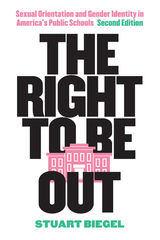 The Right to Be Out: Sexual Orientation and Gender Identity in America's Public Schools, Second Edition
Stuart Biegel
University of Minnesota Press, 2018 An updated edition of this measured, practical, and timely guide to LGBT rights and issues for educators and school officials
With ongoing battles over transgender rights, bullying cases in the news almost daily, and marriage equality only recently the law of the land, the information in The Right to Be Out could not be more timely or welcome. In an updated second edition that explores the altered legal terrain of LGBT rights for students and educators, Stuart Biegel offers expert guidance on the most challenging concerns in this fraught context.
Taking up the pertinent questions likely to arise regarding curriculum and pedagogy in the classroom, school sports, and transgender issues, Biegel reviews the dramatic legal developments of the past decades, identifies the principles at work, and analyzes the policy considerations that result from these changes. Central to his work is an understanding of the social, political, and personal tensions regarding the nature and extent of the right to be out, which includes both the First Amendment right to express an identity and the Fourteenth Amendment right to be treated equally. Acknowledging that LGBT issues affect people of every sexual orientation and gender identity, Biegel provides a road map of viable strategies for school officials and educators. The Right to Be Out, informed by the latest research-based findings, advances the proposition that a safe and supportive educational environment, built upon shared values and geared toward a greater appreciation of our pluralistic society, can lead to a better world for everyone.
 A Right to Childhood: The U.S. Children's Bureau and Child Welfare, 1912-46
Kriste Lindenmeyer
University of Illinois Press, 1997 Warring factions in the United States like to use children as weapons
for their political agendas as Americans try to determine the role--if
any--of the federal government in the lives of children. But what is the
history of child welfare policy in the United States? What can we learn
from the efforts to found the U.S. Children's bureau in 1903 and its eventual
dismemberment in 1946?
This is the first history of the Children's Bureau and the first in-depth
examination of federal child welfare policy from the perspective of that
agency. Its goal was to promote "a right to childhood," and
Kriste Lindenmeyer unflinchingly examines the successes--and the failures--of
the Bureau. She analyzes infant and maternal mortality, the promotion
of child health care, child labor reform, and the protection of children
with "special needs" from the Bureau's inception through the
Depression, and through all the legislation that impacted on its work
for children. The meaningful accomplishments and the demise of the Children's
Bureau have much to tell parents, politicians, and policy-makers everywhere.
Right to Counsel in American Courts
William M. Beaney
University of Michigan Press, 1955 The Right to Counsel in American Courts is the first detailed treatment of all aspects of this vital right as extended in theory and practice by state and federal courts. Addressed primarily to students of constitutional law and of the administration of justice, it is also a valuable tool for practicing lawyers because of its thoughtful organization and wealth of citations.
 The Right to Die with Dignity: An Argument in Ethics, Medicine, and Law
Cohen-Almagor, Raphael
Rutgers University Press, 2001 There are few issues more divisive than what has become known as “the right to die.” One camp upholds “death with dignity,” regarding the terminally ill as autonomous beings capable of forming their own judgment on the timing and process of dying. The other camp advocates “sanctity of life,” regarding life as intrinsically valuable, and that should be sustained as long as possible. Is there a right answer?
Raphael Cohen-Almagor takes a balanced approach in analyzing this emotionally charged debate, viewing the dispute from public policy and international perspectives. He offers an interdisciplinary, compelling study in medicine, law, religion, and ethics. It is a comprehensive look at the troubling question of whether physician-assisted suicide should be allowed. Cohen-Almagor delineates a distinction between active and passive euthanasia and discusses legal measures that have been invoked in the United States and abroad. He outlines reasons non-blood relatives should be given a role in deciding a patient’s last wishes. As he examines euthanasia policies in the Netherlands and the 1994 Oregon Death with Dignity Act, the author suggests amendments and finally makes a circumscribed plea for voluntary physician-assisted suicide.
|
|
